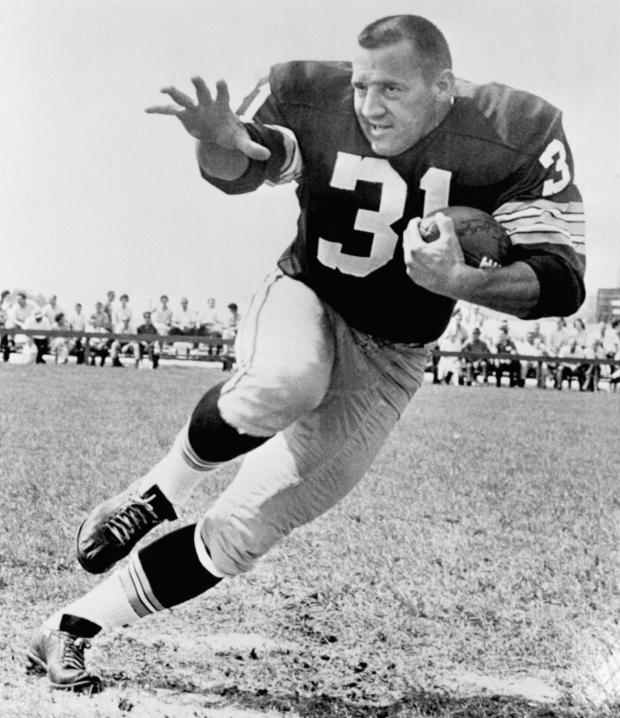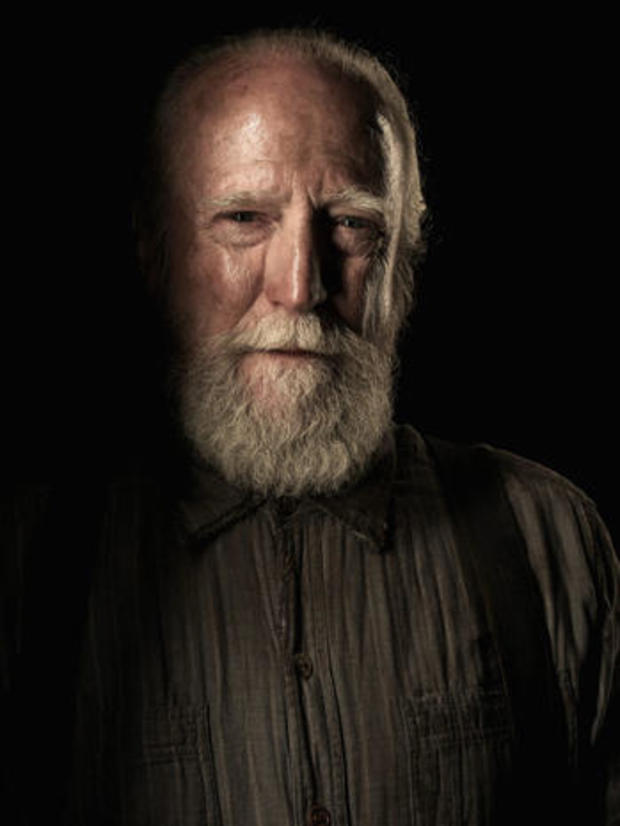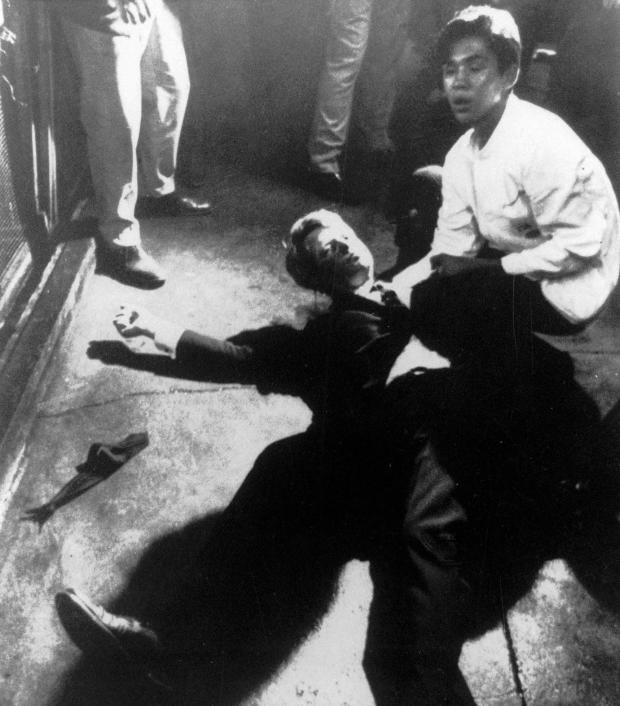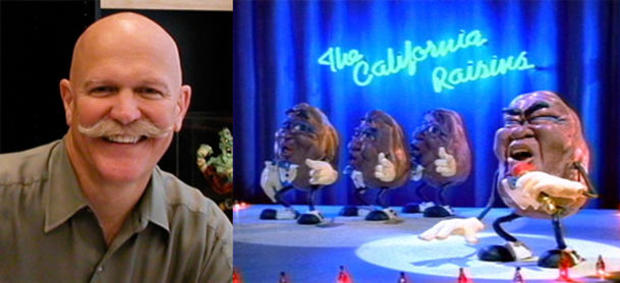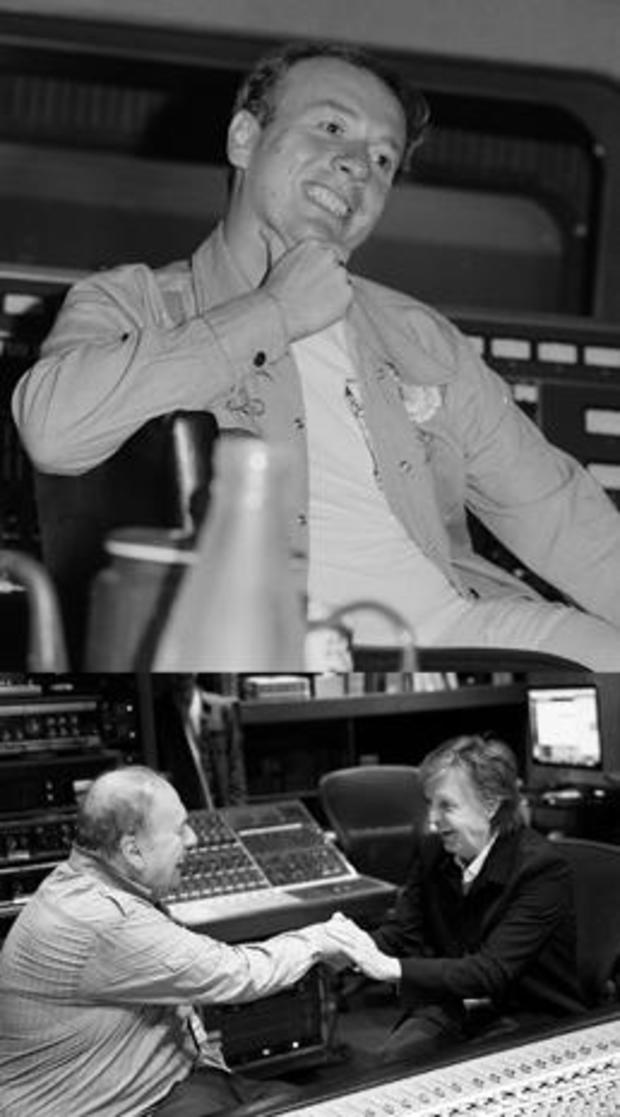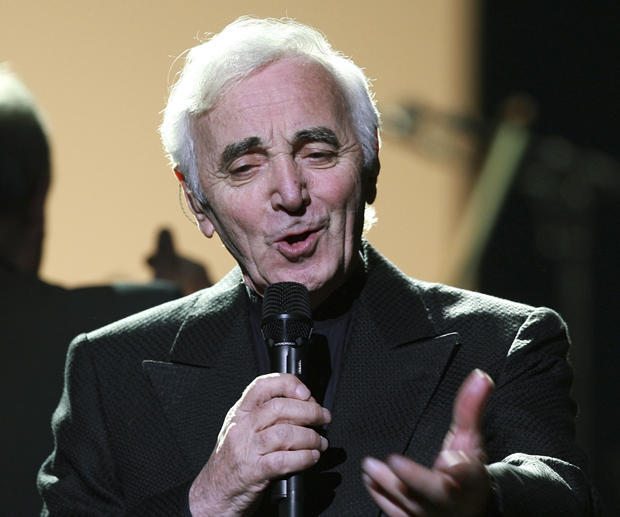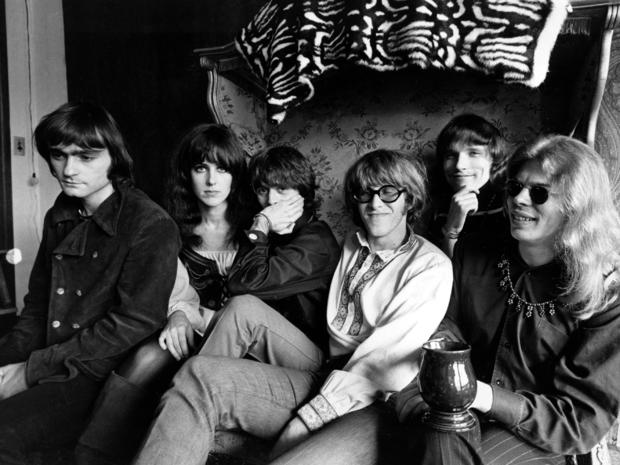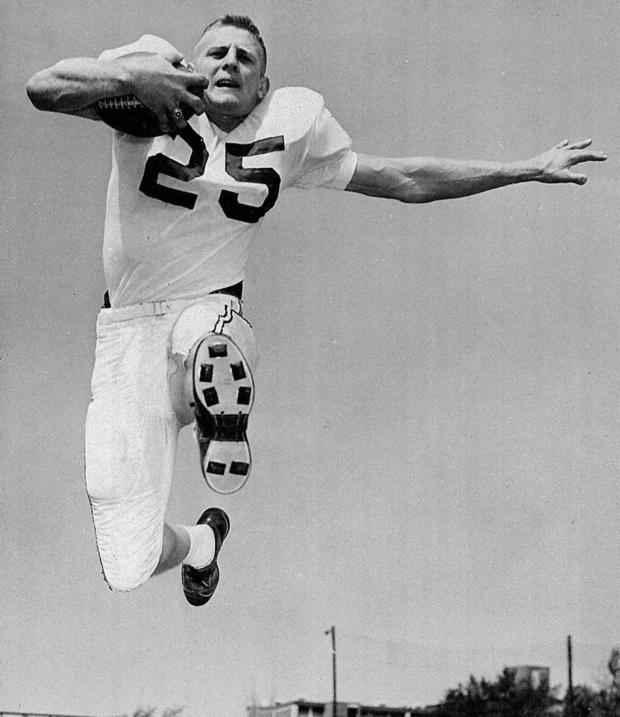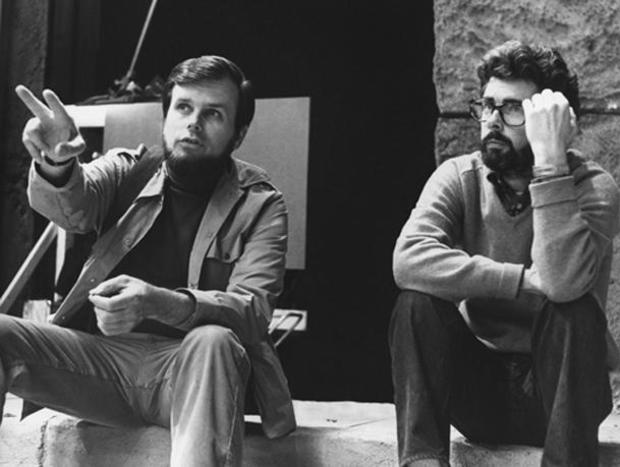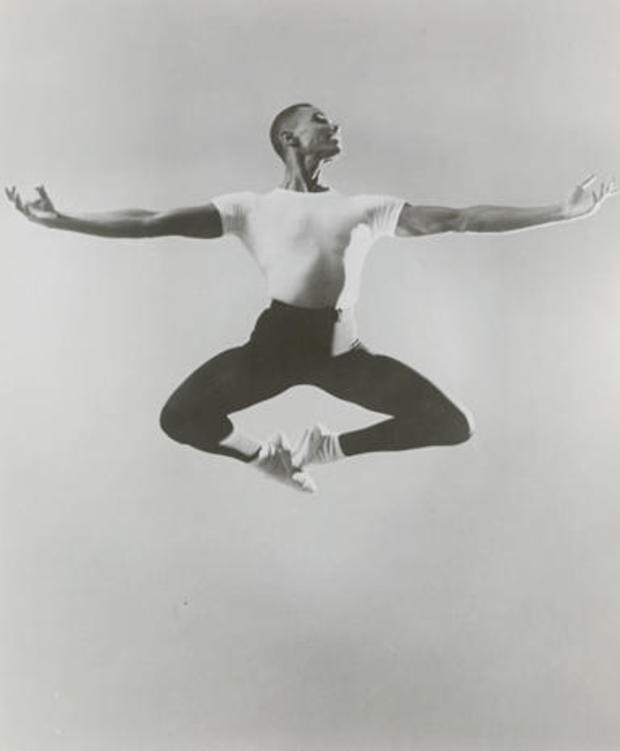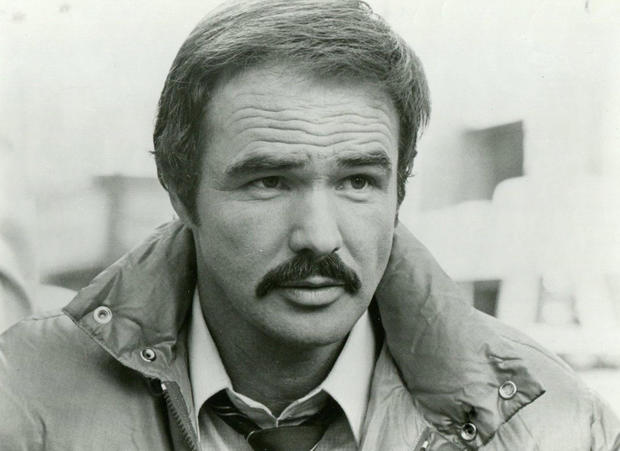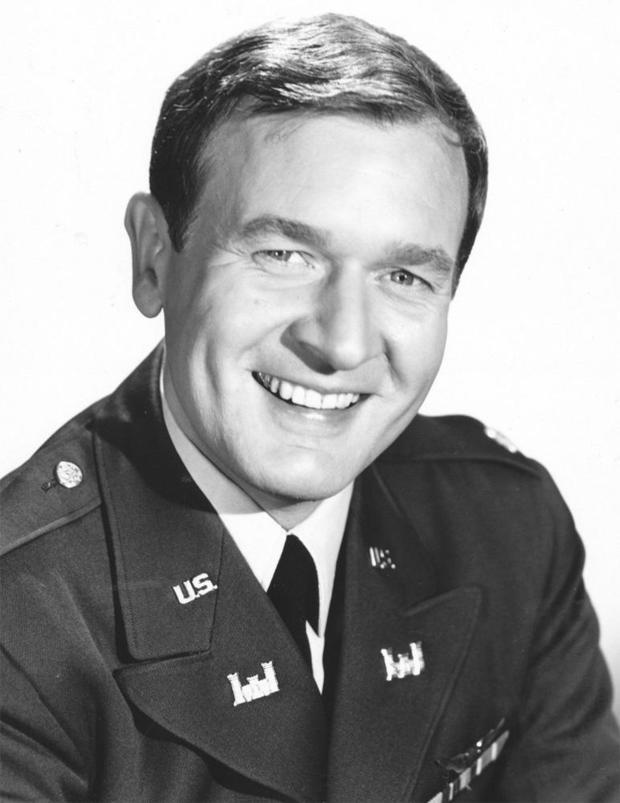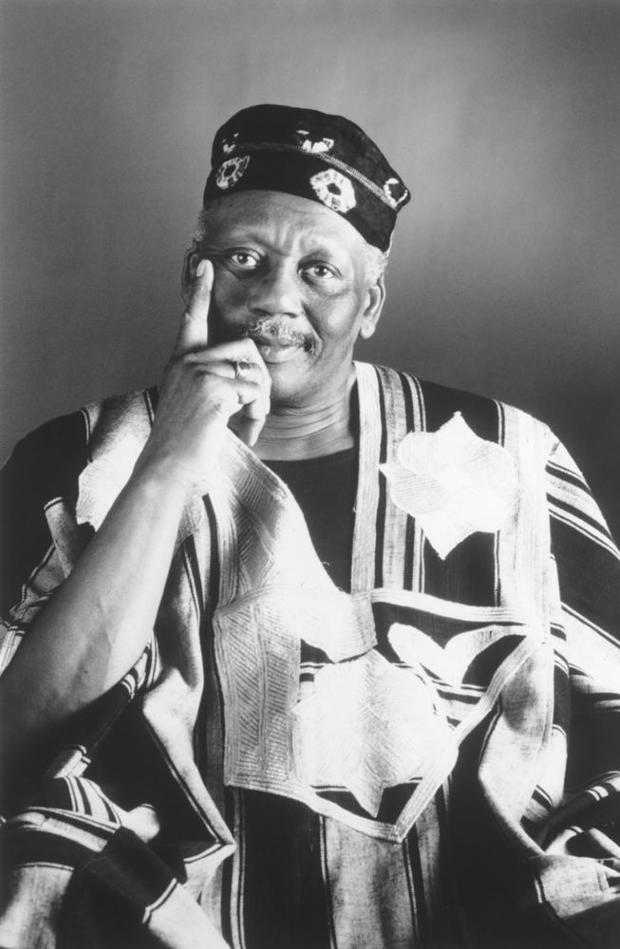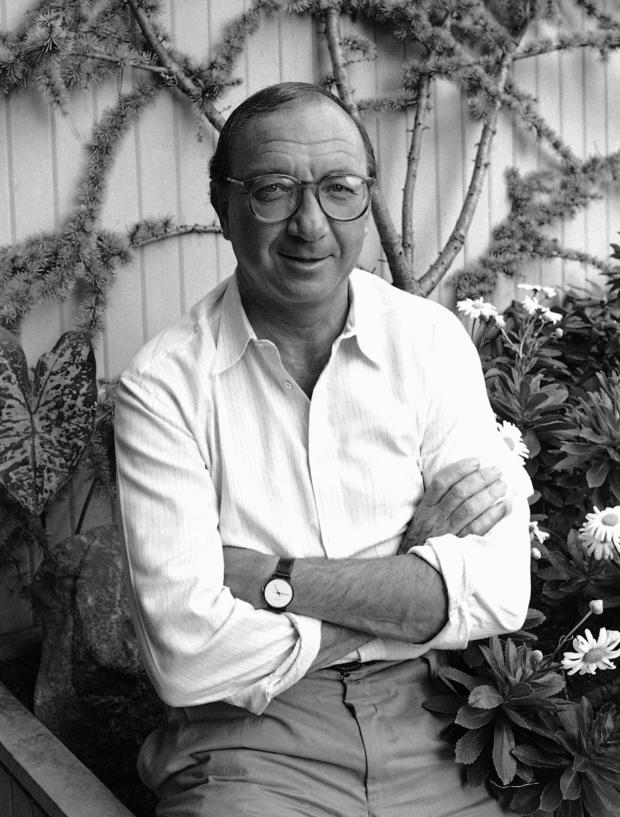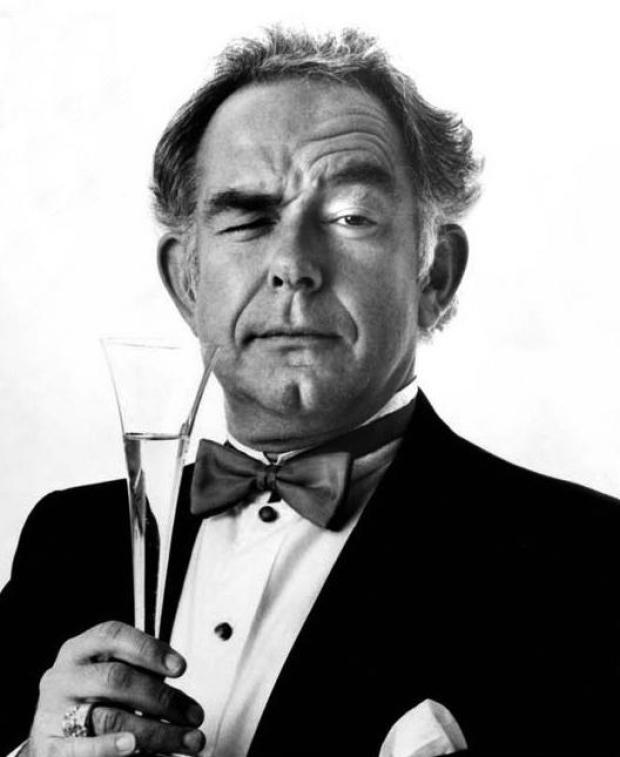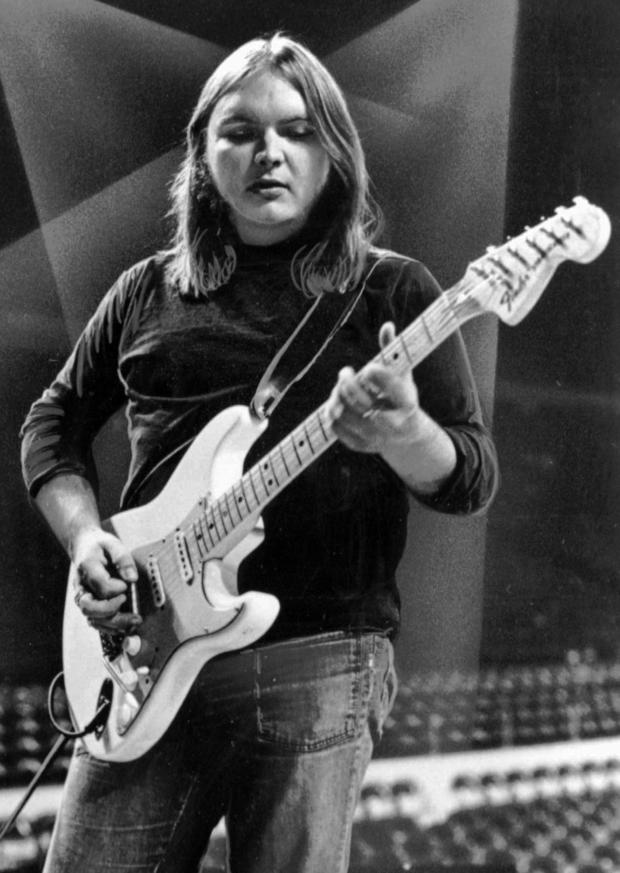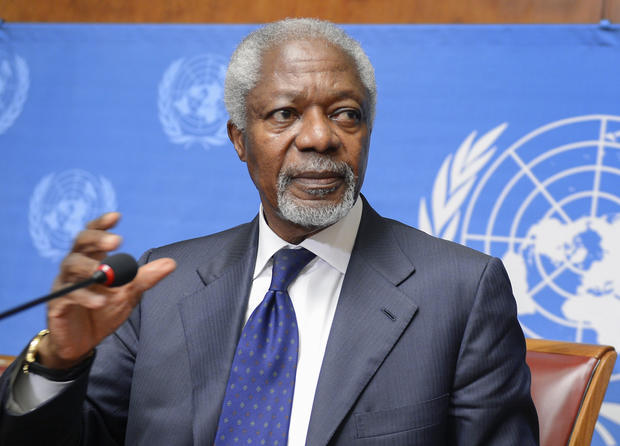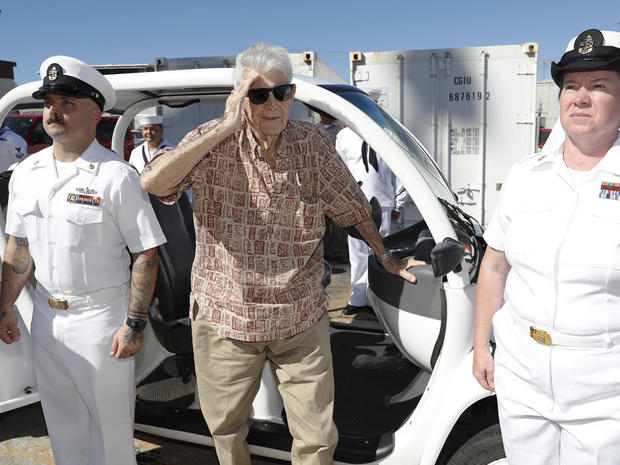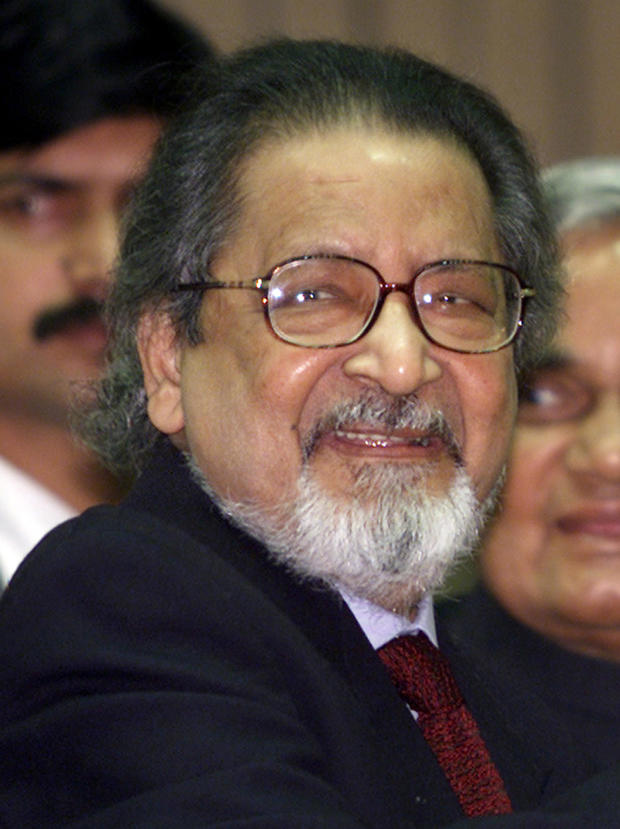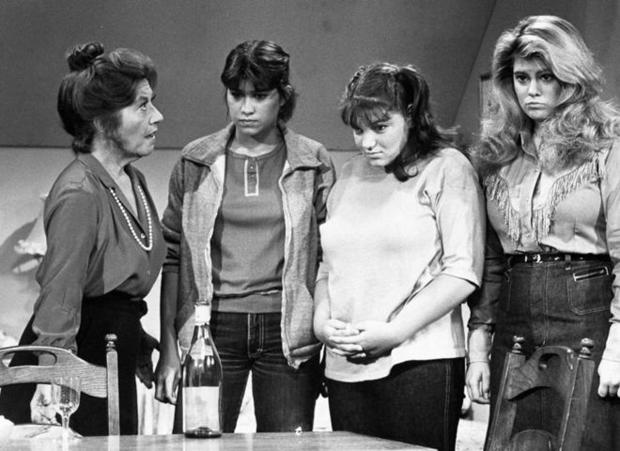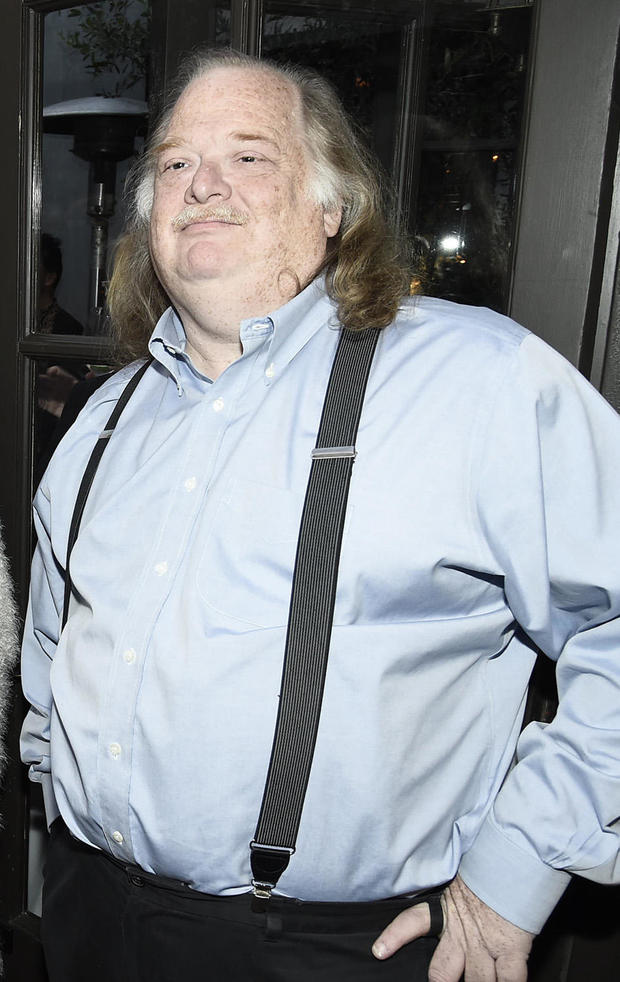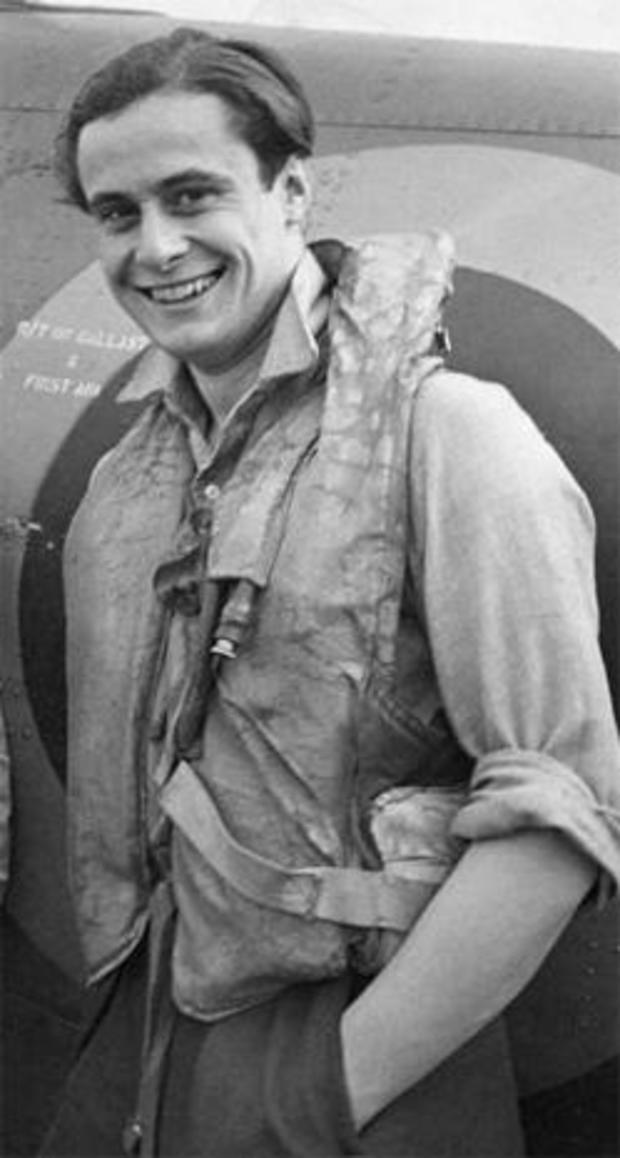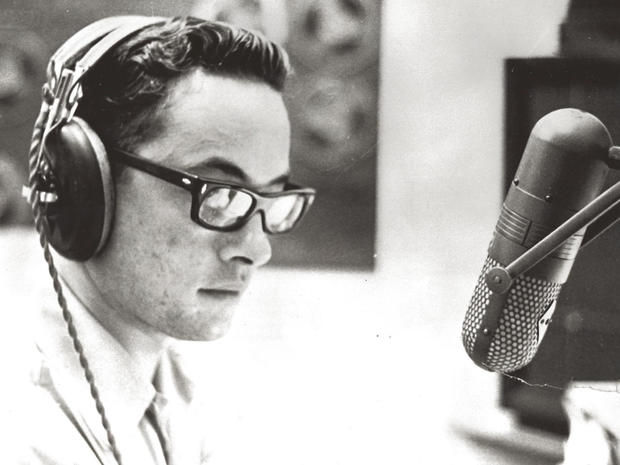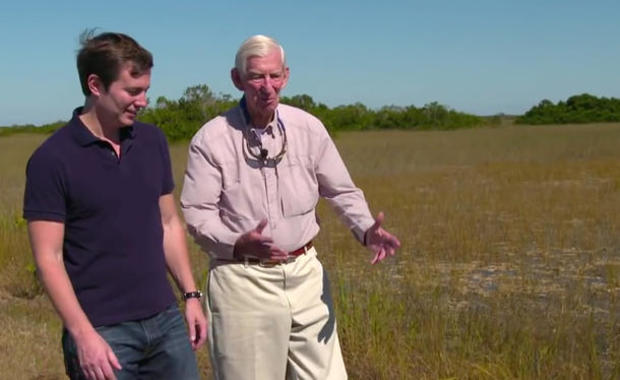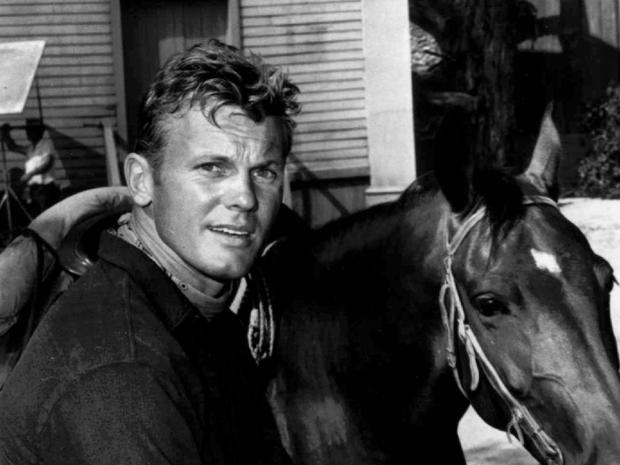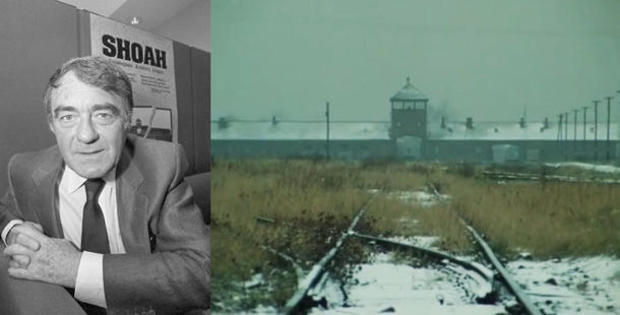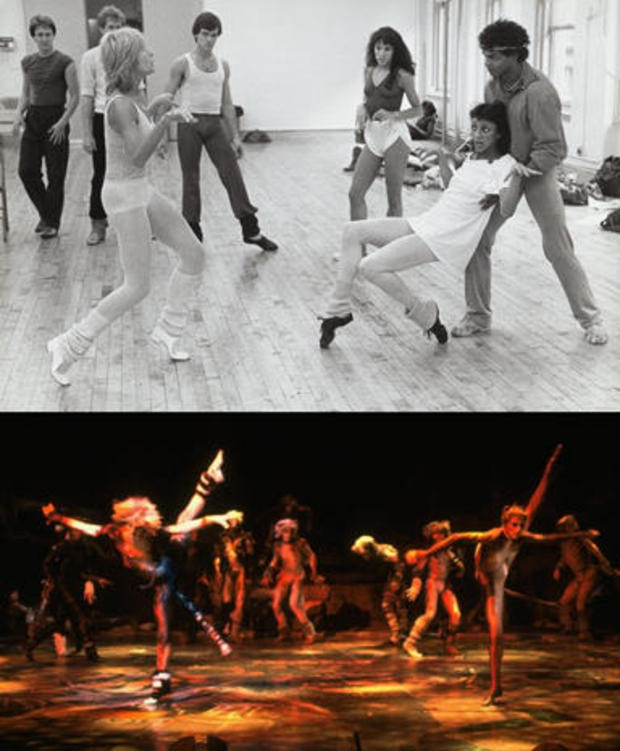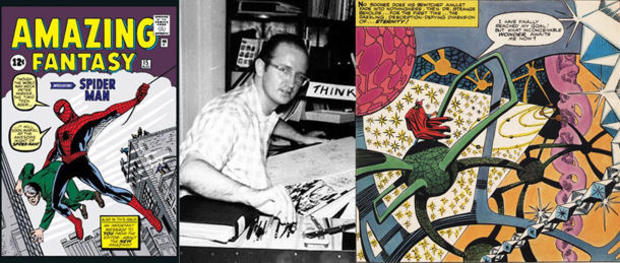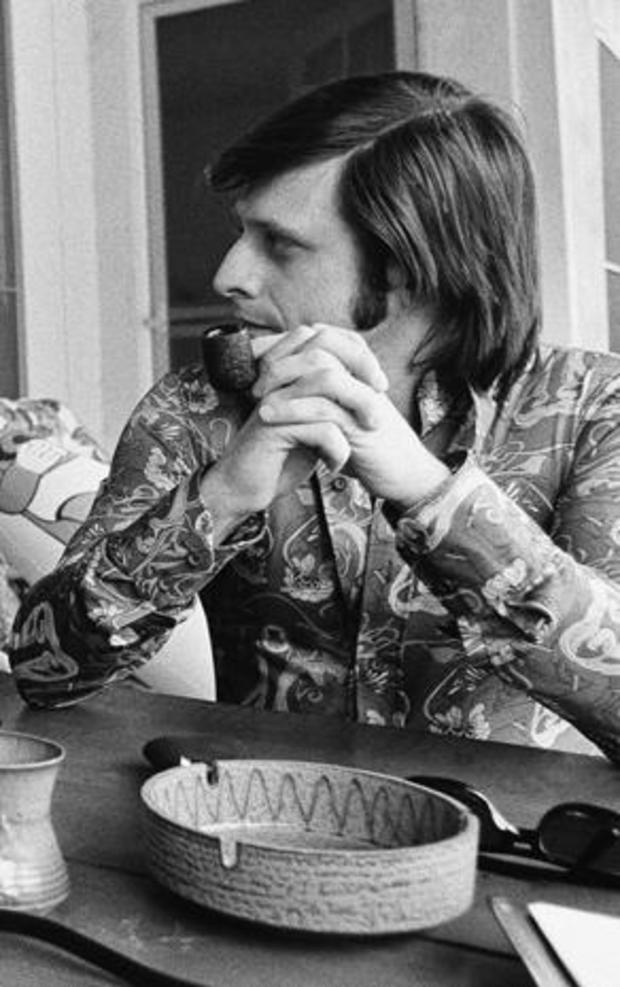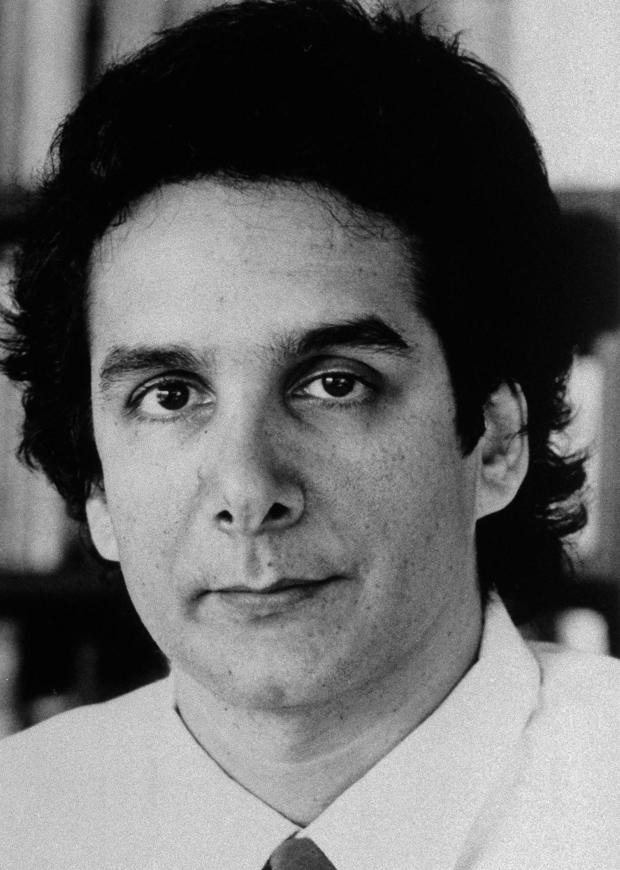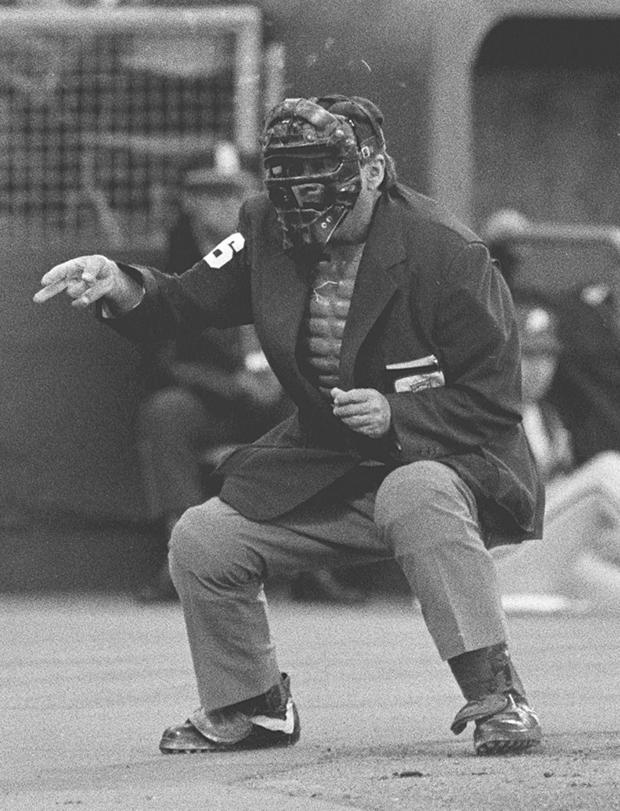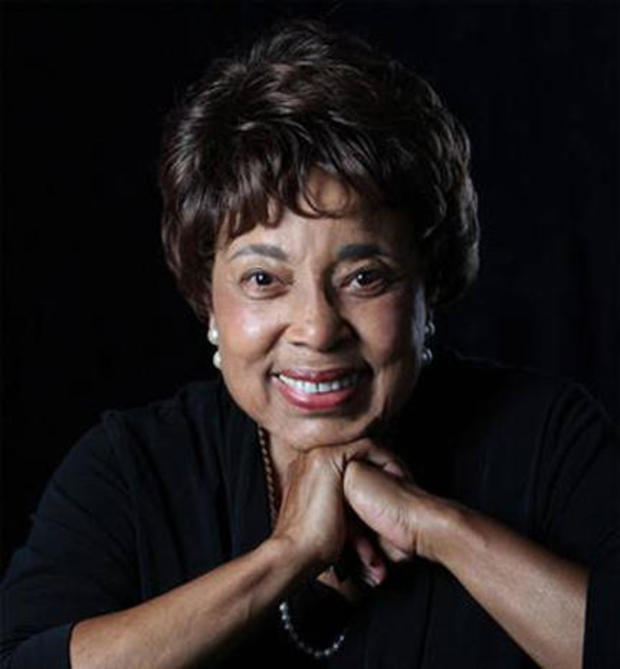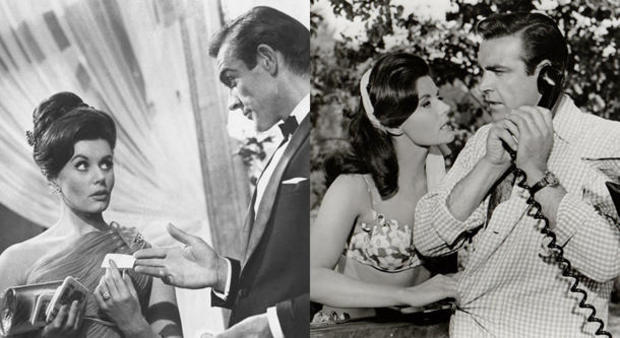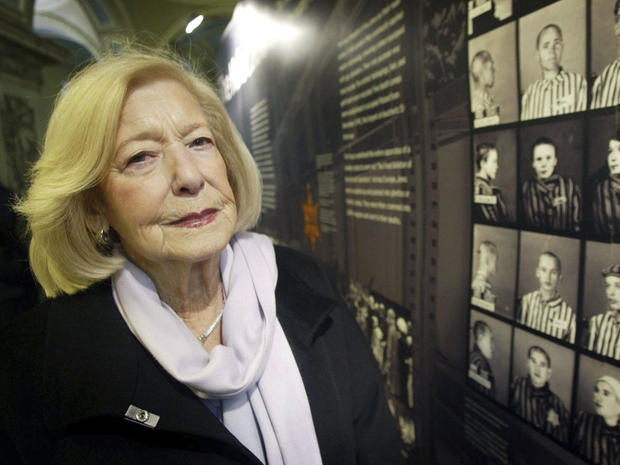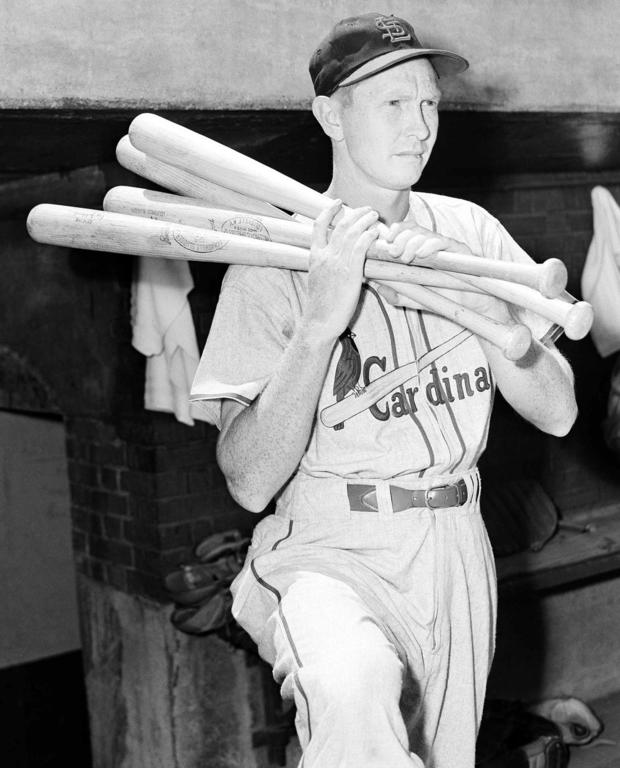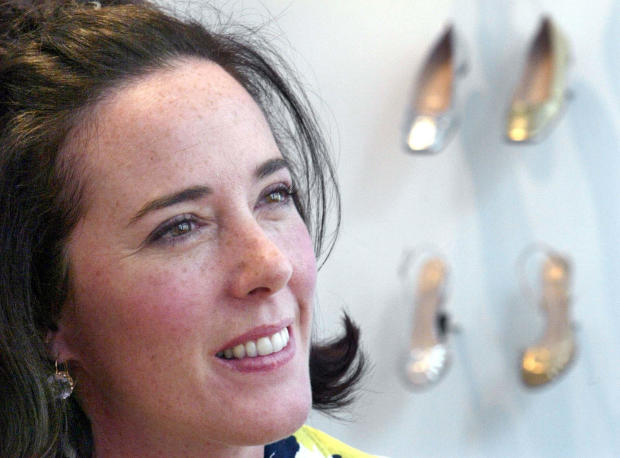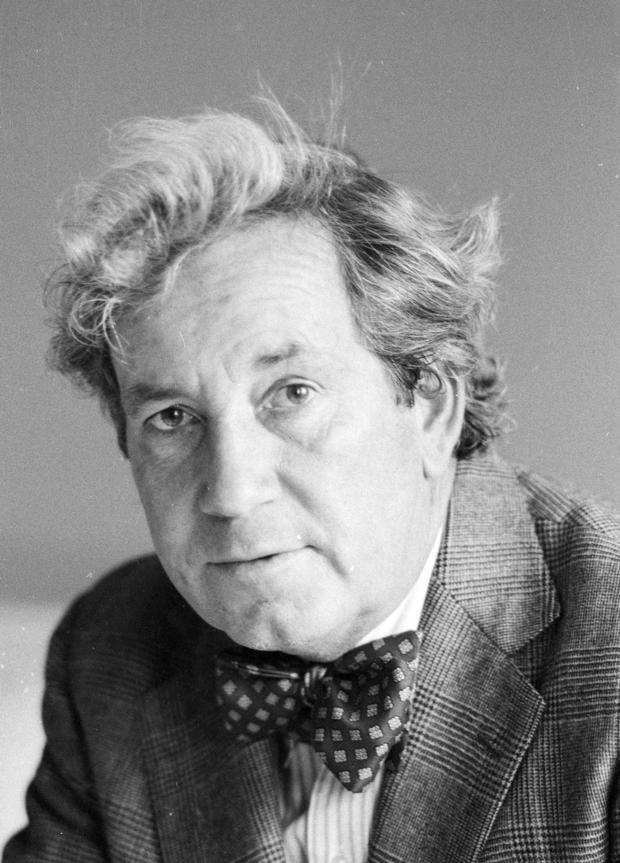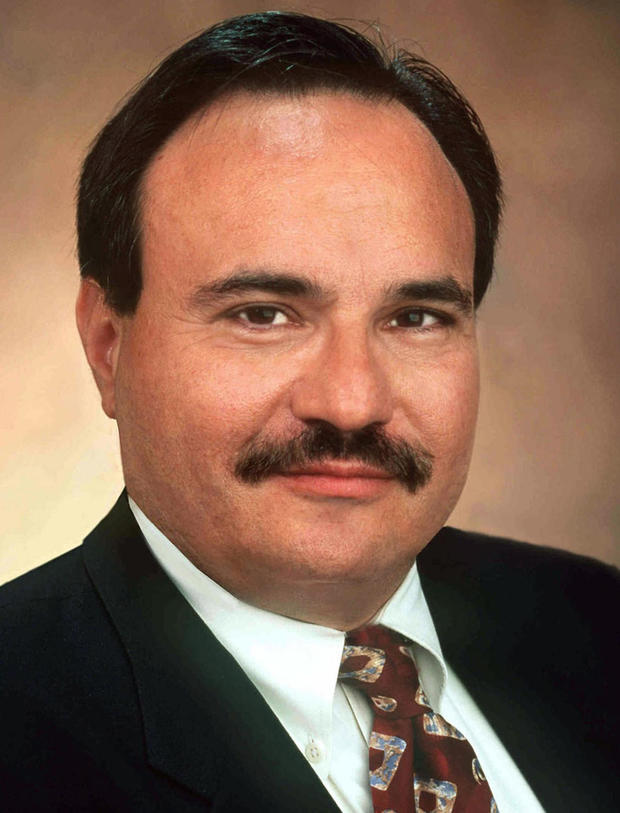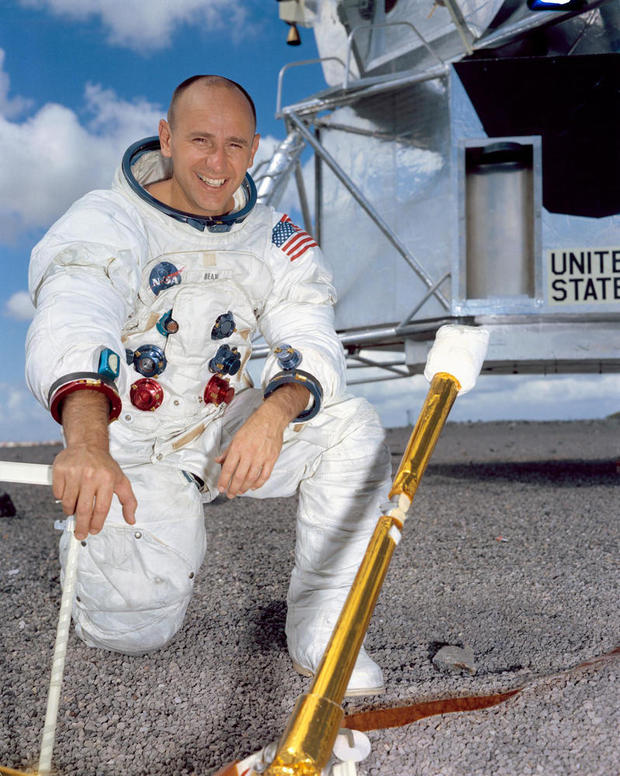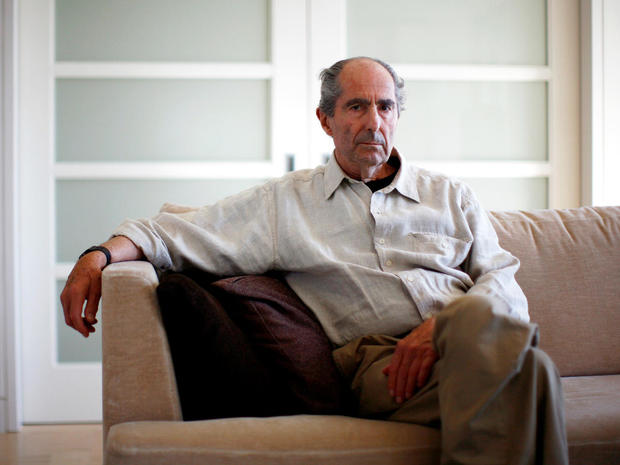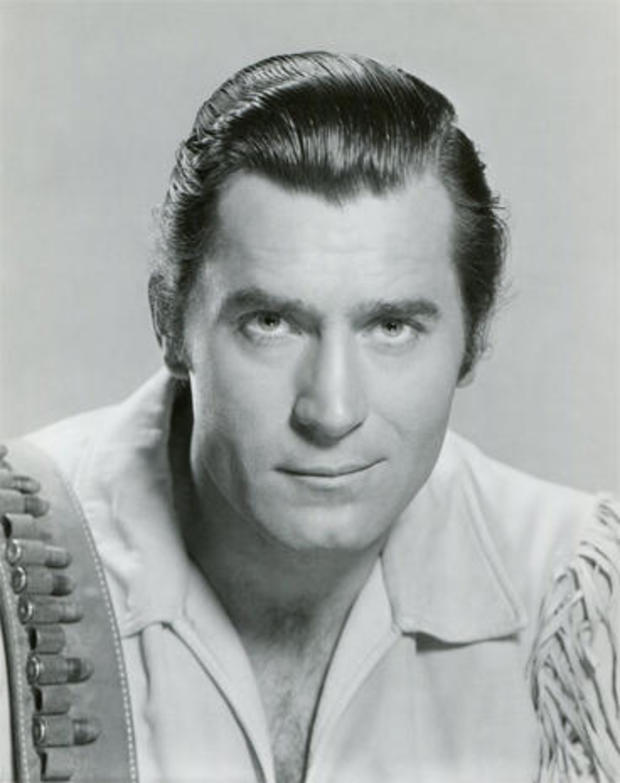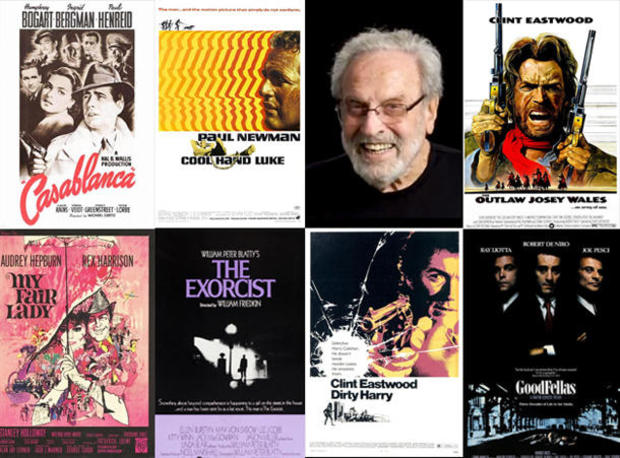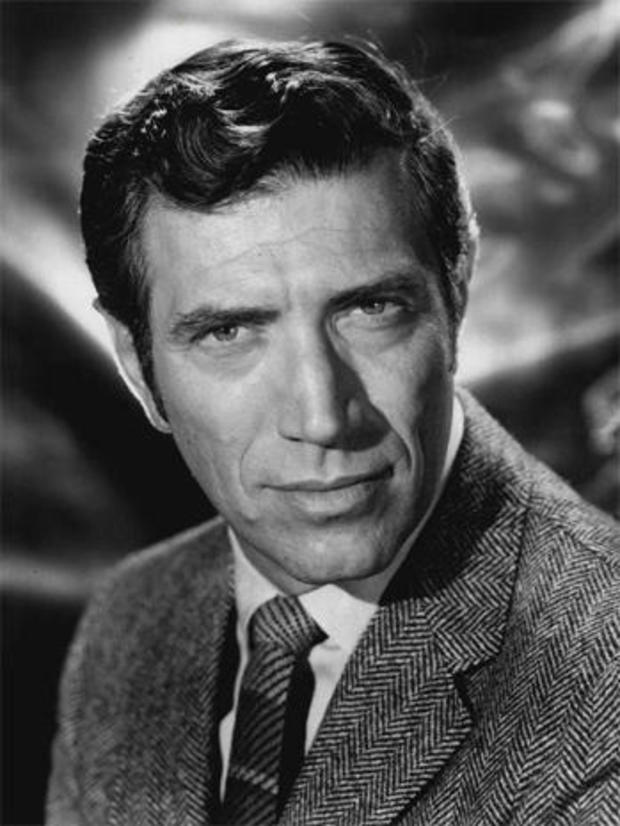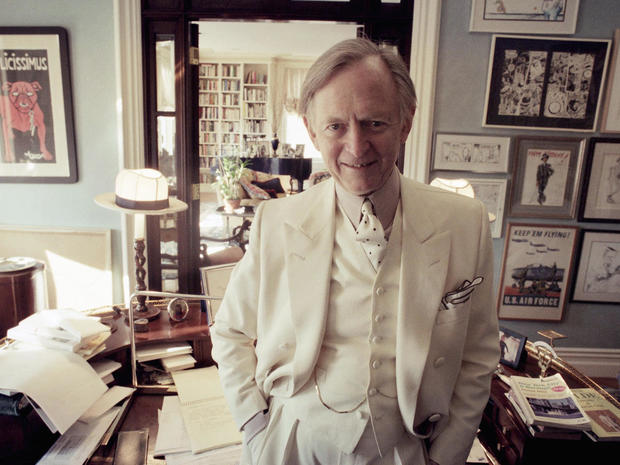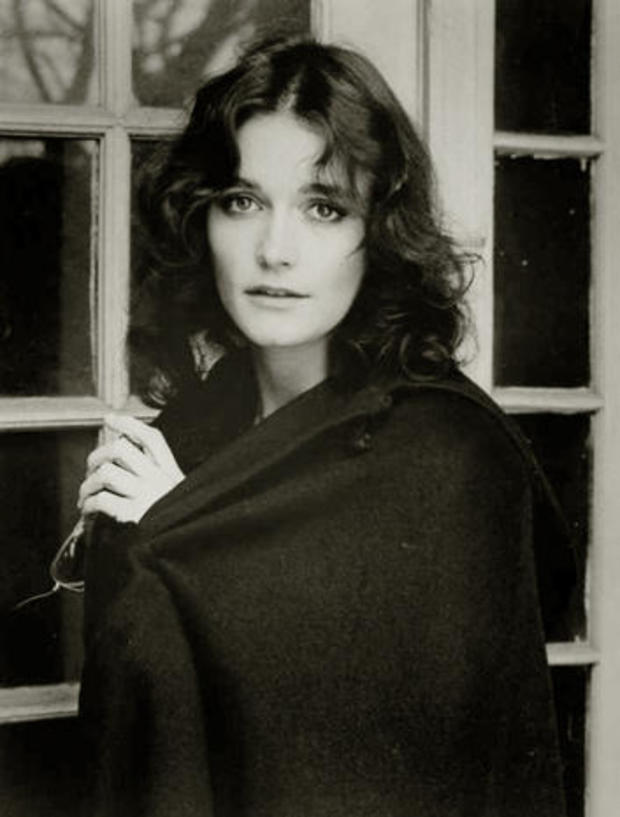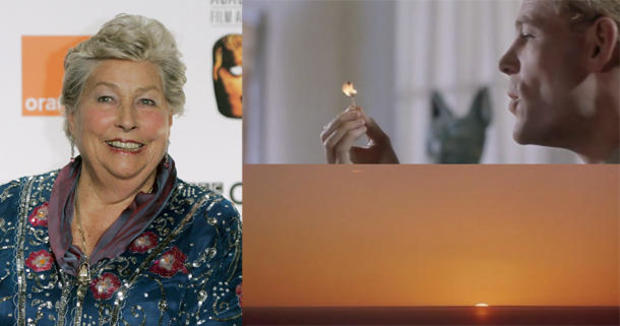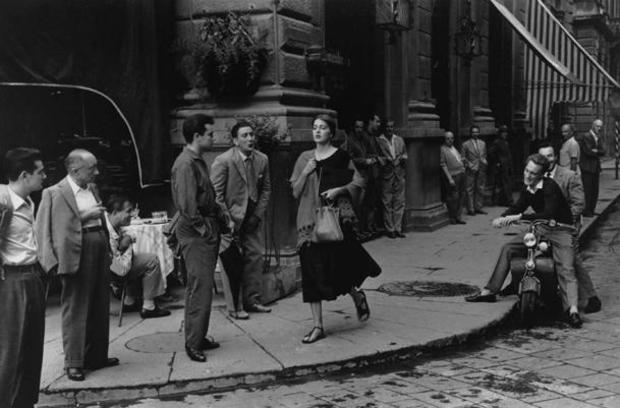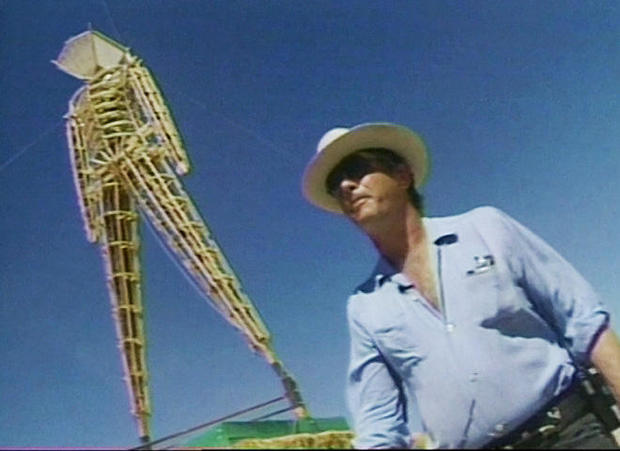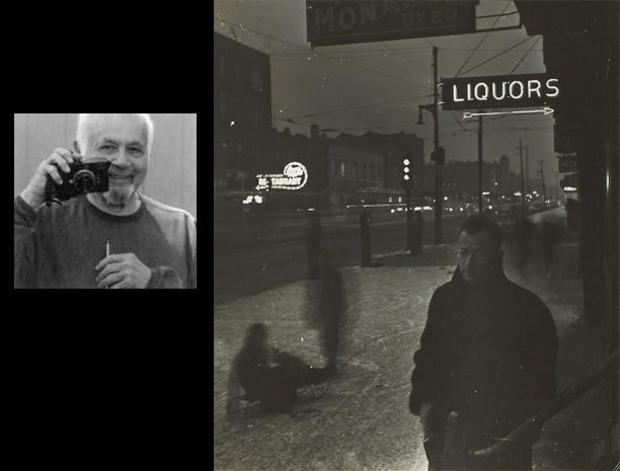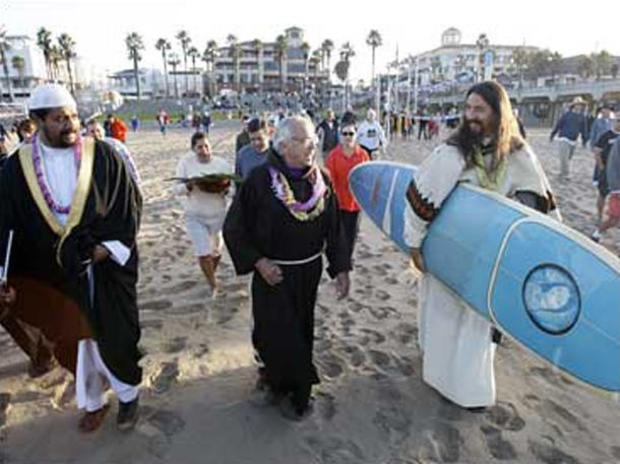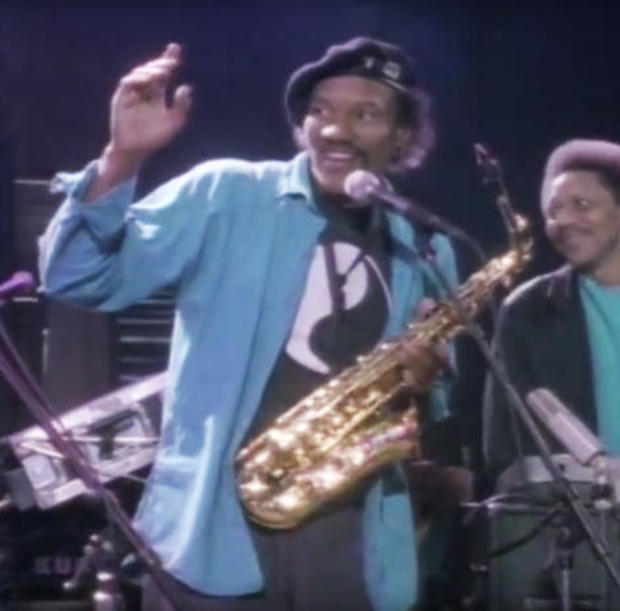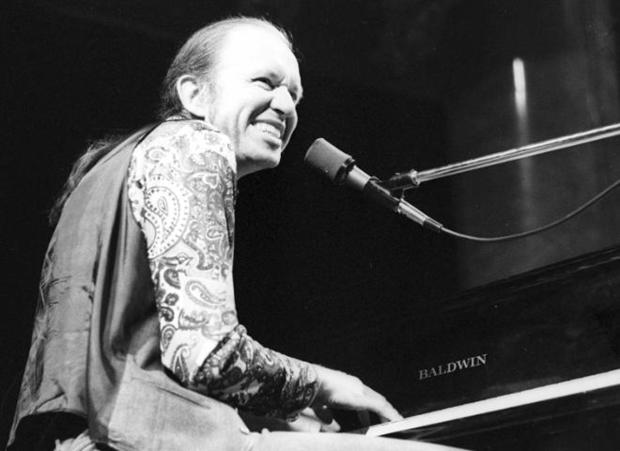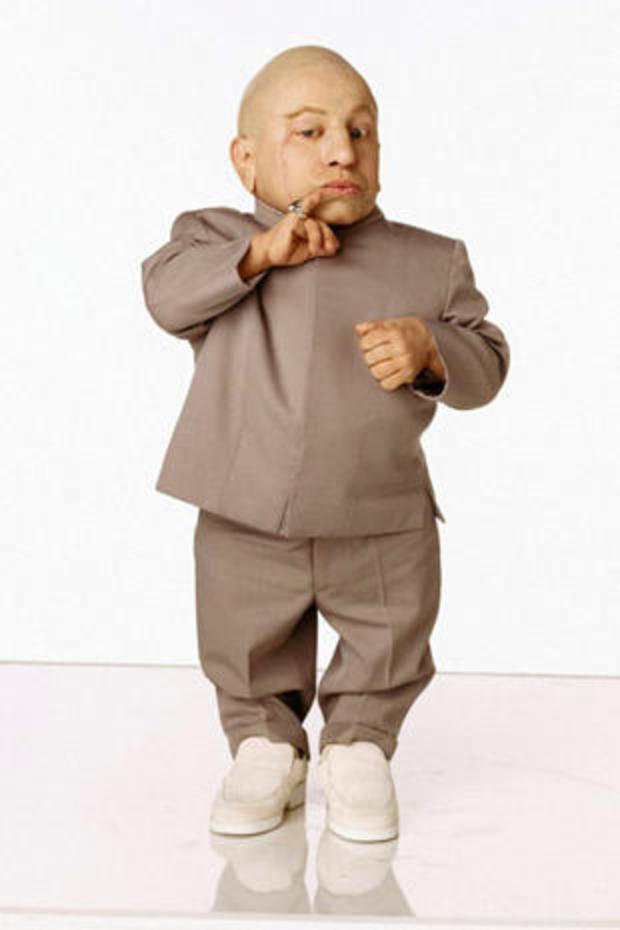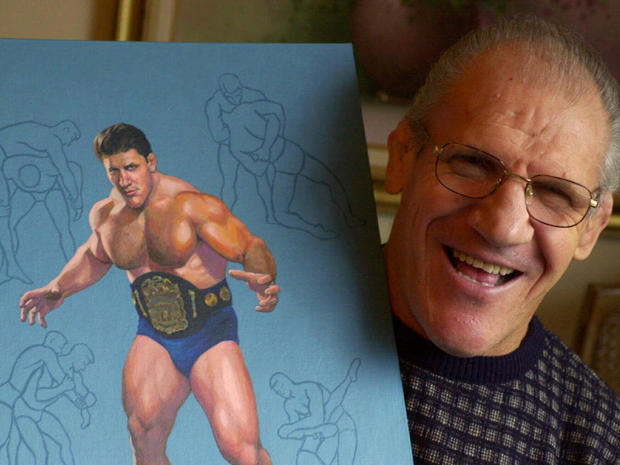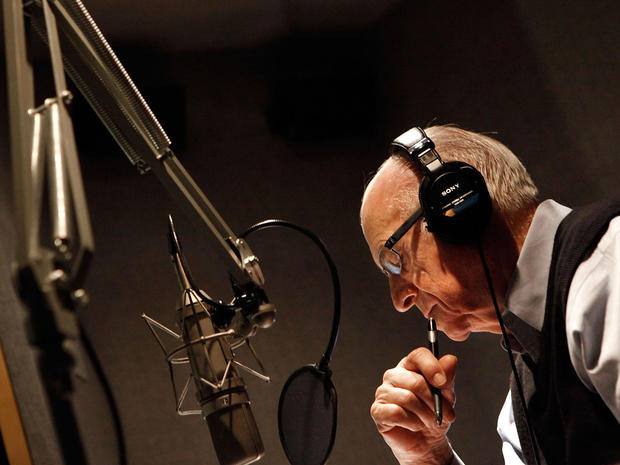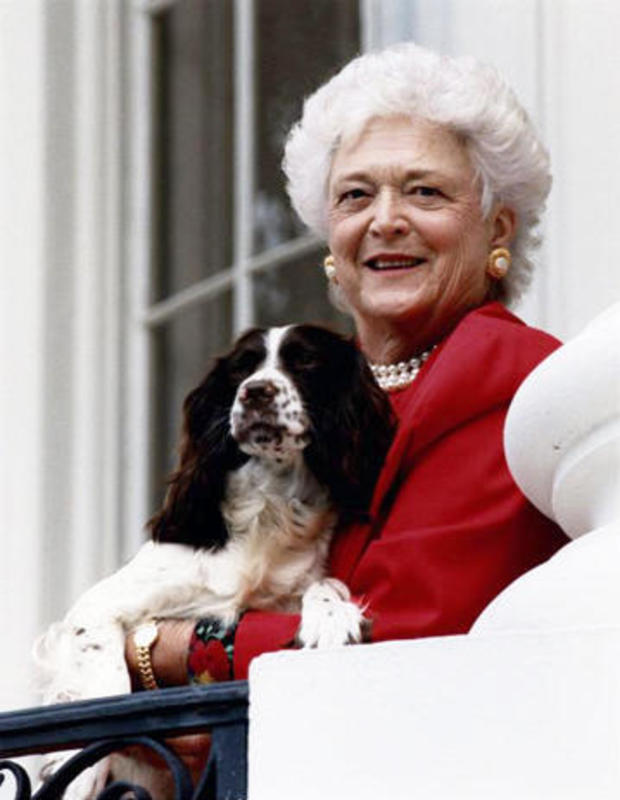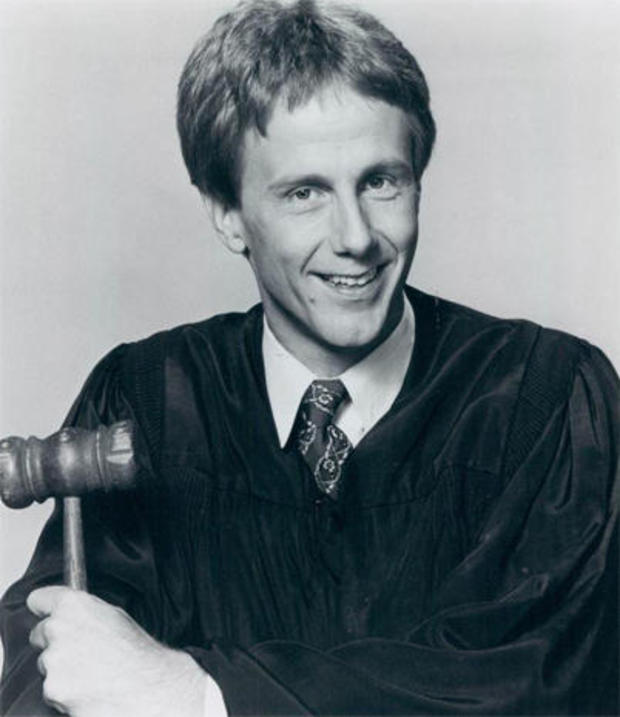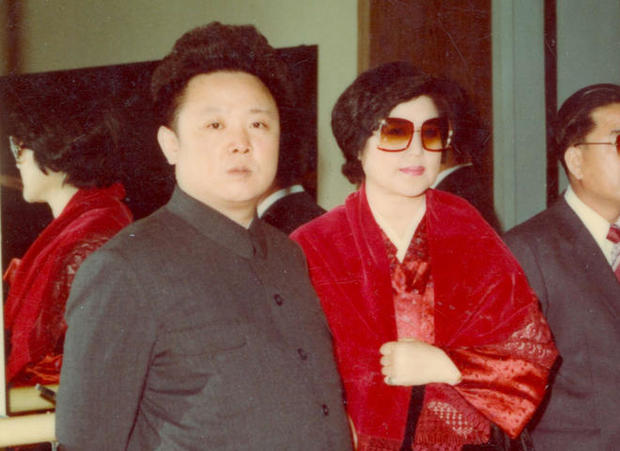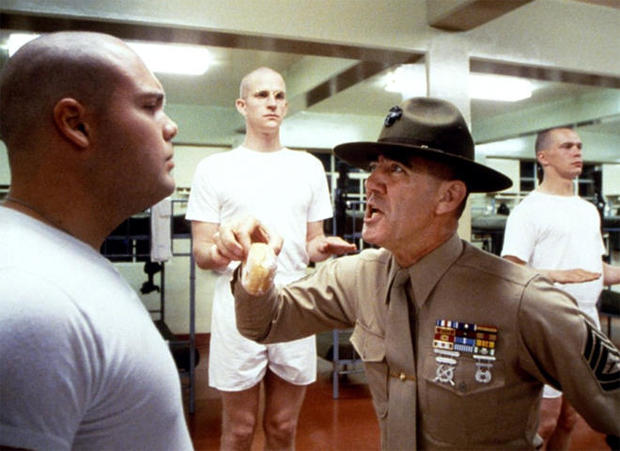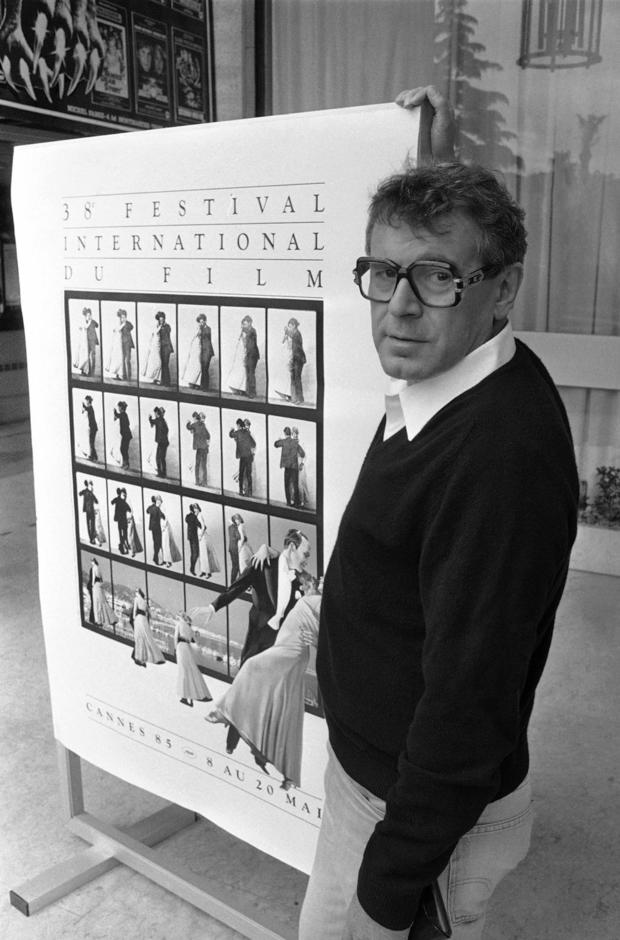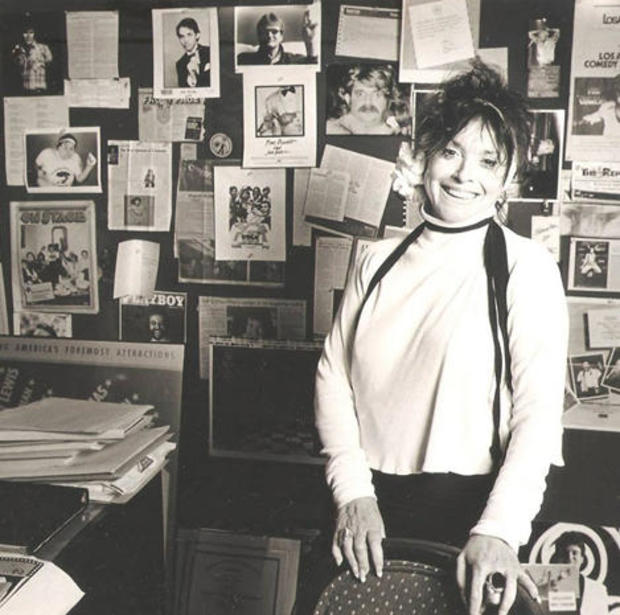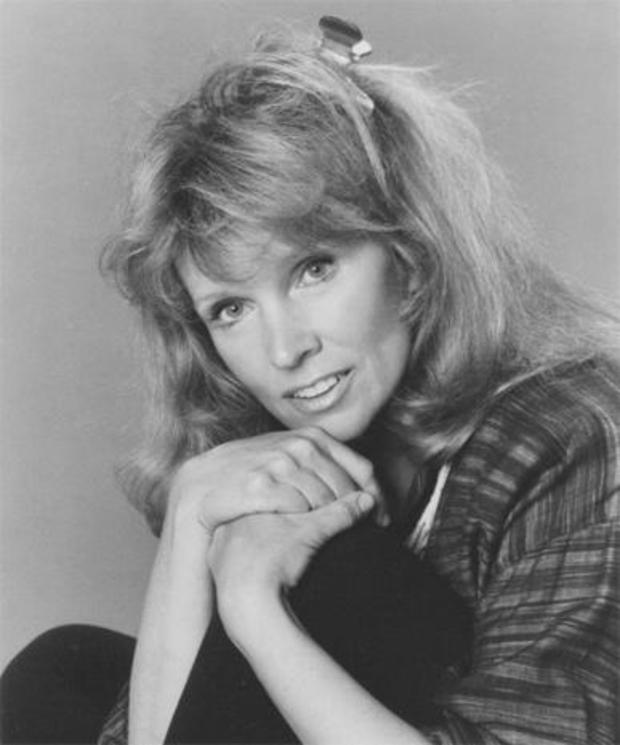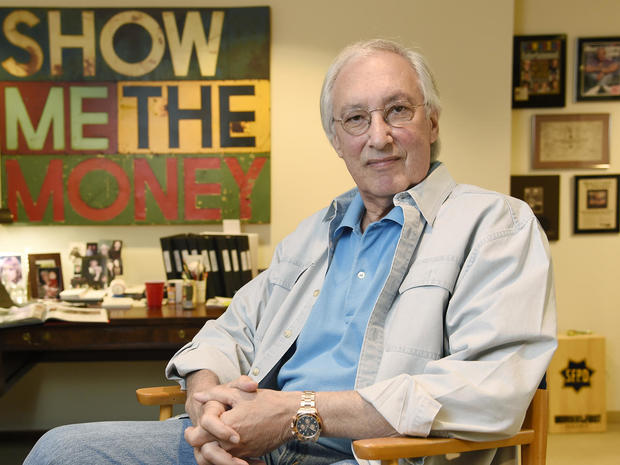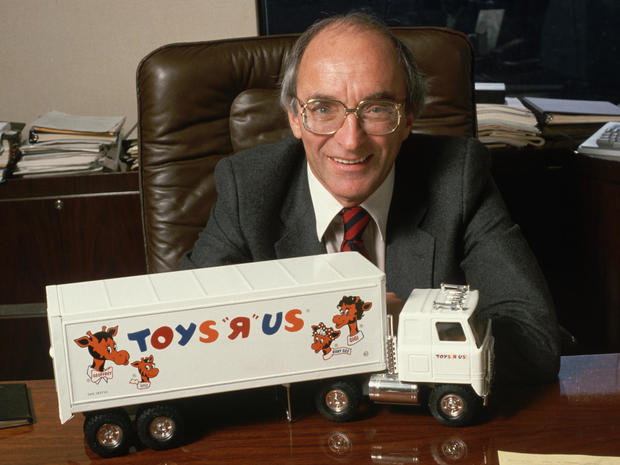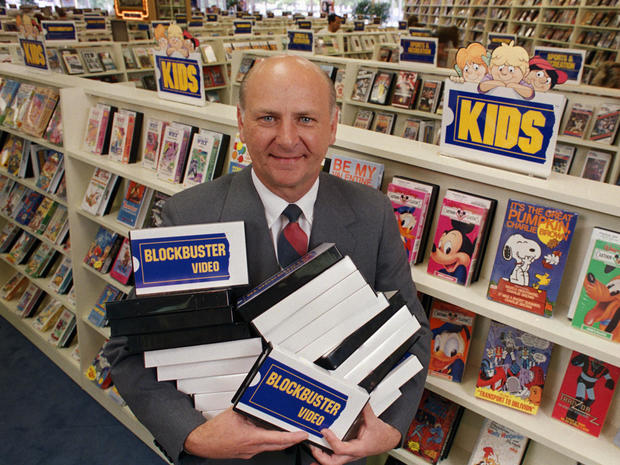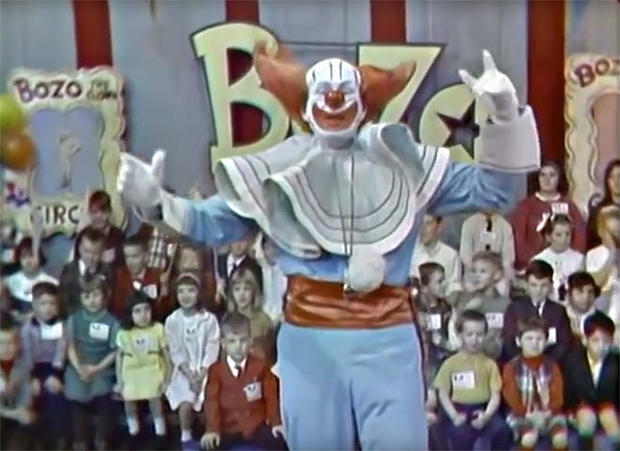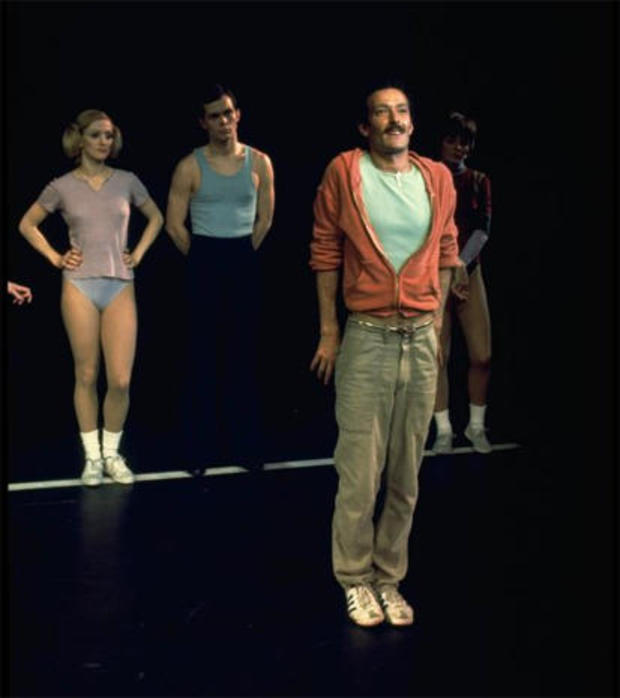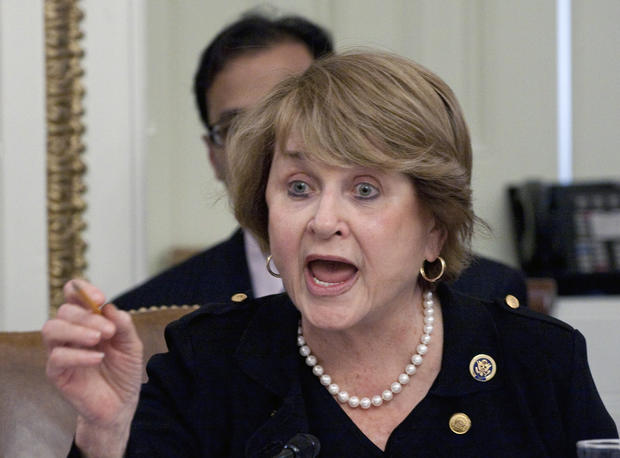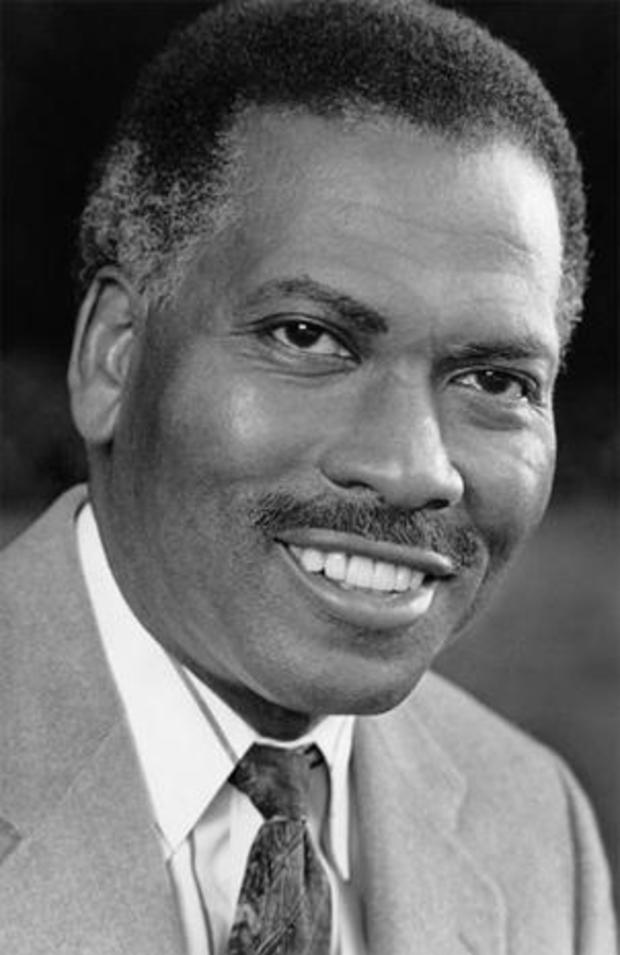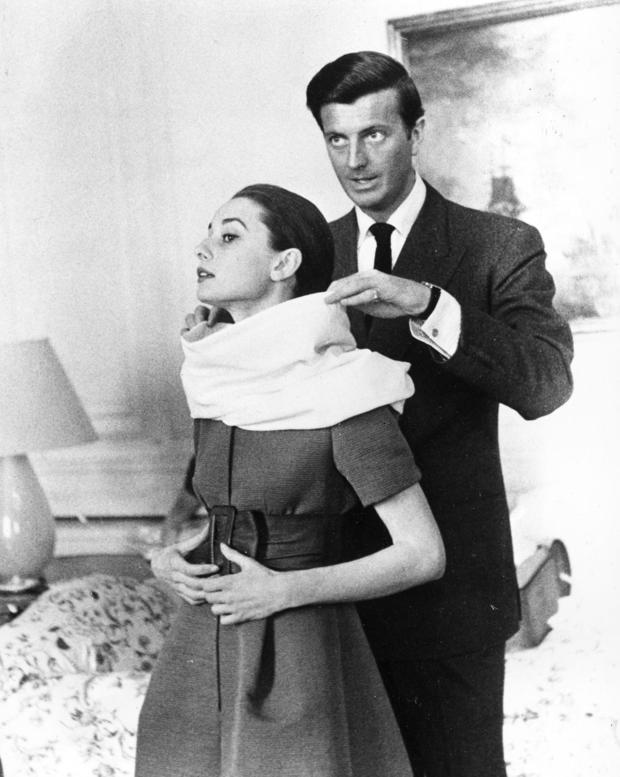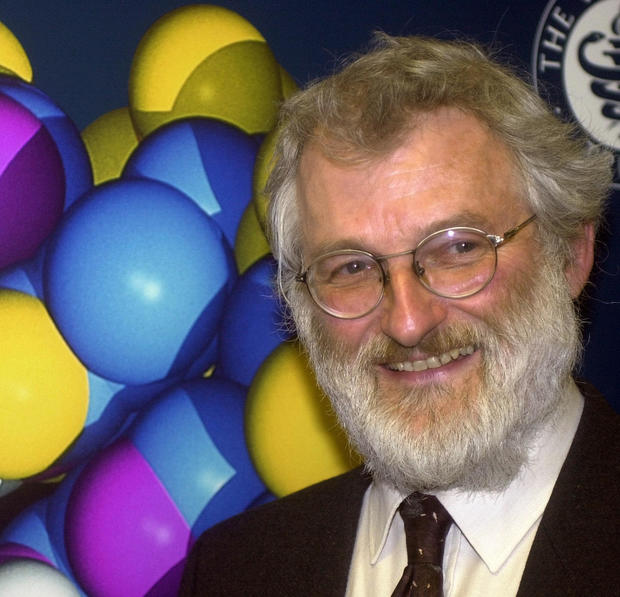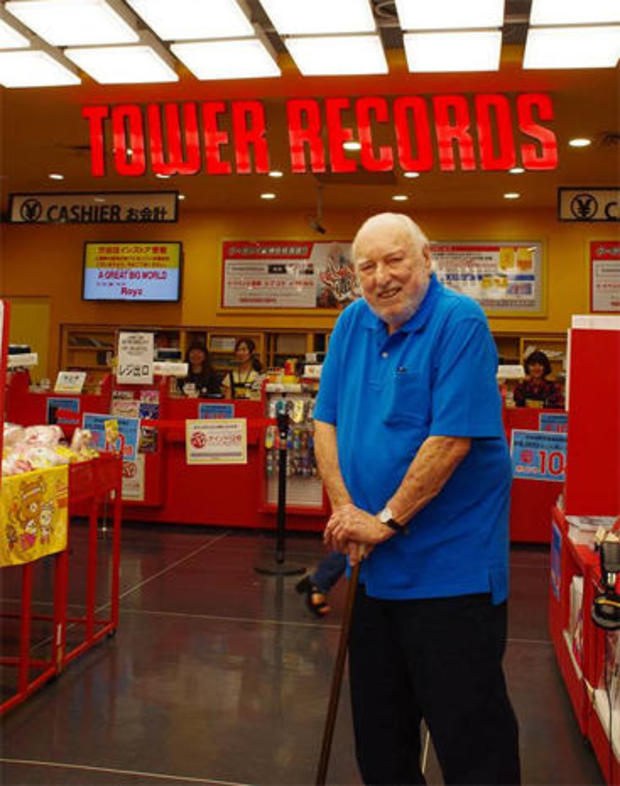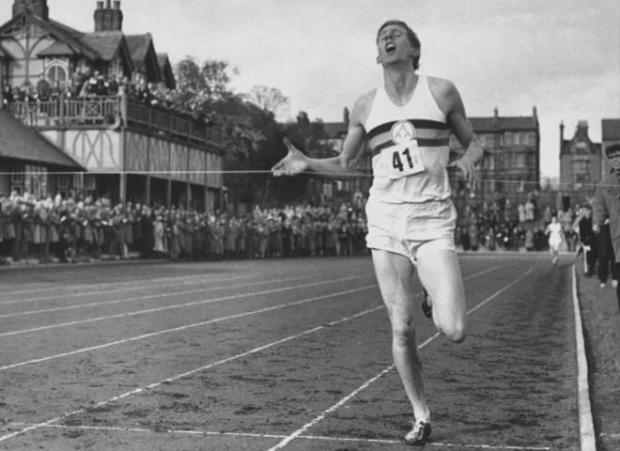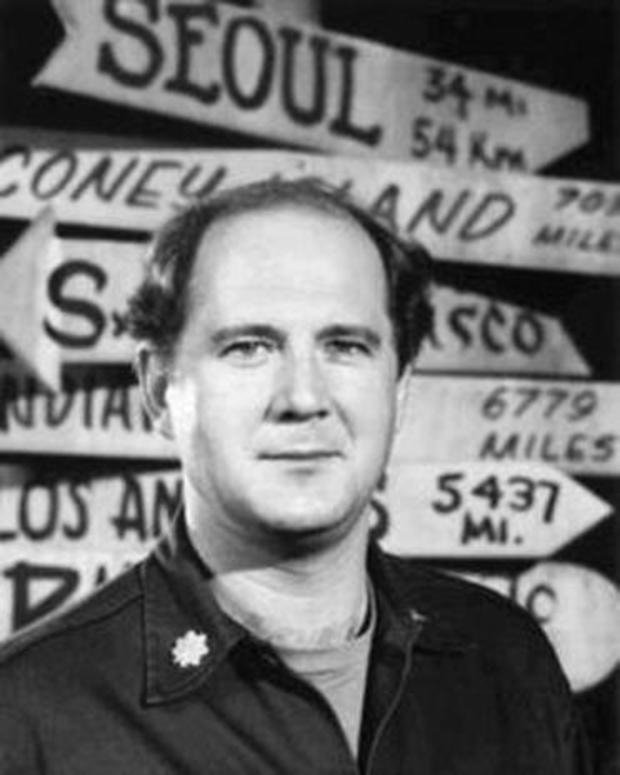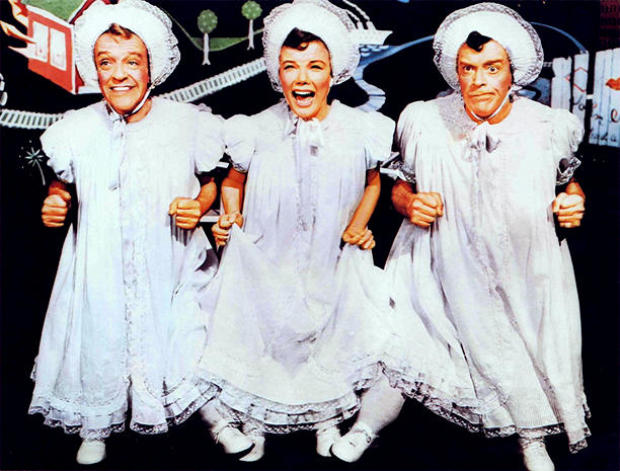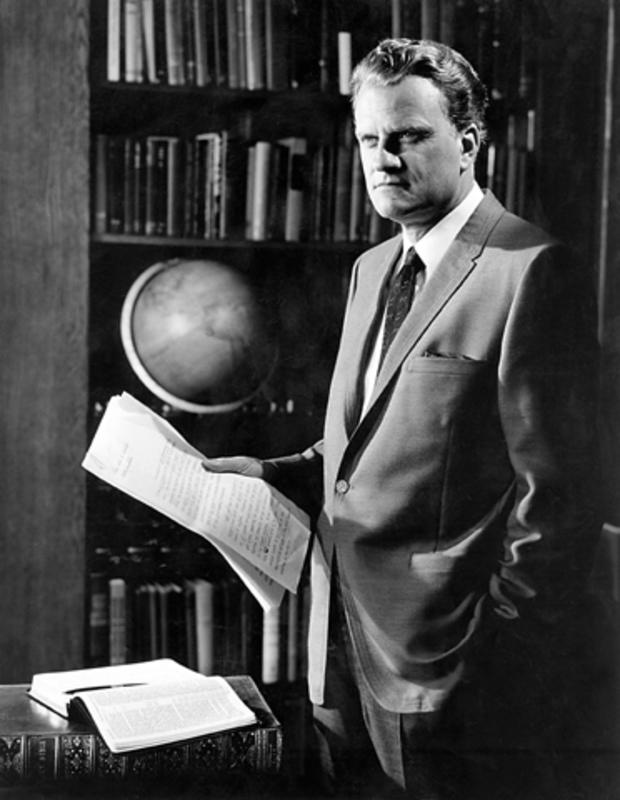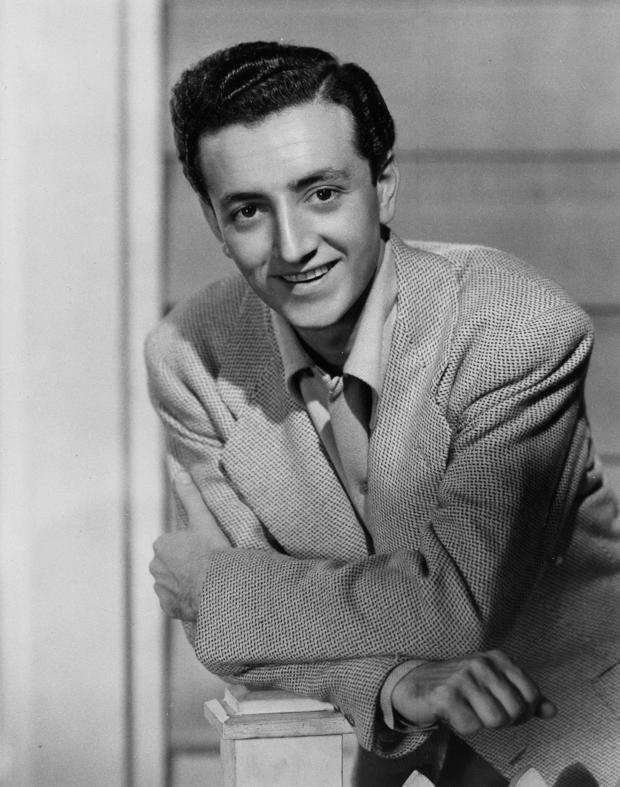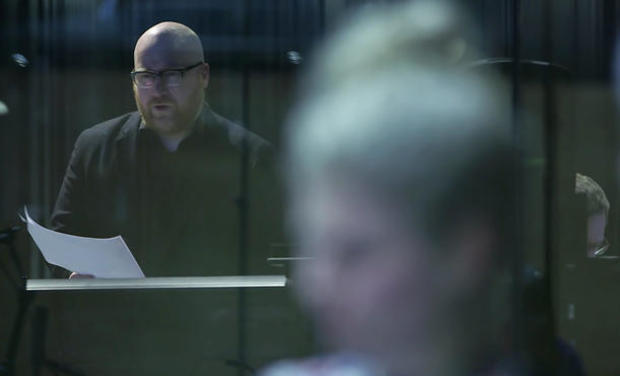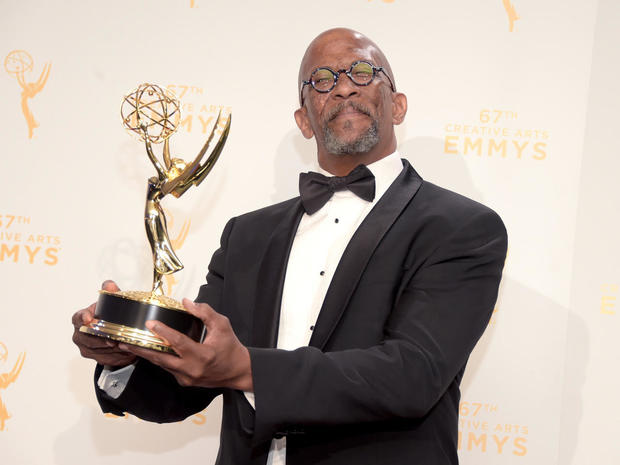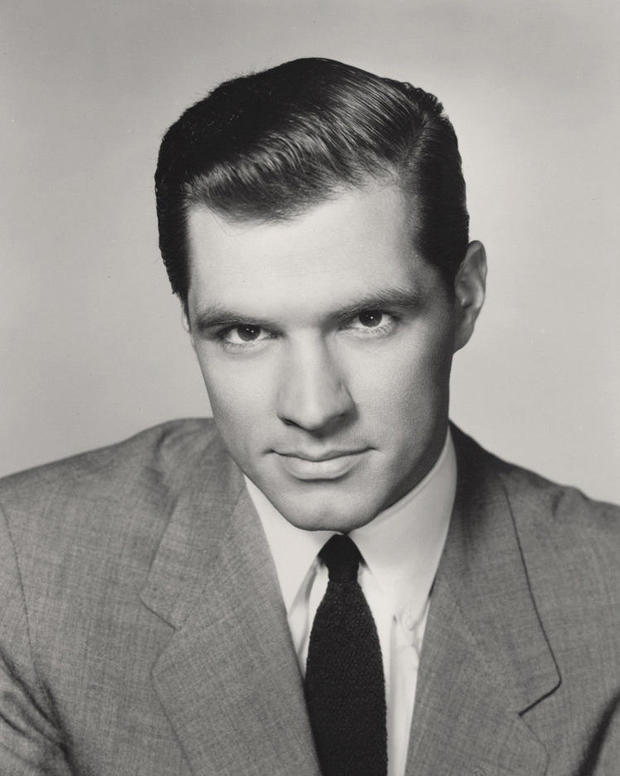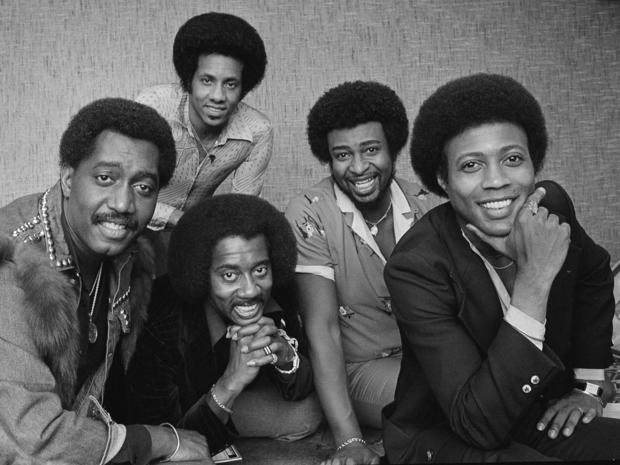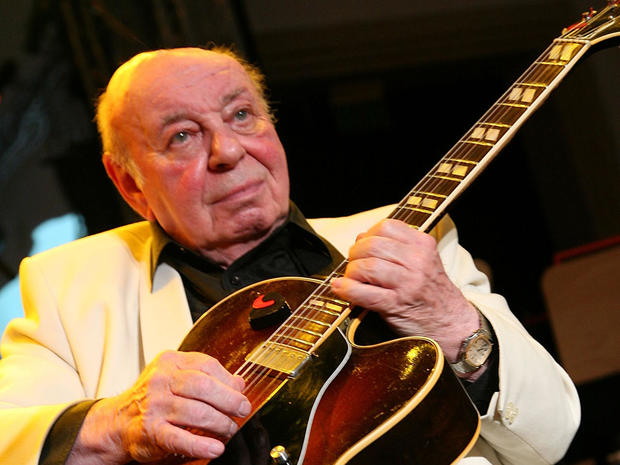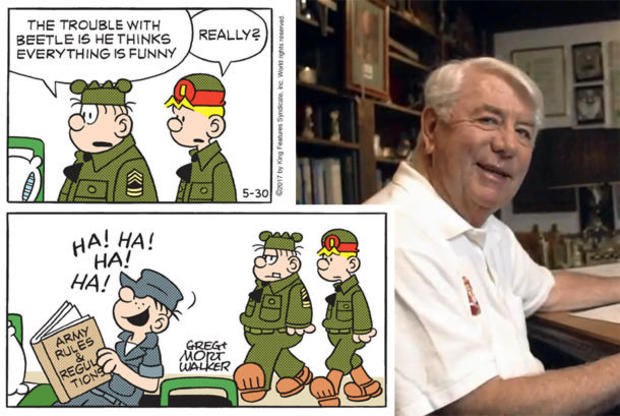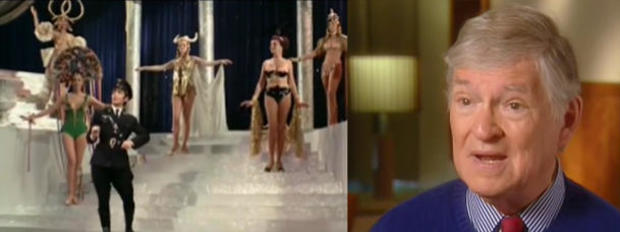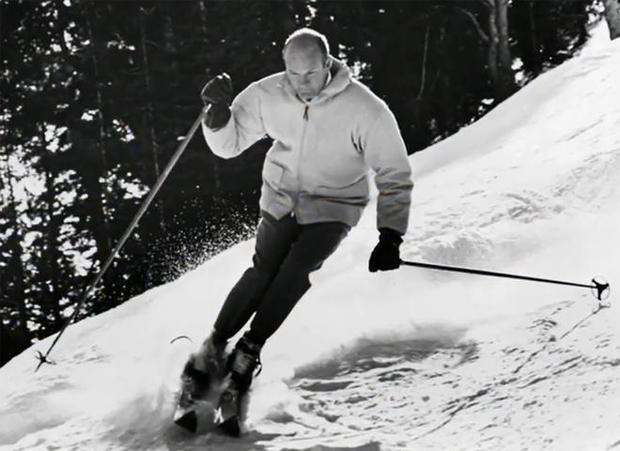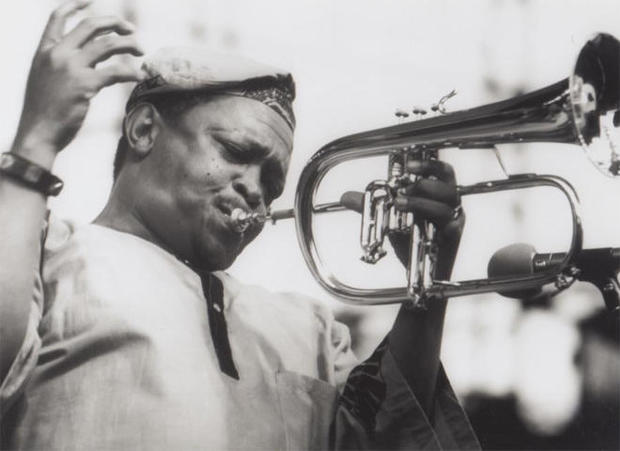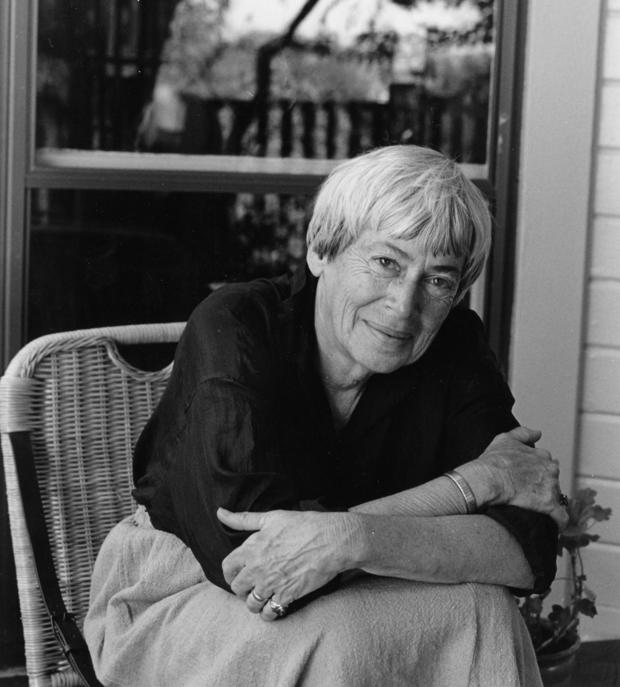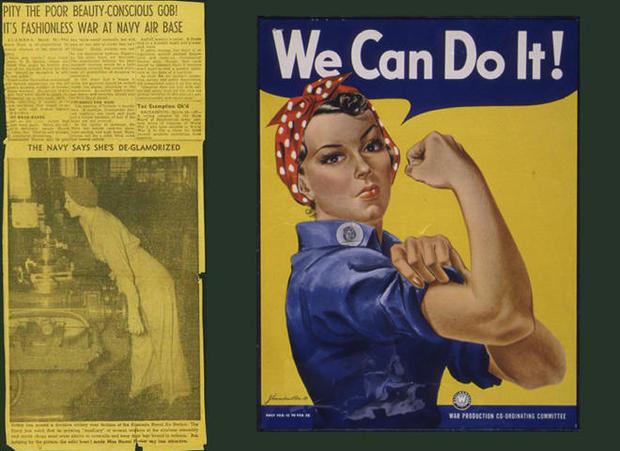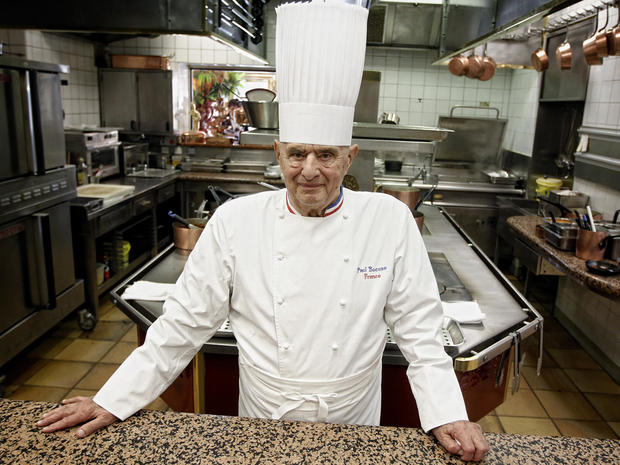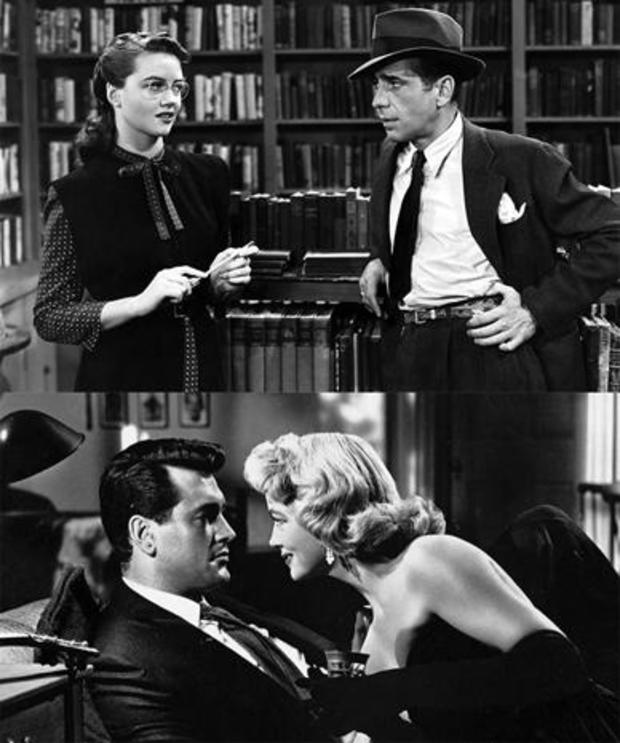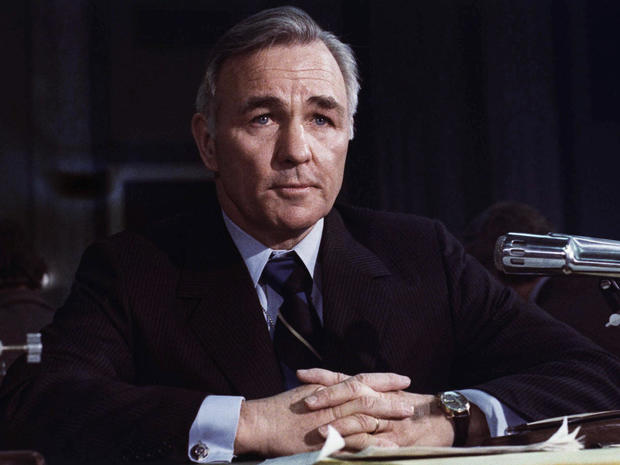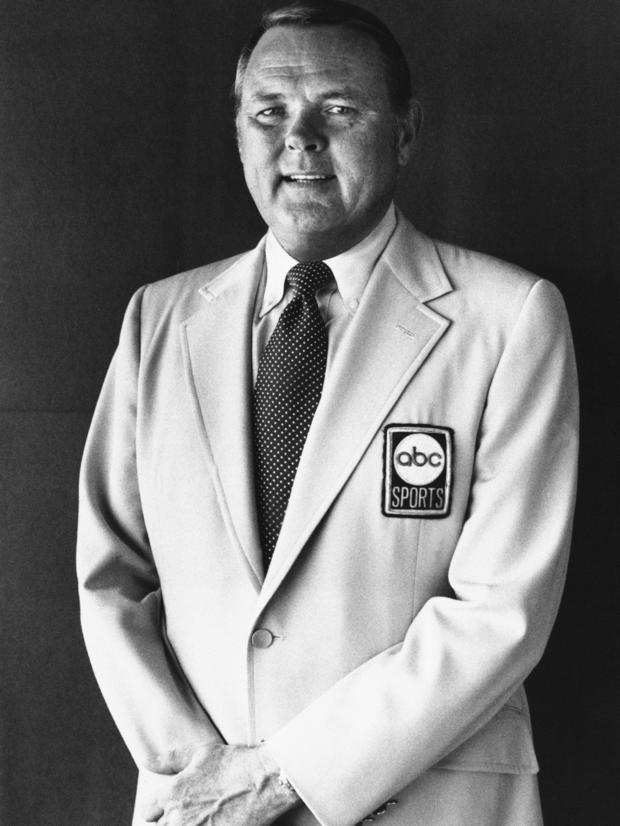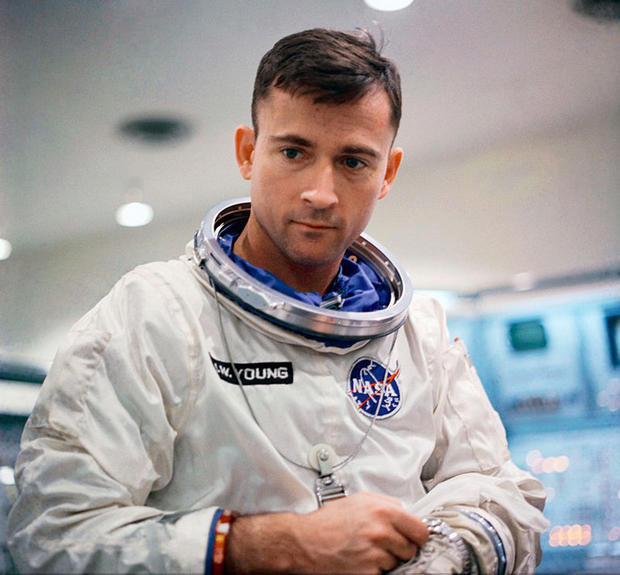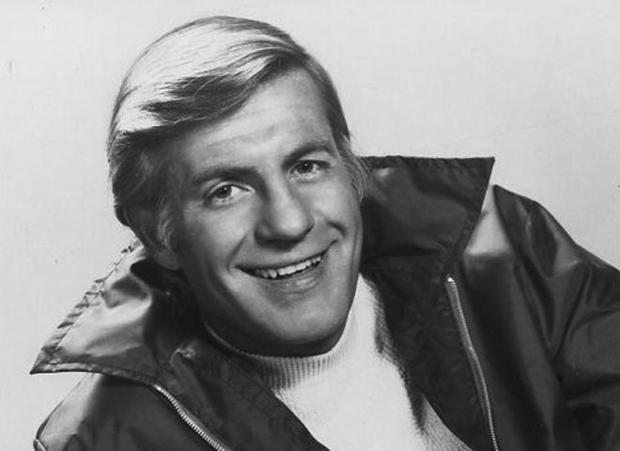Notable deaths in 2018
A look back at the esteemed personalities who left us this year, who'd touched us with their innovation, creativity and humanity.
By CBSNews.com senior producer David Morgan. The Associated Press contributed to this gallery.
Oh, my sorrows,
Sad tomorrows,
Take me back to my own home.
Oh, my crying (Oh, my crying),
Feel I'm dying, dying,
Take me back to my own home.
-- "Reflections of My Life"
Scottish singer-songwriter Dean Ford (September 5, 1946-December 31, 2018) was best known as the frontman for the pop group Marmalade in the late '60s-early '70s. He co-wrote their hits "Reflections of My Life" and "I See the Rain," and recorded a cover of The Beatles' "Ob-La-Di, Ob-La-Da" that went to #1 in the U.K. Prior to Marmalade, he was lead singer of Dean Ford and The Gaylords, whose songs included "Twenty Miles."
Marmalade toured with Joe Cocker and The Who, but after moving to the United States, Ford entered AA and conquered his alcoholism. He returned to music in the late '80s, including his 2017 solo album, "Feel My Heartbeat." (Pictured: His eponymous 1975 album.)
Play excerpt: Marmalade's "Reflections of My Life"
Play excerpt: Dean Ford's "Glasgow Road"
In 2015 he told The Scottish Mail, "I tend not to look back too often. I don't like looking back. As I get older, I want to do new things while I still have time."
Sister Wendy Beckett
She was a nun who became a television star, talking about art history and rhapsodizing about classical depictions of male and female nudes. Born in South Africa, raised in Scotland and educated at Oxford, Sister Wendy Beckett (February 25, 1930-December 26, 2018) was a sister of the Catholic Church who taught literature in Cape Town until she suffered three grand mal seizures and was diagnosed with a form of epilepsy. She returned to England in 1970, moving into a trailer on the grounds of the Carmelite Monastery in East Anglia. She would maintain the responsibilities of a hermitic life even after appearing as the host of a BBC documentary series, "Moving Art," in 1991.
Standing in front of paintings in her nun's habit, Sister Wendy discussed artwork without a script or teleprompter. The series was a hit, and made the 61-year-old an unlikely TV star. Her debut was followed by several other series, including "Sister Wendy's Odyssey," and "Sister Wendy's Grand Tour," in which she visited landmarks of art in Rome, Paris, Amsterdam, Florence, Berlin, Vienna, Madrid and elsewhere. She also wrote 15 books on art and religion.
In 2000 she talked with PBS producer David Willcock about how she chose the American museums to feature in her series "Sister Wendy's American Collection": "If I had stuck just to what I myself love best, every program would have been exactly the same, because each of these museums has superb holdings in my four favorite areas – medieval art, Oriental art, ceramics, and the Old Masters. But nobly, self-sacrificingly, thinking only of the good of others, I forced myself to investigate areas of art into which perhaps I had up to now taken little interest. As always happens with self-sacrifice, I was blissfully rewarded."
Penny Marshall
In 2012 actress and director Penny Marshall (October 15, 1943-December 17, 2018) told "CBS This Morning" that she had been sent by her father to the University of New Mexico (and her brother, director Garry Marshall, to Northwestern) in order to lose their Bronx accents. "It didn't work," she said, not that she had to. Marshall's distinctive voice and smart-alecky delivery were the bedrock of her character Laverne DeFazio, a brewery worker who dreams of better things, in the top-rated '70s sitcom "Laverne & Shirley." The series would take her character from Milwaukee to California during its eight-year run (with even a cartoon spinoff along the way). Her early roles also included Myrna, Oscar's secretary, in "The Odd Couple," and appearances on "The Mary Tyler Moore Show" and "Love, American Style."
But she became a formidable force behind the camera, as the director of the comedies "Big" (featuring Tom Hanks as a 12-year-old boy magically transformed into a 30-year-old boy), and "A League of Their Own" (in which Hanks' coach memorably castigates a player with "There's no crying in baseball!"). Both movies passed the $100 million gross mark, blazing a trail for female-directed films.
Marshall's other credits included "Awakenings," starring Robin Williams and Robert De Niro (only the second film directed by a woman to be nominated for a Best Picture Oscar), "The Preacher's Wife," and "Riding in Cars With Boys."
In her memoir "My Mother Was Nuts," Marshall wrote that she never wanted to grow up, still seeing a connection to the little girl in the Bronx who'd plead with her mom to be allowed to play outside for five more minutes: "Through all the changes and the challenges of adulthood, I have never strayed too far … from that little girl with the ponytail and the overbite who wanted to keep playing for five more minutes."
Galt MacDermot
Canadian-born composer Galt MacDermot (December 18, 1928-December 17, 2018), who had studied African music in Cape Town and won a Grammy, was enlisted by Gerome Ragni and James Rado to write the music for their irreverent stage show replete with drug use, profanity, and a racially diverse cast, called "Hair." "In those days, there was a Broadway style of singing that we didn't want to use," MacDermot told "Sunday Morning" in 2009. "So Jim and Gerry used to go out and look for people who weren't trained, but just had natural talent."
MacDermot would win a Grammy for his score, which included "Aquarius," "Good Morning Starshine," "Easy to Be Hard" and the title song – memorable blends of rock and funk. "The '60s, when we were doing it, was a wonderful time for American music," MacDermot said. "That's when rock and roll reached its peak, really. So I was influenced by everything I heard. And everything I heard, I liked."
MacDermot's other credits would include the stage shows "Two Gentlemen of Verona," "Dude," and "The Human Comedy," and the films "Cotton Comes to Harlem" and "Mistress."
Joe Osborn
"The Wrecking Crew" was the name given the unsung heroes of many '60s pop hits – session musicians, gifted in jazz, classical, blues and rock, who served as backup for artists like Herb Albert, Glen Campbell, Frank Sinatra, the Beach Boys, Simon & Garfunkel, the Mamas and the Papas, and Sonny and Cher. Among their number was bassist Joe Osborn (August 28, 1937-December 14, 2018), who performed on "Bridge Over Troubled Water," "California Dreamin'," "Aquarius/Let the Sun Shine In," "MacArthur Park," "Windy," and the theme song of the TV show "The Monkees," among hundreds of others.
Play excerpt: "Aquarius/Let the Sun Shine In"
Play excerpt: "California Dreamin'"
Play excerpt: "The Monkees Theme Song"
After Osborn moved from L.A. to Nashville he performed with Merle Haggard, Reba McIntire, Kenny Rogers, Chet Atkins, Neil Young, Billy Joel and Bob Dylan.
In a 2013 interview with KHCS DJ Chris May, Osborn recalled how in the 1950s, when he first took up the electric bass, he was criticized by other bass players for using a pick, telling him, "'The bass should be felt and not heard.' I didn't pay any attention to that!"
Nancy Wilson
The polished pop-jazz vocals of Nancy Wilson (February 20, 1937-December 13, 2018) made her a platinum artist and top concert performer. Influenced by Dinah Washington, Nat King Cole and others, Wilson covered everything from jazz standards to "Little Green Apples," and in the 1960s alone released eight albums that reached the top 20 on Billboard's pop charts.
Born in Chillicothe, Ohio, the eldest of six children of an iron foundry worker and a maid, Wilson sang in church as a girl and by age 4 had decided on her profession. In high school she won a local TV station's talent contest and was given her own program. When she later moved to New York, she soon had a regular gig at The Blue Morocco. Then, a demo recording of "Guess Who I Saw Today" got her a phone call from Capitol Records. "Within six weeks I had all the things I wanted," she said in an interview.
Sometimes elegant and understated, or quick and conversational and a little naughty, she was best known for her breakthrough "Guess Who I Saw Today," and the 1964 hit "(You Don't Know) How Glad I Am," which drew upon Broadway, pop and jazz.
Play excerpt: "Guess Who I Saw Today"
"How Glad I Am" brought her a Grammy in 1965 for best R&B performance, and she later won Grammys for Best Jazz Vocal Album in 2005 for the intimate "R.S.V.P (Rare Songs, Very Personal)," and in 2007 for "Turned to Blue," a showcase for the relaxed, confident swing she mastered later in life. She performed worldwide at nightclubs, concert halls and jazz festivals.
Wilson also had a busy career on television, film and radio, including years hosting NPR's "Jazz Profiles" series. Active in the civil rights movement, including the Selma march of 1965, she received an NAACP Image Award in 1998.
She resisted being identified with a single category, especially jazz, and referred to herself as a "song stylist," covering songs by Stevie Wonder, the Beatles and Aretha Franklin.
"The music that I sing today was the pop music of the 1960s," she told the San Francisco Chronicle in 2010. "I just never considered myself a jazz singer. … I take a lyric and make it mine. I consider myself an interpreter of the lyric."
Sondra Locke
Sondra Locke (May 28, 1944-November 3, 2018), whose passing was not publicized until several weeks after her death, grew up in Tennessee, where she worked at a radio station and appeared in a handful of plays before winning a nationwide talent search to be cast opposite Alan Arkin in the movie adaptation of Carson McCullers' "The Heart is a Lonely Hunter." She won raves, and an Oscar nomination, for her debut film performance.
She was best known for the six films she made with director and co-star Clint Eastwood (whom she dated for 13 years), starting with the Western "The Outlaw Josey Wales" (1976), and including "The Gauntlet," "Every Which Way But Loose," "Any Which Way You Can," "Bronco Billy," and the Dirty Harry movie "Sudden Impact."
Locke also played singer Rosemary Clooney in a 1982 TV biopic, and directed the 1986 film "Ratboy," which flopped in the U.S., but was popular with critics in Europe.
In 1997 she released her memoir, titled "The Good, the Bad and the Very Ugly: A Hollywood Journey," an account of her tumultuous relationship with Eastwood (she would sue him for palimony, and then fraud), and her battle with breast cancer. She told the Associated Press at the time that the title (a play on one of Eastwood's films) was "applicable to the story.
"I try to cover the good years as well as the bad and the ugly," Locke said. "Also, that in even the worst, ugly things, there can sometimes be a lot that will make you a better person."
Melvin Dummar
Melvin Dummar (August 28, 1944-December 9, 2018) maintained that in late December 1967, he found an unshaved man with long stringy hair and baggy clothes face-down and bloody on a dirt road near Lida, Nevada. The man claimed to be Howard Hughes, an aviation and business tycoon who spent years in seclusion. "He told me who he was, but I didn't believe him," Dummar told the AP in 2006. "I thought he was just a bum or a prospector or something." Dummar ended up driving the man nearly 190 miles to Las Vegas before giving him some pocket change and dropping him off behind the Sands Hotel.
About eight years later, after Hughes died, a handwritten will, rife with misspellings, was dropped off at Dummar's gas station, addressed to the Mormon Church. The will named the Church of Jesus Christ of Latter-day Saints as beneficiary of $156 million – a 1/16 share of the Hughes estate – and also bequeathed $156 million to Dummar for rescuing him in the desert.
For years Dummar, whose story was depicted in the 1980 film "Melvin and Howard" (starring Paul Le Mat as Dummar and Jason Robards as Hughes), fought legal battles over the authenticity of the will. Jurors and judges decided against him. "I've been called everything from a crook to a forger," Dummar told the AP in 2007 in Utah, where he was then running a business selling frozen meat. "I don't care what people say - as long as they get the facts straight."
In 2005 a retired FBI agent uncovered new evidence and witnesses supporting Dummar's claim of finding Hughes and driving him to the Sands, and about the delivery of the envelope containing the will. But in 2008 a U.S. appeals court affirmed a Nevada state court jury's decision 30 years earlier that found the will was a fake.
"You've got to keep on living," Dummar told the Salt Lake Tribune in 2005 about his set-backs. But as the aspiring songwriter wrote in "All-American Dreamer":
Some say I'll never make it.
But one day I will score.
Some say I've lost the battle.
But I don't think I've lost the war.
Pete Shelley
One of the U.K.'s most influential songwriters, Pete Shelley (April 17, 1955-December 6, 2018) was co-founder of the punk rock band Buzzcocks, best known for songs dripping with irony and humor and played with manic speed, including "Ever Fallen in Love (With Someone You Shouldn't've)" and "What Do I Get?"
The band debuted in Manchester in 1976, opening for the Sex Pistols. When Howard Devoto left in 1977, Shelley took over as lead singer. The group would break up in 1981, thanks in part to exhaustion (they'd put out three albums in a year-and-a-half), but Shelley and Steve Diggle, two of the group's original members, reunited eight years later, and released the albums "Trade Test Transmissions" and "The Way," and the 2006 single "Wish I Never Loved You."
Play Excerpt: "Ever Fallen in Love (With Someone You Shouldn't've)"
Play Excerpt: "What Do I Get?"
Shelley also produced solo records, including "Sky Yen," the electronic "Homosapien," "XL1," and "Heaven and the Sea."
In 2010 Shelley told The A.V. Club that the secret for rock bands to stick together in their 50s, or older, compared to younger musicians was, "You don't panic. I suppose it's like being a stock-market investor. When you start off, the market goes up and then they're happy; when the market goes down, then they panic. So it's a bit like that with … a band. When you start out and you have initial success you think, 'Oh, this is great. We can do anything we want.' And then you get bad reviews and then you think, 'Oh no, the whole world is falling apart.' But after time, you get used to the ups-and-downs. … It's far more enjoyable, because you get to realize what [the work's] true value is."
Isiah Robertson
When he was 14, Isiah Robertson (August 17, 1949-December 6, 2018) survived a freak accident aboard a fishing boat off Louisiana, when a fuel can exploded, killing two coaches from his high school. Robertson swam two miles to shore. "Life became very precious to me," he said of the experience to the Baton Rogue Advocate in 2017. "I've been trying to give back all my life to thank God for sparing me and giving me an opportunity to have this unbelievable life and the great people I've met."
An outstanding Southern University defenseman, and a first-round draft choice of the Los Angeles Rams in 1971, Robertson was one of the fastest NFL linebackers of his era. The Defensive Rookie of the Year, Robertson would be elected to the Pro Bowl six times, and finished his career with two seasons in Buffalo with the Bills.
But he hit a wall with a crack cocaine addition after retiring from the game, at one point nearly dying from a beating by drug dealers who stuck a shotgun in his mouth and pulled the trigger; the gun jammed.
Remembering his ordeal in the fishing boat, Robertson overcame his addition, and founded the House of Isaiah, a faith-based drug and alcohol treatment center in Mabank, Texas. More than 5,000 men have passed through his program, what Robertson called his greatest achievement.
Philip Bosco
Before acting, Philip Bosco (September 26, 1930-December 3, 2018) worked in a carnival as a trailer truck driver. He would emerge as one of Broadway's most respected actors, who won a Best Actor Tony Award in 1989 for his performance as the head of an opera company in the comedy "Lend Me a Tenor."
After earning a Tony nomination for his 1983 performance in George Bernard Shaw's "Heartbreak House" opposite Rex Harrison's Capt. Shotover, Bosco returned in a 2006 revival as Shotover himself. He also received Tony nominations for "The Rape of the Belt," ''You Never Can Tell," "Moon Over Buffalo" and "Twelve Angry Men."
Other Broadway credits include the musical "Chitty Chitty Bang Bang," "Copenhagen," "Twelfth Night," "The Heiress," "An Inspector Calls," "The Miser," "The Caine Mutiny Court-Martial," "Major Barbara," "Whose Life Is It Anyway?" "Threepenny Opera," "A Streetcar Named Desire," and "The Crucible." (Pictured: Bosco in "Master Class.")
His film credits included "Children of a Lesser God," "Working Girl," "My Best Friend's Wedding," "The Savages," "The First Wives Club," "Wonder Boys," and "The Money Pit."
Ken Berry
A song-and-dance man who, while in the Army's Special Services entertainment branch served under Sgt. Leonard Nimoy, Ken Berry (November 3, 1933-December 1, 2018) had hoped for a career in movie musicals. But as that genre died out in Hollywood, he found himself a popular presence in television comedy, from guest appearances on musical variety shows (including Carol Burnett's, Glen Campbell's and Sony & Cher's), to starring roles in the sitcoms "F Troop" (as the pratfall-prone Captain Parmenter), "Mayberry RFD" and "Mama's Family." He also performed musical numbers in Las Vegas revues, and starred in family films like "The Cat From Outer Space" and "Herbie Rides Again."
A self-described "working actor" who loved his calling, despite the rejections and hard work he experienced in building up a career, Berry prided himself for being on time, knowing his lines, "and not costing anybody any money," he said in a 2012 interview for the Television Academy Foundation.
President George H.W. Bush
In his Inaugural Address in 1989 he said, "We live in a peaceful, prosperous time, but we can make it better. For a new breeze is blowing, and a world refreshed by freedom seems reborn." It was partially a prescient statement: President George H.W. Bush (June 12, 1924-November 30, 2018) would soon watch as the Berlin Wall crumbled and the Soviet Union dissolved, ending a decades-long Cold War. But he also spearheaded an international military strike against Saddam Hussein after the Iraqi dictator invaded neighboring Kuwait.
Born in 1924, the second-oldest son of investment banker and future Connecticut Senator Prescott Bush, he served as the Navy's youngest pilot during World War II, and was shot down in the Pacific over the island of Chichi Jima. After marrying Barbara Pierce, he became an oil man in Texas before entering politics. A Congressman, RNC Chairman, United Nations Ambassador, Envoy to China and CIA Director, Bush would become Vice President under Ronald Reagan before succeeding him in office. [He would also become only the second U.S. president to see his own son become a president himself.]
Following the Gulf War, in 1991, President Bush's approval rating was nearly 90%. And yet, the following year he lost his re-election bid to Bill Clinton, owing to his having broken his 1988 campaign mantra: "Read my lips: no new taxes." In his concession speech he allowed that he would continue to find ways to serve the public, while also getting active in "the grandchild business."
Coming from a family that prized public service, Mr. Bush had heralded "a thousand points of light" as a marker of community and volunteerism, and promoted those efforts beyond the White House. He also worked with fellow former presidents to raise millions for hurricane disaster relief and recovery. And if age ever got the better of him, it was hard to tell: on his 75th, 80th, 85th and 90th birthdays he marked the occasion by skydiving.
He was as accepting about his 1992 election loss as his public demeanor suggested. In a 1996 interview for "Sunday Morning," Mr. Bush told Paula Zahn, "There wasn't any period of self pity or thinking, on the other side of it, thinking you were entitled to a grand lifestyle. … There was no [more] decision-making. Went from one day making decisions, getting worried about getting a call that something was wrong, the next day nothing, nobody gives a damn about what I thought, cared. And that was the way it ought to be."
Stephen Hillenburg
A former marine biology teacher with a talent for art, Stephen Hillenburg (August 21, 1961-November 26, 2018), who grew up in Oklahoma, far from an ocean, dreamed up the character SpongeBob SquarePants, a perennially-optimistic yellow sponge who lives in a pineapple under the sea in Bikini Bottom. Utterly clueless and devil-may-care, the ridiculously gleeful SpongeBob, his starfish sidekick Patrick, and a vast cast of oceanic creatures quickly became a television hit on Nickelodeon, appealing to college kids and parents as well as children.
Over the course of 20 years the absurdist cartoon won four Emmys and 15 Kids Choice Awards. 2004 saw a big-screen movie (complete with singing and dancing pirates), and in 2015 a sequel, "The SpongeBob Movie: Sponge Out of Water," was released.
The characters even made their way to Broadway in a musical (look, a tap-dancing squid!) that hooked a dozen Tony nominations.
In 2004 Hillenburg told David Edelstein, writing for The New York Times, "The show is about watching an innocent character in this world that he lives in. And the movie is about embracing innocence. It's saying that the childlike mind is O.K. It's saying that dorks can be really important."
Bernardo Bertolucci
His early ambition was to be a poet, like his father. Instead, Bernardo Bertolucci (March 16, 1941-November 26, 2018) would establish himself as a major name in international cinema, uncowed in dramatizing stories involving politics, class warfare, spirituality, eroticism and incest. Beginning his career as an assistant director for Pier Paolo Pasolini, he made his first film, "The Grim Reaper," about the murder of a prostitute, in 1962. By the early 1970s, he had already directed several acclaimed features, including "Before the Revolution," "The Spider's Strategem," and "The Conformist," a visually astonishing tale of a bureaucrat (Jean-Louis Trintignant) subsuming himself to the orders of Mussolini's secret police.
It was his bold and improvisational 1973 feature "Last Tango in Paris," starring Marlon Brando and Maria Schneider as a middle-aged man and younger woman engaged in a brutal sexual relationship, that earned Berlotucci both critical kudos and censorship. (The movie was banned in Italy.) He would later win two Academy Awards for writing and directing the sumptuous 1987 biopic "The Last Emperor" (pictured), the first Western production to be shot in Beijing's Forbidden City.
Bertolucci's other films include the five-hour epic "1900," about Italy during the rise of fascism, starring Robert De Niro, Gerard Depardieu and Dominique Sanda; "The Sheltering Sky," based on the Paul Bowles novel of an American couple's disintegrating relationship during a trip to Africa; "Little Buddha," about Siddharta; and "The Dreamers," an erotic drama set against the 1968 student riots in Paris.
In 2014 Bertolucci talked with Film Comment magazine about "Last Tango," his most talked-about film. (Schneider complained that Bertolucci had not properly warned her about the improvisational sex scenes.)
"When I started, I didn't know where I could go with Marlon Brando and Maria. Because there is something that you can't tell in the screenplays – and it's exactly what's missing from screenplays, which is the flesh and blood of the real people in front of the camera. The script describes the characters, but when you go to shoot, you try to invent life in front of the camera."
Ricky Jay
Introduced to magic by his grandfather, Ricky Jay (June 26, 1946-November 24, 2018), a true master of the craft, became both a student and guru of prestidigitation and memory tricks. Performing magic on TV as early as age 7, he would eventually open for rock bands in New York, and became a familiar presence on late night TV, when jaws would drop and minds would reel from his performances. His deftness with cards would earn him the honor, in the eyes of The New Yorker magazine, of "the most gifted sleight-of-hand artist alive."
Praised for his "closeup magic that flouts reality," Jay told expansive, entertaining stories while dealing cards, plucking the one card out of 52 that you just knew couldn't have possibly been plucked. How'd he do it? Magic!
He collected and researched the history and lore of magicians and illusionists, and was author of such books as "Cards as Weapons," "Learned Pigs & Fireproof Women" and "Celebrations of Curious Characters."
His expertise at illusions was also enlisted for the production of movies like "The Escape Artist," "The Prestige" and "Forrest Gump." He also acted in films and TV shows, including "Boogie Nights," "The Spanish Prisoner," "House of Games," "Deadwood" (as card sharp Eddie Sawyer), and the James Bond film "Tomorrow Never Dies," as a terrorist.
Magic, Jay told The New Yorker, "gives me more pleasure and more pain than anything else I've ever dealt with. The pain is bad magicians ripping off good ones, doing magic badly, and making a mockery of the art."
Nicolas Roeg
Nicolas Roeg (August 15, 1928-November 23, 2018) had already written himself into the film history books when he shot second-unit footage for David Lean's epic "Lawrence of Arabia," and was cinematographer on "The Masque of the Red Death," "Fahrenheit 451" and "Petulia." But by 1970 he had turned to directing himself, with the Mick Jagger film "Performance." He would later direct David Bowie in the sci-fi classic "The Man Who Fell to Earth."
Known for provocative stories, he was perhaps best known for the 1973 thriller "Don't Look Now," based on the Daphne Du Maurier tale, about a couple (Donald Sutherland and Julie Christie) mourning their daughter's death, who encounter strange goings-on with a psychic in Venice. Other notable credits include "Walkabout," set in the Australian outback; "Bad Timing: A Sensual Obsession"; "Insignificance"; and Roald Dahl's "The Witches."
Much of Roeg's acclaim for his work, from critics, other filmmakers, or ticket buyers, came after-the-fact, long after his films first hit screens, a fact that did not strike him with pleasure in a 2011 Guardian interview, when it was suggested he was "ahead of his time."
"I hate that expression," Roeg said. "I don't want to be ahead of my time. This is my time. It's Marmite, isn't it? You like it or you don't."
James Billington
During his 28 years as Librarian of Congress, James Billington (June 1, 1929-November 20, 2018), who grew up in a house filled with "used books," would bring the world's largest library into the digital age. An expert on Russian history when he was appointed by President Reagan, he is credited with creating a massive new Library of Congress online, at loc.gov, making research and legislative databases more easily accessible, and improving the Library's preservation efforts. Among them: The American Memory National Digital Library program, which features digital copies of more than 24 million books, documents, photographs and other cultural and historical assets.
He oversaw the institution of the National Film Registry and the National Recording Registry, and built the National Audio-Visual Conservation Center in Culpeper, Va., which stores six million films, TV broadcasts and audio recordings. And in 2010 he added to the Library's archive the entire collection of tweets, in the billions, sent via Twitter since the company was founded in 2006, and which it continued to archive until the end of 2017.
Always a research collection, the library's traditional analog collections were doubled during Billington's tenure, from 85.5 million items in 1987 to more than 160 million items. Among his notable acquisitions: the only copy of the 1507 Waldseemüller world map ("America's birth certificate") for permanent display, and hundreds of collections from notable Americans, including Thurgood Marshall, Irving Berlin and Jackie Robinson. He also co-founded (with Laura Bush) the National Book Festival in Washington.
"It's the closest thing we have to the national patrimony of intellectual and cultural creativity of the people of the United States," Billington said of the Library to McClatchy newspapers in 2014.
William Goldman
"Nobody knows anything." That was the sage advice of Oscar-winning screenwriter William Goldman (August 12, 1931-November 16, 2018) when asked for the secret of what made a successful film.
He should have known; Goldman won Academy Awards for writing "Butch Cassidy and the Sundance Kid" and "All the President's Men" (for which he coined the immortal phrase "Follow the money"). He also wrote the screenplays for "The Princess Bride," "Marathon Man" and "Magic" (each adapted from his own novels), "Harper," "The Hot Rock," "The Stepford Wives," "The Great Waldo Pepper," "Misery" and "The Ghost and the Darkness," among others.
After the Chicago-born Goldman received his master's degree from Columbia University in 1956, he penned a novel, "The Temple of Gold," in under two weeks, and sold it to Knopf. More than 20 novels followed (some published under pen names), including "Soldier in the Rain" and "No Way to Treat a Lady," both of which became films. Goldman found work in movies himself (as did his older brother, James Goldman, who would win the Oscar for adapting his historical play, "The Lion in Winter"). In addition to his own screenplays, he also found service as a highly sought-after script doctor on such films as "A Few Good Men," "Twins," "Dolores Claiborne," "Malice" and "Indecent Proposal."
In 1983 as his career was beginning to cool (a screenplay he'd written for "The Right Stuff" was rejected), he wrote a memoir of his years in Hollywood, "Adventures in the Screen Trade," an invaluable treatise on the business and art of filmmaking. Other non-fiction books included "Wait Till Next Year," a collection of sports writing; and "Hype and Glory," about his experience judging the Cannes Film Festival.
Goldman always wanted to write, but his early aspiration was to be a sports writer, and he did not seem to take the results of his Hollywood labors too seriously. In "William Goldman: The Reluctant Storyteller," he rejected analysis of his work. "I'm just trying to tell a story," he said. "I wrote a movie called 'Butch Cassidy and the Sundance Kid' and I wrote a novel called "The Princess Bride,' and those are the only two things I've ever written, not that I'm proud of, but that I can look at without humiliation."
Roy Clark
Country star Roy Clark (April 15, 1933-November 15, 2018) was a guitar virtuoso and singer known for such hits as "Yesterday When I Was Young," "Honeymoon Feeling," "The Tips of My Fingers," "Come Live With Me," and instrumental versions of "Malaguena" and "Ghost Riders in the Sky."
Clark played the guitar, banjo, fiddle, mandolin, harmonica and other instruments – skills that brought him gigs as a guest performer with orchestras, including the Boston Pops. In 1976 he headlined a tour of the Soviet Union.
But his fame extended far beyond country radio, as host of "Hee Haw." The country music variety show aired on CBS for two years beginning in 1969, before continuing for another 22 years in syndication, and for years after in reruns.
Play an excerpt of Roy Clark performing "Foggy Mountain Breakdown"
In his 1994 autobiography, "My Life in Spite of Myself," the future Country Music Hall of Famer wrote that "Yesterday, When I Was Young" had "opened a lot of people's eyes not only to what I could do but to the whole fertile and still largely untapped field of country music, from the Glen Campbells and the Kenny Rogerses, right on through to the Garth Brookses and Vince Gills."
Stan Lee
"I saw a fly crawling on a wall, and I thought, 'Gee, what if a guy could stick to walls like an insect?" recalled Stan Lee (December 28, 1922-November 12, 2018) to CBS' "Sunday Morning" in 2016. "That sounds good. So I started trying to think of some names. Insect-man? Nah. Mosquito-man? Nah. And then I got to Spider-man. Spider-man, ooh, that sounds dramatic! And if he has spider power, he can shoot a web also. And he could swing ... oh man! And then I figured I'd make him a teenager, and I figured I would do the unthinkable: I'd give him personal problems.
"I ran into my publisher and I said, 'Have I got an idea for you! His name is Spider-man ...' And I couldn't get any further. He said, 'Stan, that is the worst idea I have ever heard!'"
The rest, of course, is the stuff of comic book lore, one of the premier characters Lee helped create at Marvel. He was the comic book company's top writer, and later its publisher. Working with artists such as Jack Kirby and Steve Ditko, Lee's wild ideas helped bring Iron Man, Hulk, Thor, the X-Men, the Avengers, Black Panther, and the Fantastic Four to life, making Lee a God of the Marvel Universe.
But it wasn't just his childhood fascination with Errol Flynn that inspired his comic books' derring-do. His superheroes had super powers, but also flaws, arguing amongst themselves and dealing with hang-ups – all key ingredients that went into his most famous character of all: Spider-man. His characters could also offer social commentary, refusing to shy away from the issues of the day, like war, race relations and drug abuse.
Lee's genius for vivid characters and stories left a mark on the popular imagination of generations of comic book fans, which translated to theatergoers when Marvel movies (in which he habitually appeared in cameos, with a nod and a wink) became box office powerhouses.
In a 2006 Associated Press interview Lee said of his comic book stories, "I think everybody loves things that are bigger than life. ... I think of them as fairy tales for grown-ups."
Douglas Rain
"I am putting myself to the fullest possible use, which is all I think that any conscious entity can ever hope to do."
The voice of HAL 9000, the murderous computer at the heart of the spacecraft Discovery in Stanley Kubrick's landmark "2001: A Space Odyssey," was provided by Canadian actor Douglas Rain (March 13, 1928-November 11, 2018). A former student at the Bristol Old Vic Theatre School in London, he was head of the English acting section of the National Theatre School of Canada and a founding member of the Stratford Festival, in Ontario, where he spent 32 seasons performing Shakespeare. He was nominated for a Tony Award in 1972 for his role as William Cecil in "Vivat! Vivat! Regina!"
But his most indelible role came as a result of narrating a 1960 National Film Board of Canada short, "Universe," the visual effects of which had inspired Kubrick. The director turned to Rain to voice his on-board computer, after deciding the recorded performance by Martin Balsam was too emotional.
A supposedly perfect artificial intelligence who covers up a mistake by attributing it to "human error," and whose dialogue drips with irony, Hal murders the ship's crew members before he is "lobotomized" by the mission's sole survivor, David Bowman (played by Keir Dullea). Rain was chillingly neutral, whether talking about chess or locking an astronaut outside the ship. When asked by Bowman to let him back inside, Hal flatly responds, "I'm sorry, Dave, I'm afraid I can't do that."
Excerpt: Douglas Rain as Hal in "2001: A Space Odyssey"
Rain would return as Hal in the 1984 sequel, "2010," and was heard in an uncredited performance as a computer in Woody Allen's "Sleeper." He also narrated the Oscar-winning 1975 documentary, "The Man Who Skied Down Everest." And Hal's flat delivery would inspire Anthony Hopkins' performance as serial killer Hannibal Lecter.
Given his half-century career as a stage, radio and TV actor, Rain was dismissive of his immortal performance in "2001," which encompassed two days in a sound booth being fed lines by Kubrick. "If you could have been a ghost at the recording session," Rain recalled for the "2010 Odyssey Archive" blog, "you would have thought it was a load of rubbish."
Roy Hargrove
Many of his peers regarded him as the greatest trumpeter of his generation. Two-time Grammy-winner Roy Hargrove (October 16, 1969-November 2, 2018) provided his jazz sound across a vast range of styles, through his own bands and as a sideman.
Hargrove brewed his jazz with African and Latin sounds, R&B, soul, pop, funk and hip-hop. He led the progressive, genre-melding group The RH Factor; played in sessions for Common, D'Angelo and Erykah Badu; and collaborated with jazz giants, including Herbie Hancock and Wynton Marsalis.
A native of Waco, Texas, Hargrove was discovered by Marsalis while playing at a performing-arts high school in Dallas. He went on to the Berklee College of Music in Boston and then transferred to the New School in New York, where he joined in jam sessions at jazz clubs in the evening, including at the Blue Note.
Hargrove released his first solo album, "Diamond in the Rough," when he was only 20 years old. He won his first Grammy in 1998 with his Afro-Cuban band Crisol for its album "Habana," then won another in 2002 for "Directions in Music: Live at Massey Hall," featuring a band he led with Hancock and saxophonist Michael Brecker.
Play excerpt: Roy Hargrove performing "Ms. Garvey, Ms. Garvey"
Play excerpt: Roy Hargrove performing "Mambo For Roy" from the album "Habana"
In 2012 Hargrove told the San Jose Mercury News, "If you have the tools to play jazz, you can do anything, because you have what it takes to make spontaneous music. It's about being able to come up with a melody and a rhythm on the spot, something that comes out of your heart.
"If truth be told, there were a lot of musicians back in the day who didn't read or write, but they were just able to make music. And if you had that in your heart, and in your ear, you had a lot more to grab from than people who are more technical. Not that the technical part is not important, because it is; you have to have dexterity. It's kind of like a perfect marriage, having that balance between that dexterity and what you have in your heart."
Willie McCovey
A first baseman and left fielder, Hall of Famer Willie McCovey (January 10, 1938-October 31, 2018) was nicknamed "Stretch" for his 6'4" frame, and his long arms, which helped propel 521 home runs during his 22 major league seasons, 19 of them with the San Francisco Giants. (He also played for the A's and Padres.)
A native of Mobile, Ala., McCovey made his major league debut at age 21 on July 30, 1959. He won that year's National League Rookie of the Year Award for batting.354, with 13 homers and 38 RBIs.
The six-time All-Star was the NL's Most Valuable Player in 1969, while playing alongside the Giants' other Willie (Willie Mays), also a Mobile native.
"I'm not afraid of any pitcher," McCovey once stated. "I've been pitched almost every way, and I've hit every kind of pitch. There wasn't much else to do in Mobile."
Ntozake Shange
"i will raise my voice /
& scream & holler /
& break things & race the engine /
& tell all yr secrets bout yrself to yr face."
"For Colored Girls Who Have Considered Suicide/When the Rainbow is Enuf," which debuted in 1976, was only the second play by an African-American woman to open on Broadway (after "A Raisin in the Sun"). Written by Ntozake Shange (October 18, 1948-October 27, 2018), "For Colored Girls" is a musical "choreopoem" performed by African-American women, each identified only by the color that she wears. The play describes the traumas of racism, sexism, violence and rape.
The show (in which Shange also appeared) won her an Obie Award, and when it transferred to Broadway was nominated for a Tony for Best Play, [It won for Best Featured Actress, Trazana Beverley.] An extremely influential work, it was made into a 2010 film featuring Thandie Newton, Tessa Thomspon, Whoopi Goldberg, Kerry Washington and Janet Jackson.
Shange won her second Obie in 1981 for an adaptation of Brecht's "Mother Courage and Her Children," and she penned several other plays, essays, poetry collections, novels and children's books.
In 2017, as she recovered from health problems, including two strokes, Shange told the website Shondaland that while she could not dance anymore, which she found inhibiting, she nonetheless could still cut loose: "I found that I can dance with my upper body, so I do that a lot. I have all my taxi drivers turn on the Latin stations, so I can dance in the backseat. I have them turn the music up real loud and have a big time in the backseat dancing."
James Karen
He was a prolific and beloved character actor, whose most popular appearances included a shady real estate developer in "Poltergeist" (who didn't bother removing the bodies when he displaced a cemetery's headstones), a TV news producer in "The China Syndrome," and a foreman who becomes a zombie in the horror-comedy "The Return of the Living Dead." James Karen (November 28, 1923-October 23, 2018) was everywhere, from stage to TV, including a long run as a commercial spokesman for the supermarket chain Pathmark.
Born Jacob Karnovsky in Wilkes-Barres, Pa., he was interested in theater from an early age and, according to friend Leonard Maltin, turned down a contract with MGM because he wanted to work on the stage. His resume included Elia Kazan's 1940s stage production of "A Streetcar Named Desire" and Edward Albee's "Who's Afraid of Virginia Woolf?"; appearing in Buster Keaton's "Film" (an experimental short written by Samuel Beckett); and being directed on screen by Alan J. Pakula ("All the President's Men"), Oliver Stone ("Wall Street," "Nixon"), and David Lynch ("Mulholland Drive"). His TV credits ranged from "Dallas" and "The Waltons" to "Seinfeld" and "The Larry Sanders Show."
In a 2016 interview at the New York Film Academy, Karen described his displeasure when Lee Strasberg became head of the Actors' Studio ["He took all the joy out of acting"], and recounted his discussion with his "Any Given Sunday" costar Al Pacino, who idolized Strasberg: "Pacino said, 'I don't understand why you didn't like him.' 'I just hated working with him, joyless.' He said, 'Oh, well, I like to suffer.' Which I didn't!
"I always thought acting in the theatre and movies should be a joyous experience!"
Joachim Roenneberg
In February 1943 World War II saboteur Joachim Roenneberg (August 30, 1919-October 21, 2018) headed a five-man team that daringly blew up a plant producing heavy water, depriving Nazi Germany of a key ingredient it could have used to make nuclear weapons. Roenneberg, then 23, was tapped by the Special Operations Executive, or SOE (Britain's wartime intelligence gathering and sabotage unit) to destroy key parts of the heavily-guarded plant in Telemark, in southern Norway.
Parachuting onto snow-covered mountains, the group was joined by a handful of other commando soldiers before skiing to their destination. They then penetrated the fortress-like heavy-water plant to blow up its production line. Roenneberg said he made a last-minute decision to cut the length of his fuse from several minutes to seconds, ensuring that the explosion would take place but making it more difficult to escape. The group skied hundreds of miles across the mountains to escape, and Roenneberg (wearing a British uniform) ended up in neighboring neutral Sweden.
For this and other operations as part of the resistance movement, Roenneberg received Norway's highest military decoration, and was honored by the U.S., British and French governments as well.
In a 2014 Norwegian documentary about Operation Gunnerside, Roenneberg said the daring operation went "like a dream" – a reference to the fact that not a single shot was fired.
Dorcas Reilly
Dorcas Reilly (July 22, 1926-Oct. 15, 2018) was a Campbell Soup kitchen supervisor in 1955 when she combined the ingredients of the now-legendary green bean casserole for an Associated Press feature. The popular dish, made with green beans and cream of mushroom soup and topped with crunchy fried onions, is the most popular recipe ever to come out of Campbell's corporate kitchen.
In a 2005 AP interview marking the recipe's 50th anniversary, Reilly said she didn't remember having a hand in it because the dish was among hundreds that were created during her decades at Campbell's. [She also helped create a tomato soup meatloaf, a tuna noodle casserole, and Sloppy Joe-like "souperburgers.'']
The recipe is still a fixture on soup-can labels and television commercials. And Reilly said she always kept the ingredients for the casserole on hand in her home, just in case someone asked her to whip one up.
The recipe's website got 2.7 million visits during last year's holidays, the company said.
Paul Allen
As teenagers in Seattle, Paul Allen (January 21, 1953-October 15, 2018) and Bill Gates were passionate about the workings of computers and coding. Their idea to take computers out of university and research labs and put them in people's hands was sparked in 1974, in Boston (Gates was then attending Harvard, Allen was a college dropout), when they came across a notice for a new small computer sold to hobbyists, the Altair. In eight weeks Allen and Gates wrote code that could run on the Altair and pitched it to the company. It was the birth of Microsoft, a giant in personal and business computing.
After creating the code MS-Basic, Microsoft developed and refined the operating system for IBM computers, which became the core of IBM PCs and clones. By 1991, Microsoft's operating systems (and such programs as Word and Excel) were used by 93 percent of the world's personal computers. Allen was Microsoft's executive vice president of research and new product development until 1983, when he resigned after being diagnosed with cancer – and he pursued a wide range of interests with the passion of a cancer survivor. "To be 30 years old and have that kind of shock – to face your mortality – really makes you feel like you should do some of the things that you haven't done yet," Allen said in a 2000 book, "Inside Out: Microsoft in Our Own Words."
One of the world's richest men, he devoted more than $2 billion of his wealth to philanthropy (including founding the Allen Institute for Brain Science). He also spent on such interests as music (he played in his own rock 'n' roll band, and built Seattle's Museum of Pop Culture), sports (he bought the Seattle Seahawks and the Portland Trail Blazers), science (he funded an antenna farm listening for signals from outer space, and built the aerospace firm Stratolaunch), movies (he invested in DreamWorks), and travel (he built a yacht longer than a football field, equipped with its own submarine).
"Look, in the Microsoft days, you had some great ideas and some great execution between me and Bill and many other people," he told "60 Minutes" correspondent Lesley Stahl in 2011. "In technology most things fail. Most companies fail. But I had some whoppers!"
Jim Taylor
Jim Taylor (September 20, 1935-October 13, 2018), the ferocious Hall of Fame fullback who embodied the Green Bay Packers' unstoppable ground game during the Vince Lombardi era, helped the team win four NFL titles and the first Super Bowl (and scored the first rushing touchdown in Super Bowl history). Taylor was the league's MVP in 1962. During his 10 seasons in the NFL (including one with the New Orleans Saints), he rushed for 8,597 yards.
Taylor was often compared to his contemporary, Cleveland's Jim Brown, but Vince Lombardi had different views on two of the most punishing running backs in the league at the time: "Jim Brown will give you that leg (to tackle) and then take it away from you," he said. "Jim Taylor will give it to you and then ram it through your chest."
Scott Wilson
Veteran character actor Scott Wilson (March 29, 1942-October 6, 2018) played a murderer in 1967's "In Cold Blood" and a murder suspect in "In the Heat of the Night." Wilson's other film credits included 1974's "The Great Gatsby," "The Right Stuff," "Dead Man Walking," "Monster," "Junebug," "Pearl Harbor," and "The Ninth Configuration," for which he earned a Golden Globe nomination. He also had a recurring role on the series "CSI: Crime Scene Investigation."
But he was best known for playing veterinarian Hershel Greene on the AMC series "The Walking Dead," a character the network called "the emotional core of the show."
An Atlanta native who hitchhiked to L.A. as a teenager, took an acting class, liked it, and stayed, Wilson told the Journal-Constitution in 2011 that his career had always been "up and down. … You have dry spells. At different times, you are starting over. If you love it, you stay with it. That's what I'm doing."
And he remained a familiar face. "I have people who come up to me who think we went to high school in places I've never been," Wilson said.
Juan Romero
When Robert F. Kennedy decided to duck through the kitchen of the Ambassador Hotel in Los Angeles after declaring victory in the 1968 Democratic presidential primary, an 18-year-old busboy reveled at his good fortune – he might get to shake hands with the next President of the United States. But after gunfire rang out and Kennedy fell, Juan Romero (1950-October 1, 2018) cradled the Senator's bleeding head.
"Is everybody OK?" Kennedy asked. Romero said yes.
"Everything will be OK," the senator replied shortly before losing consciousness.
As they talked, Romero pressed a set of Rosary beads into Kennedy's hand as photographers frantically took pictures. Because of the beads, his white busboy smock and the beatific look on his face, Romero was misidentified in some early news reports as a priest.
Josefina Guerra said her father felt guilty for years about the shooting, which she said broke his heart. Visiting Kennedy's gravesite a few years ago, Romero spoke to the Senator, asking him for forgiveness for the fact that he didn't react quickly enough to possibly take the bullet for him, or push him out of the way of danger.
Only recently, he said during rare interviews this year, did he finally come to terms with that struggle. He also said he still carried the example Kennedy had set as he campaigned for equality and civil rights. "I still have the fire burning inside of me," Romero said.
Will Vinton
Animator Will Vinton (November 17, 1947-October 4, 2018) invented Claymation, a style of stop-motion animation using putty or clay instead of models. The technique was featured in his Oscar-winning 1974 short, "Closed Mondays."
His animation studio would become best-known for a series of TV commercials for the California Raisin Advisory Board, starting in 1986, that starred the California Raisins. His Claymation fruit danced and sang the Motown hit, "I Heard It Through the Grapevine." Vinton's Raisins would also appear (as cel animation) in a 1989 series, "The California Raisin Show," which ran for 13 episodes on CBS, which later sparked a sequel. Vinton also created Claymation TV specials, including the Emmy-winning "A Claymation Christmas Celebration" (1988).
In addition to other commercials (including those starring Domino's "Pizza Zoid"), Vinton created animation effects for the Michael Jackson music video "Speed Demon," and the film "Return to Oz." He also directed a feature-length Claymation film, "The Adventures of Tom Sawyer."
Vinton once described the quality of bringing clay to life, one frame at a time, to CBS' "48 Hours": "You see the material move, you see the stuff kind of come to life the way flesh comes to life."
But even an animator's hands-on touch can't guarantee popularity like that of the Raisins: "You can't create a phenomenon," he said. "It just sort of happens."
Geoff Emerick
Recording engineer Geoff Emerick (December 5, 1945-October 2, 2018) worked with innumerable artists during his career, from Judy Garland to Cheap Trick, Supertramp, Elvis Costello and Jeff Beck. But his greatest success came through his monumental work with The Beatles on such landmark albums as "Revolver" and "Sgt. Pepper's Lonely Hearts Club Band."
A London native fascinated by music and technology from an early age, Emerick was an invaluable part of the Beatles' legacy as they became increasingly ambitious and experimental in the studio (including the embrace of effects like backward tape loops and double tracking). He was on hand as an assistant during the Beatles' early EMI sessions in 1962, and was promoted in the mid-1960s.
Producer George Martin recalled in a 1990s documentary that Emerick was unconventional: "He used to do really weird things [with microphones] that were slightly illegitimate, with our support and approval." His innovations on "Sgt. Pepper" included enhancing the sound of Ringo Starr's drums on "A Day in the Life" by loosening the skins and wrapping a microphone in a tea cloth and placing it in a glass container. McCartney also recorded bass lines after the rest of a given track was done – an unusual practice at the time.
Emerick became frustrated during the recording of the "White Album" and briefly quit, but returned for "Abbey Road," and worked with Paul McCartney on his solo "Band On the Run" album. He won three Grammys for engineering, and received a lifetime achievement award in 2004.
Charles Aznavour
Over eight decades, the French singer and actor Charles Aznavour (May 22, 1924-October 1, 2018) endeared himself to fans around the world with his versatile tenor, lush lyrics and kinetic stage presence, selling more than 180 million records. Often compared to Frank Sinatra, Aznavour started his career as a songwriter for Edith Piaf. He would write upwards of 1,000 songs by his own estimate, including the classic "La Boheme."
Play excerpt of Charles Aznavour singing "La Boheme"
He resisted description as a crooner, preferring instead " a songwriter who sometimes performs his own songs."
"What were my faults? My voice, my size, my gestures, my lack of culture and education, my honesty, or my lack of personality," the 5' 3" inch performer wrote in his autobiography. "My voice? I cannot change it. The teachers I consulted all agreed I shouldn't sing, but nevertheless I continued to sing until my throat was sore."
He also performed occasionally an an actor, appearing in Francois Truffaut's classic "Shoot the Piano Player" (1960), "The Tin Drum" (1979), and "Ararat" (2002). Of Armenian descent, Aznavour campaigned internationally to get the 1915 massacres of up to 1.5 million Armenians under the Ottoman Empire formally deemed a genocide. He also founded the nonprofit Aznavour and Armenia to aid victims of the 1988 earthquake. He also served in several ambassadorial roles, and in 2001 was awarded France's prestigious National Order of Merit.
"I am not trying to boast, but I have to admit that for an uneducated son of an immigrant I could have done far worse," Aznavour said.
Marty Balin
Folk musician Marty Balin (January 30, 1942-September 27, 2018), pictured far left, both founded the San Francisco rock band Jefferson Airplane and co-owned the Matrix, the Bay Area club where the group performed as house band and which served as a stage for such local artists as the Grateful Dead and Janis Joplin.
Their "San Francisco sound" was a psychedelic blend of blues, folk, rock and jazz. Balin's yearning tenor could be heard on the songs "Today," "It's No Secret," and "Volunteers."
Excerpt: "Volunteers" by Jefferson Airplane
"I remember it was really pretty and beautiful for a year or two," Balin told Relix magazine in 1993. "And then Time magazine came out and they were interviewing me. I told the guy, 'It's great that you're publicizing this beautiful-feeling scene out here,' and he looked me right in the eye and said, 'Fastest way to kill it.'"
The Airplane would break up, in part owing to Balin's acknowledged jealousy of Grace Slick, who'd joined the group in the fall of 1966, soon before their second album, "Surrealistic Pillow." (Slick displaced Balin as lead singer on the Airplane's best-known songs, "Somebody to Love" and "White Rabbit.")
Excerpt: "Somebody to Love" by Jefferson Airplane
In the mid-1970s, members regrouped as Jefferson Starship, and Balin sang lead on such hits as "Miracles" (which he co-wrote), "With Your Love" and "Count On Me." He later had solo success with "Hearts" and "Atlanta Lady" – and he returned to his folk roots, playing as part of an acoustic trio.
Tommy McDonald
NFL Hall of Famer Tommy McDonald (July 26, 1934-September 24, 2018) was a two-time All-American from Oklahoma who played 12 NFL seasons for five teams and was a six-time Pro Bowl selection. Amid rumblings that the 5-foot-7, 175-pound McDonald was too small to play in the NFL, the Eagles drafted him in the third round in 1957. The small, speedy and sure-handed receiver teamed with quarterback Norm Van Brocklin to help the Philadelphia Eagles win the NFL championship three years later.
When he retired in 1968, he ranked second in league history in touchdown catches, fourth in yards receiving, and sixth in receptions.
But McDonald had to wait 30 years before becoming the smallest player inducted into the Pro Football Hall of Fame. "Oh, baby!" McDonald shouted in Canton, Ohio on Aug. 1, 1998. His induction speech was equal parts hysterics and histrionics, as McDonald told jokes and tossed his 25-pound bronze bust in the air. He even pulled out a radio and danced to disco music, all on the steps of the hallowed hall.
"Do I look excited, like I just won the lottery or the jackpot? Yes! I'm in the Hall of Fame!"
Gary Kurtz
His early Hollywood resume as an assistant director, production manager and editor allowed him to cross paths with such cultish figures as Jack Nicholson, Dennis Hopper and Warren Oates, even if the films ("Voyage to the Prehistoric Planet") were considerably less stellar. But after serving as a Marine in Vietnam, Gary Kurtz (July 27, 1940-September 23, 2018) paired up with director George Lucas on "American Graffiti," which Kurtz produced (with Francis Ford Coppola), earning him a Best Picture Oscar nomination.
According to a family statement, Kurtz's religious studies would inspire a universal religion for Lucas' fantasy film, "Star Wars." Kurtz produced that blockbuster and its sequel, "The Empire Strikes Back," before branching off to tackle the Jim Henson fantasy "The Dark Crystal" and "Return to Oz." Later credits included "Slipstream" (starring Mark Hamill), "The Steal," "5-25-77," and the TV series "Friends and Heroes."
In 2014 Kurtz explained the origin of the Force to the website Mashable: "When you're out in the real world, religion is identified by handles. You're either a Christian or a Muslim or a Jew or a Buddhist or Hindu. As soon as you say one of those words, you know what's behind that, even if you haven't studied any of those religions. … We wanted something like that with a religion that nobody's ever heard of. …
"[George and I] did have long discussions about various religious philosophies, and how people related to them, and how we could simplify it. 'May the Force be with you' came out of medieval Christianity, where 'May God go with you' was a symbol that you would be safe. We wanted something as simple as that, an everyday expression that linked to the power of the Force that wasn't overbearing."
Arthur Mitchell
In 1986 Arthur Mitchell (March 27, 1934–September 19, 2018) told "60 Minutes" correspondent Ed Bradley that, when he was a teenager, people did not encourage his pursuit of dance: "Friends, people that you know in the business, they kept saying, 'Why are you studying ballet? There will never be a black man in the ballet until the year 2000.' And the minute they told me I could not become a dancer, that's when that something inside me said, 'Oh, really? I'll show you!'"
Born in Harlem, the son of a building superintendent, Mitchell rose to become a star performer with the New York City Ballet under George Balanchine, whose pairing of Mitchell with a white dancer in the late '50s was deemed audacious.
Mitchell also choreographed his own works, performed on Broadway, and worked with dance companies in other countries. In 1968, committed to living up to the legacy of murdered civil rights pioneer Martin Luther King Jr., Mitchell started a school for classical dance at a time when few people of color were performing classical ballet (and even fewer were teaching it). It would grow into the Dance Theatre of Harlem, the country's first major African-American dance company.
Mitchell would also introduce inner-city children to the arts via Dancing Through Barriers, a program that taught tens of thousands of kids every year in cities from New York to Miami to London.
Robert Venturi
Often referred to as the father of postmodernism, architect Robert Venturi (June 25, 1925–September 18, 2018) shunned the title, despite having broken with the Modernist school principle that "less is more" … insisting to the contrary that (as he put it) "less is a bore!" He would reject the austere designs and spare aesthetics of modernists like Mies van der Rohe, and produce buildings that celebrated complexity and even inconsistency in design.
Venturi designed buildings bursting with ornamentation and flourishes, and encouraged architects and consumers to enjoy "messy vitality" in architecture, whether whimsical, sarcastic, humorous or honky-tonk. His first notable building was a house he designed for his mother in Philadelphia's Chestnut Hill neighborhood in 1961. It broke from the established architectural thinking of the time, that a modern house should contain no historical elements. Architect Frederick Schwartz referred to the Vanna Venturi House (pictured) as "the first postmodern anything."
"A while back, when it was considered very daring, we did very simple things," Venturi said in 1991. "We did buildings that looked ordinary, that were not trying to be revolutionary the way modern architecture was going to go. That horrified people. We did houses that looked like houses, elemental concepts of houses. We did fire stations that looked like fire stations."
In 1991, Venturi was awarded the prestigious Pritzker Prize, for "expanding and redefining the limits of architecture in this century, as perhaps no other has."
Mac Miller
Rap artist Mac Miller (January 19, 1992-September 7, 2018) was "known for his canny wordplay and artistic reinvention" and his "refusal to fit in an artistic box," wrote Rolling Stone.
Born Malcolm James McCormick in Pittsburgh, he got his start in the music industry with the local independent label Rostrum Records, where he frequently collaborated with rapper Wiz Khalifa. His debut solo album "Blue Slide Park" debuted at the No. 1 spot on the Billboard album chart in 2011.
In a 2016 Rolling Stone interview, Miller was asked to explain his neck tattoo of a lotus flower. He offered: "A lotus flower shines most beautiful in the murkiest of waters."
Burt Reynolds
Actor Burt Reynolds (February 11, 1936-September 6, 2018) rose to stardom with action films and raucous comedies like "Deliverance," "The Longest Yard," "Smokey and the Bandit" and "The Cannonball Run." He reveled in his persona as a 1970s sex symbol (and even winked at it with a nude photo shoot for Cosmopolitan magazine), and later found a new generation of fame with "Boogie Nights" in the late '90s, earning an Oscar nomination and a Golden Globe. He also won an Emmy Award for the CBS sitcom "Evening Shade."
"My career is not like a regular chart; mine looks like a heart attack," he told The Associated Press in 2001. "I've done over 100 films, and I'm the only actor who has been canned by all three networks. I epitomize longevity."
Bill Daily
Actor Bill Daily (August 30, 1927-September 4, 2018) was an affable second-banana to astronaut Larry Hagman on the 1960s sitcom "I Dream of Jeannie." A jazz musician and improv comic who had dyslexia, Daily had been in the background of a reading for the "Jeannie" pilot when producer Sidney Sheldon noticed him, and created the role of Roger Healey for Daily.
He later played the next-door neighbor of Bob Newhart on the comedian's 1970s series, and psychiatrist Larry Dykstra on "Alf." He also directed theater, and was a frequent panelist on "Match Game."
In a 2003 interview for the Television Academy Foundation, Daily said reading scripts was always difficult (no one knew he was dyslexic), and that he had trouble going up for commercial or movie auditions because he wouldn't be allowed to do improvs instead, and had to find other ways to impress others with humor. "I'm incredibly lazy, and if I could read, I wouldn't have used that part of my brain that I have to use … if things were easy for me, I would never have gotten anywhere, I wouldn't have done anything."
Randy Weston
Growing up, Randy Weston (April 6, 1926-September 1, 2018) was exposed to all genres of music by his parents – everything from jazz, gospel and calypso to classical and opera. Returning home from World War II, the Army vet worked at his father's Caribbean-style restaurant, Trios, in Brooklyn. There he befriended such music greats as Louis Armstrong, Ella Fitzgerald, Dizzy Gillespie, and Igor Stravinsky. He would eventually become a musician and composer whose work fused American jazz and blues with African rhythms, melding such influences as Max Roach, Count Basie, Art Tatum, Thelonious Monk and Duke Ellington.
His first album, in 1954, reinterpreted Cole Porter standards, and he would collaborate with poet Langston Hughes on "Uhuru Afrika." His subsequent releases showed an increasing reliance on the music of Africa, and he traveled extensively on the continent, exploring his musical roots. A tour for the State Department in the 1960s landed him in Morocco, where he settled for five years, running the African Rhythms Club in Tangiers.
Over the years Weston would record 50 albums, including 1992's "The Spirit of Our Ancestors."
Play Excerpt: "African Village Bedford Stuyvesant 1" by Randy Weston
In 2014 Weston told the Telegraph newspaper, "The great thing about African music is it's not music for the young, or the old, it's music for everybody."
Paul Taylor
An iconic figure in the world of dance, Paul Taylor (July 29, 1930-August 29, 2018) conjured works that reflected the heights and depths of the human condition with scintillating athleticism and humor. A year after graduating Juilliard in 1953, at age 24, Taylor founded his own company, collaborating with artist Robert Rauschenberg on his first production. A year later he became a soloist for Martha Graham, while continuing to shape his own company into one of the world's most successful contemporary troupes.
The pairing of classical music (particularly 18th-century Baroque) with modern dance was one of Taylor's hallmarks. His signature work was 1975's "Esplanade" (center), a joyful scene of dancers hurtling themselves at each other, set to concertos by Bach. Taylor also created dances for such noted artists as Mikhail Baryshnikov (right top) and Rudolf Nureyev.
Taylor kept working well into his 80s, venturing to his company's Manhattan studios from his Long Island home to choreograph two new pieces a year; he created 147 in all during his 64-year career.
In the 2014 documentary "Paul Taylor: Creative Domain," the choreographer said, "Dance, I've always thought it's like poetry. Poems don't always spell everything out, you know. They need room between the lines."
Neil Simon
Although he was known for memorable comedic moments, prolific playwright and screenwriter Neil Simon (July 4, 1927-August 26, 2018) had a difficult childhood growing up in the Bronx, as his father frequently left the family. Humor helped get him through the difficult times. "Well, it explained things to me anyway," he told "Sunday Morning" in 2006. "It made it easier to deal with if you were able to laugh at it."
Simon often used his own experiences for comic material, from "Biloxi Blues" to "Brighton Beach Memoirs" and "Broadway Bound." Writing gags for TV, especially Sid Caesar's "Your Show of Shows," would also inspire his play "Laughter on the 23rd Floor."
Many of his biggest Broadway hits, including "Barefoot in the Park," "The Odd Couple," "Last of the Red Hot Lovers," "Sweet Charity," "The Prisoner of Second Avenue," "Plaza Suite," "The Sunshine Boys" and "Chapter Two," would be adapted for films and TV. He also wrote original screenplays, including "After the Fox," "The Heartbreak Kid," "The Out-of-Towners" and "The Goodbye Girl."
In all, Simon earned four Oscar nominations, won three Tony Awards and a Golden Globe, and received the Pulitzer Prize (for "Lost in Yonkers").
Being the toast of Broadway meant something quite personal for Simon. As he told "Sunday Morning," "Many times I would go to the theatre and stand in the back and people would come up and they say, 'How do you know my father?' 'How do you know my cousin?' I seem to have touched that aspect of their lives that's familiar with them as familiar with me … Making a connection with millions of people is pretty good!"
John McCain
He was an American hero and a maverick. By most standards, Arizona Senator John McCain (August 29, 1936-August 25, 2018) was a man of courage and zealously-guarded ideals. The son and grandson of four-star Navy admirals, McCain was a rebellious student who, by his own volition, "didn't conform to the rules and regulations of either high school or the Naval Academy." Nevertheless, he volunteered for combat duty during the Vietnam War, and was shot down during a bombing mission. Severely injured, McCain was captured and held at the so-called "Hanoi Hilton," enduring torture and frequent beatings. He remained in captivity for five-and-a-half years, rejecting an early release when he refused to leave his fellow POWs behind.
In 1982, he took his fighting spirit to Washington, as a Congressman and later Senator, standing out for his "straight talk," especially on subjects like campaign finance and climate change. He ran for president in 2000, and again in 2008, when he won the Republican nomination to run against Senator Barack Obama.
One of the most forceful voices in the Senate, where he led the Armed Services Committee, he wasn't afraid to buck his own party, voting last year against the Republicans' attempt to kill Obamacare.
"I was raised in the concept and belief that duty, honor, country is the lodestar for the behavior that we have to exhibit every single day," he told CBS News.
Robin Leach
Bon vivant journalist Robin Leach (August 29, 1941-August 24, 2018), the son of an English vacuum cleaner sales manager, would parlay a fascination with the lifestyles of the rich and famous into a TV hit. After helping get "Entertainment Tonight" on the air, he tussled with producers over celebrity coverage until leaving to package his own syndicated series, "Lifestyles of the Rich and Famous." For 11 seasons Leach traveled the world, hobnobbing with movie stars and royalty, riding on yachts and in private jets, and vicariously sharing the Good Life with viewers intoxicated by "champagne dreams and caviar wishes."
After helping get The Food Network off the ground, Leach worked in recent years as a celebrity journalist in Las Vegas, where he also invested in a TV production facility. Despite the breathless coverage he gave to the uber-rich, Leach admitted to the Hollywood Reporter in 2016 that he didn't quite live the rich-and-famous lifestyle himself: "I don't live in a mega-mansion. I am not like the people I interview. I do not have a fleet of bodyguards or minders around me. I have an accountant and lawyer; I don't have a manager. I do all my business by myself, and I shop at the supermarket by myself because I enjoy it." (Driving there, he might add, in his Jaguar.)
Ed King
Guitarist and bassist Ed King (September 14, 1949-August 22, 2018) was an original member of the California psychedelic group Strawberry Alarm Clock, which had a hit with "Incense and Peppermints" in 1967. He joined the Southern rock band Lynyrd Skynyrd in 1972 and was part of the band's first three albums with their distinct three-guitar sound. He helped write several of the band's hits, including "Sweet Home Alabama" and "Saturday Night Special."
Hear an excerpt from "Sweet Home Alabama"
He left the band two years before a plane crash killed singer Ronnie Van Zant and guitarist Steve Gaines in 1977. He rejoined the group 10 years later and played with them until he retired in 1996.
Following a heart transplant, King developed a passion for posting his opinions on food online. In 2013 he quipped to the site Food Republic, "I don't know if my donor had something wrong with him, but I can't stand Italian food anymore, and I used to love it!"
Barbara Harris
Tony Award-winning actress Barbara Harris (July 25, 1935-August 21, 2018) lent her considerable comic-neurotic charms to the Broadway stage and to movies, including Robert Altman's "Nashville," Alfred Hitchcock's "Family Plot," ''Freaky Friday" and "A Thousand Clowns." Born in the Chicago suburb of Evanston, Harris was a member of Playwrights Theatre Club (which she joined while still in high school) and the Compass Players, before forming the inaugural lineup of the improvisation group Second City, in 1959.
"The improvisations were the thing," Harris told the Los Angeles Times. "It gave you a chance to try. If you died, you really died, but it was a great way to learn."
She made her screen debut in 1965 with "A Thousand Clowns," then got back-to-back Tony nominations in 1966 and 1967 for two hit Broadway musicals: "On a Clear Day You Can See Forever" and "The Apple Tree," for which she won. Harris also earned an Academy Award nomination as Best Supporting Actress in the 1971 film "Who Is Harry Kellerman and Why Is He Saying Those Terrible Things About Me?" Other film credits included "The Seduction of Joe Tynan," "Peggy Sue Got Married," "Dirty Rotten Scoundrels" and "Grosse Point Blank."
In later years she decamped for Arizona where she taught acting, telling the Phoenix New Times in 2002, "I used to try to get through one film a year, but I always chose movies that I thought would fail, so that I wouldn't have to deal with the fame thing."
Kofi Annan
The son of an elite family from Ghana, Kofi Annan (April 8, 1938-August 18, 2018) spent much of his career in the United Nations, where his aristocratic style, cool-tempered elegance and political savvy helped guide his ascent to become its seventh secretary-general, and the first hired from within. He was also the first black African to lead the world body, from 1997 to 2006.
From the outset of his tenure, Annan struggled to restore the U.N.'s tarnished reputation (including notable failures by the U.N.'s peacekeeping operations, which he had previously lead). When he departed, he left behind a global organization far more aggressively engaged in peacekeeping and fighting poverty, setting the framework for its 21st-century response to mass atrocities and its emphasis on human rights and development. He was chief architect of what became known as the Millennium Development Goals, and played a central role in creating the Global Fund to Fight AIDS, Tuberculosis and Malaria, and the U.N.'s first counter-terrorism strategy.
Despite his well-honed diplomatic skills, Annan was never afraid to speak candidly. That didn't always win him fans, particularly in the case of President George W. Bush's administration, with whom Annan's camp spent much time bickering. Much of his second term was spent at odds with the United States, the U.N.'s biggest contributor, as he tried to lean on it to pay almost $2 billion in arrears, at the same time he pushed against the invasion of Iraq.
Even out of office, Annan never completely left the U.N. orbit. He returned in special roles, including as the U.N.-Arab League's special envoy to Syria in 2012. He remained a powerful advocate for global causes through his eponymous foundation, which in 2007 helped broker peace in Kenya, where election violence had killed over 1,000 people.
At the end of his Nobel Peace Prize acceptance speech, in 2001, Annan reminded the world of the importance of the U.N.: "Beneath the surface of states and nations, ideas and language, lies the fate of individual human beings in need," he said.
Aretha Franklin
Born in Memphis but raised in Detroit by her single father, a Baptist preacher, Aretha Franklin (March 25, 1942-August 16, 2018) began singing in the church choir at an early age, and by 14 the young prodigy was already recording professionally. In the 1960s she released 10 albums with Columbia Records, featuring such songs as "You Made Me Love You" and "Runnin' Out of Fools."
But it was at Atlantic Records where Franklin became a superstar, with the 1967 releases "Respect," "I Never Loved a Man (The Way I Love You), "(You Make Me Feel Like) A Natural Woman," and "Chain of Fools." She won two Grammys that year (she would go on to win a total of 18), and followed that breakout success with such classics as "Think," "I Say a Little Prayer," "Until You Come Back to Me (That's What I'm Gonna Do)," "Freeway of Love," and "I Knew You Were Waiting (For Me)."
Her range ran the gamut from gospel, R&B and jazz to rock and pop. Affectionately known as "the Queen of Soul," Franklin was hailed by Rolling Stone as the greatest singer of the rock era, and was the first woman to be inducted into the Rock & Roll Hall of Fame.
But she always defied categorization. At the 1998 Grammys, where she sang "Respect," she also substituted for an ailing Luciano Pavarotti by performing "Nessun Dorma," from Puccini's "Turandot." "I'm sure many people were surprised, but I'm not there to prove anything," Franklin later told The Associated Press. "Not necessary."
Ray Emory
Ray Emory (c. 1921-May 13, 2018) lived through the early morning Japanese aerial bombing at Pearl Harbor on December 7, 1941, firing rounds at attacking airplanes, but he never forgot those who didn't survive. He spent the past few decades doggedly pushing to identify unknown remains and have them returned to their families.
In 2003, the military agreed to dig up a casket that Emory (who'd meticulously studied records) was convinced included the remains of multiple servicemen who'd died on the USS Oklahoma. Emory was right, and five sailors were identified. It helped lay the foundation for the Pentagon's decision more than a decade later to exhume and attempt to identify all 388 sailors and Marines from the ship, who had been buried as "unknowns" in a national cemetery in Honolulu.
Since those exhumations, 138 sailors have been identified, though DNA testing and other methods. About 77 have been reburied, many in their hometowns, bringing closure to families across the country. "These guys got killed in battle for their country and they should be so recognized, period," Emory told Luke Burbank for NPR's "Morning Edition" in 2005.
Emory, who recently moved to Boise, Idaho, to live with his son, visited Pearl Harbor one last time in June (pictured), where more than 500 sailors stood side-by-side on ships and piers to surprise him, greeting him with salutes and cheers.
V.S. Naipaul
Novelist and essayist V.S. Naipaul (August 17, 1932-August 11, 2018), the first writer of Indian origin to win the Booker Prize, traveled as a self-described "barefoot colonial" from his rural childhood in Trinidad to an Oxford education in England, and would be hailed as one of the greatest writers of the 20th century. Naipaul's books (including "The Enigma of Arrival," "Finding the Centre" and "The Enigma of Arrival") explored colonialism and decolonization, exile and the struggles of the everyman in the developing world. He was critical of colonialism (he would repeatedly reject his birthplace as little more than a plantation), but saw himself as a realist, cured of illusions. His outlook was characterized by the famous opening words of "A Bend in the River": "The world is what it is."
After working as a writer for the BBC, he earned plaudits for a string of novels, and traveled extensively to pen journalistic essays and books on culture, politics and religion. He was awarded the Nobel Prize for Literature in 2001 "for having united perceptive narrative and incorruptible scrutiny in works that compel us to see the presence of suppressed histories."
"If you come from the New World, as I in large measure do, you see all the absurd fantasies people have taken there and the troubles they have wrought as a result," Naipaul told The Associated Press in 2000. "We were not given a proper history of the New World itself. This was not out of wickedness. It was out of ignorance, out of indifference, out of the feelings that the history of this very small island was not important. These aspects one had to learn, and writing took me there. One didn't begin with knowledge. One wrote oneself into knowledge."
Charlotte Rae
Charlotte Rae (April 22, 1926-August 5, 2018) played a wise and patient housemother to a brood of teenage girls (including Nancy McKeon, Mindy Cohn and Lisa Whelchel) on the long-running sitcom "The Facts of Life."
After studying drama at Northwestern University, Rae moved to New York and quickly found work doing satirical sketches in Greenwich Village clubs. That led to the Broadway musicals "Three Wishes for Jamie," "The Threepenny Opera," "Li'l Abner," and "Pickwick," and the Israel Horovitz play "Morning, Noon and Night." (She received Tony nominations for the last two.) Her TV credits included "The U.S. Steel Hour," ''Playhouse 90" and "Car 54, Where Are You?" Film appearances include Woody Allen's Bananas," "Hair" and "Ricki and the Flash."
Rae originated the character of Mrs. Garrett in 1978 in the NBC comedy "Diff'rent Strokes," then took her to the spinoff show that premiered the following year. It would run for nine seasons, though Rae (who earned an Emmy nomination for the role) left the show after seven.
At a 2014 reunion of the "Facts of Life" cast in Los Angeles, Rae told CBS News, "I don't think any of us realized how much impact at the time it had on people. But we're getting the message now!"
Jonathan Gold
Jonathan Gold (July 28, 1960-July 21, 2018) was a classically-trained musician who played cello in punk bands. But his real talent was as a writer, and for four decades he covered the culinary landscape of Los Angeles, shifting the popular focus from Michelin-starred restaurants to the street food, diners, ethnic eateries and taco trucks that define the city's cuisine. His L.A. Times column Counter Intelligence, begun in 1986, helped introduce Angelenos to the lesser-known and tastier corners to be found in immigrant enclaves across the L.A. area.
In 2007, he became the first (and to date only) food critic to receive the Pulitzer Prize for criticism. The judges noted Gold's "zestful" writing that expressed "the delight of an erudite eater."
In an interview earlier this year Gold said, "I love going out to eat in the way a theater critic loves theater. I love going to farmers markets. I love sticking my hands in pots. And it turns out food is a pretty good prism through which to view humanity."
Geoffrey Wellum
Squadron Leader Geoffrey Wellum (August 4, 1921-July 18, 2018) was just 18 years old when he joined the RAF in August 1939. "Somebody said: 'Here's a Spitfire – fly it, and if you break it, there will be bloody hell to pay,'" he recalled in 2013.
Serving with 92 Squadron, "Boy" (pictured at RAF Biggin Hill in Kent) was the youngest Spitfire pilot to defend Britain against the Luftwaffe. Surpassing the average four-week life expectancy of RAF pilots during the war, he flew between 50 and 60 sorties during the Battle of Britain, shooting down or damaging several German planes. Wellum was awarded the Distinguished Flying Cross, and was later promoted to flight commander.
Years later, as he faced divorce and the loss of his house, he told the Independent, "I just wanted to sit quietly and convince myself that at some point in my life I had been of use." Wellum penned a memoir, which would later be published as the bestseller "First Light," hailed as a remarkably emotional tale of a young man coming of age inside the cockpit of a fighter plane. It was later turned into a BBC film, which Wellum himself judged to be the most authentic rendering of the Battle of Britain, surpassing even the 1969 epic "with all the big chaps in it," he told Forces TV.
Adrian Cronauer
During his service as a U.S. Air Force sergeant in Vietnam in 1965-66, Adrian Cronauer (September 8, 1938-July 18, 2018) opened his Armed Forces Radio show with the phrase, "Goooooood morning, Vietnam!"
The military wanted conservative programming. American youths fighting overseas, however, were not into "drab, sterile announcements" with middle-of-the-road music, Cronauer told The Associated Press in 1987. The battle over the airwaves was joined: "I wanted to serve the listeners."
His military radio antics inspired the character played by Robin Williams in the film "Good Morning, Vietnam," who drops Perry Como and Lawrence Welk from his 6 a.m. playlist in favor of the Dave Clark Five. Cronauer loved the movie but admitted much of it was Hollywood make-believe, explaining, "Yes, I did try to make it sound more like a stateside station. Yes, I did have problems with news censorship. Yes, I was in a restaurant shortly before the Viet Cong hit it. And yes, I did start each program by yelling, 'Good Morning, Vietnam!'"
The rest was invention on the part of Hollywood scriptwriters and Williams' improvisational genius. "If I did even half the things that Robin did in the movie, I'd still be in Leavenworth!" Cronauer told journalist Rick Fredericksen in 2014.
After the military, he worked in radio, television and advertising. He also attended the University of Pennsylvania's law school and worked in communications law. He later handled prisoner-of-war issues for the Pentagon. "I always was a bit of an iconoclast, as Robin was in the film," Cronauer told the AP in 1999. A lifelong, card-carrying Republican, he said he was not anti-military or anti-establishment: "I was anti-stupidity. And you certainly do run into a lot of stupidity in the military."
Nathaniel Reed
Environmental advocate Nathaniel Reed (July 22, 1933-July 11, 2018) worked to publicize the dangers of DDT, founded the powerful group 1,000 Friends of Florida, and helped lead the Everglades Foundation and the Florida Conservation Coalition. In the late 1960s Reed, a Republican, worked with Florida's Republican governor, Claude Kirk, to block construction of what would have been the world's largest airport in the Big Cypress Swamp, destroying much of the Everglades.
In 2016 Reed told CBS News' Jeff Glor that blocking the airport plan was vital to protecting the state: "This is the beginning of the end. If this goes forward, kiss the Keys goodbye, kiss Florida Bay goodbye … kiss South Florida goodbye."
Reed later became assistant secretary for Fish and Wildlife and Parks at the Department of the Interior under Presidents Nixon and Ford. In that role, Reed helped preserve more than 100 million acres of parks and wildlife refuges in Alaska, and worked with Congress to shape legislation that also included the Marine Mammal Protection Act, the Endangered Species Convention, and key amendments to the Clean Water Act.
Tab Hunter
His agent gave actor Art Gelien his stage name: Tab Hunter (July 11, 1931-July 8, 2018). The shy boy - abandoned by his father and raised by a domineering mother - joined the Coast Guard at 15 by lying about his age. An equestrian and figure skater, he emerged a star in the 1952 potboiler "Island of Desire." Soon after, the handsome, muscular Hunter appeared on a flood of magazine covers, nabbed a seven-year contract with Warner Brothers, and won the admiration of millions of teenage girls as the "Sigh Guy." He starred in the films "Battle Cry," "The Burning Hills" (opposite Natalie Wood), "They Came to Cordura" (with Gary Cooper), and "Damn Yankees!" He also topped the Billboard chart in 1957 with his recording of "Young Love"
Rumors about the actor's homosexuality burned up the scandal sheets, but he continued working under the studio-projected image of him as a teen heartthrob. "I was living a lie, absolutely," he told "Sunday Morning" in 2005. "I was another person. I mean, my sexuality was my sexuality. And it was not what people perceived. You know, people believe what they want to believe. But this was very difficult for me."
His career ebbed to a short-lived TV show and cheap exploitation flicks ("Ride the Wild Surf"), and small roles in "The Loved One," ''The Life and Times of Judge Roy Bean" and "Grease 2." But in the 1980s, he won new fans by appearing in cult movies with Divine, the 300-pound transvestite, most notably John Waters' 1981 "Polyester" and Paul Bartel's 1985 "Lust in the Dust."
In his 2005 memoir, "Tab Hunter Confidential: The Making of a Movie Star," Hunter recounted the stresses of being a love object to millions of young women when he was, in reality, a gay man. "I believed, wholeheartedly - still do - that a person's happiness depends on being true to themselves," he wrote. "The dilemma, of course, was that being true to myself - and I'm talking sexually now - was impossible in 1953."
Claude Lanzmann
In his monumental, 9½-hour documentary "Shoah" (1985), French filmmaker Claude Lanzmann (Nov. 27, 1925- July 5, 2018) told the story of the Holocaust without resorting to archival photos, newsreels, actors or music – only images of the barren East European landscape where Nazi death camps were erected and where trains deposited detainees to the gas chambers, and the words of survivors (both the victims and the perpetrators of war crimes) laying bare their memories of a chilling inhumanity.
The documentary, told through the unflinching testimonies of Jewish captives, German executioners, and Polish bystanders, was universally praised (Roger Ebert called it "one of the noblest films ever made").
For Lanzmann, who had been a member of the French Resistance, the topic of his long-in-production film (whose name translates as "destruction") was death itself: "Death rather than survival," he wrote in his autobiography. "For 12 years I tried to stare relentlessly into the black sun of the Shoah."
Alan Diaz
Associated Press photojournalist Alan Diaz (May 15, 1947-July 3, 2018) was born in New York to Cuban parents, and spent his adolescence in Cuba, where he studied photography with Alberto Korda. Diaz was freelancing for AP in November 1999 when a boater found a Cuban boy floating in an inner tube in the waters off Fort Lauderdale. Diaz spent the next few months chatting with Elian Gonzalez's relatives and neighbors, earning their trust by respecting an order from the boy's uncle to not speak to the child.
Because of those relationships, he was the only photographer to capture the moment when U.S. immigration agents ended a bitter international custody battle with a pre-dawn raid the day before Easter in 2000. Diaz's Pulitzer Prize-winning photo shows an armed U.S. immigration agent reaching out toward the terrified six-year-old, seconds before the boy was pulled out of his uncle's Little Havana home so he could be returned to his father in Cuba.
After the picture hit the wires and network news, Diaz saw how both Cuban leader Fidel Castro and Cuban-American community leaders used it to argue that the other side was brutal and heartless. "I have no opinion on it. I shot the moment. That's all," Diaz said last year. "Good or bad, that's what happened that morning."
During his career Diaz, who was known to roar, "Hello, Miami!" every time he entered the AP's South Florida office, shot World Series games, recovery efforts after 9/11, hurricanes, and, memorably, the magnified eye of an election official trying to make sense of a hanging chad during the disputed 2000 Florida recount.
Gillian Lynne
Dancer and choreographer Dame Gillian Lynne (February 20, 1926-July 1, 2018) had stopped taking piano lessons when she was a girl because a mean piano teacher smacked her for playing poorly. But her school believed the fidgety girl had a learning disorder because she couldn't stay still. Her mother took her to a specialist, who observed Gillian react to his turning on a radio.
"I leaped up. I leaped on his desk, I leaped off his desk. I danced all around the room. I had the most fabulous time," she recounted to writer Ken Robinson and NPR. "And he said – I really owe my whole career, in a way, and I suppose my life to this man – 'There is nothing wrong with your child. She's a born dancer. Take her to a dance school.'"
Lynne's career began as a leading soloist with Sadler's Wells Ballet in 1944, and continued for decades as she moved into directing and choreography, on such London and New York productions as "The Roar of the Greasepaint, the Smell of the Crowd," "How Now, Dow Jones," "Aspects of Love" and "Chitty Chitty Bang Bang." She collaborated with composer Andrew Lloyd Webber on his most famous works, the phenomenally successful "Cats" (top left, instructing dancers during rehearsal), and "Phantom of the Opera."
She also worked on TV specials starring Ray Charles, Perry Como and Petula Clark, and the films "Half a Sixpence," Frank Zappa's "200 Motels," "Man of La Mancha" and "Yentl." Last month, Lloyd Webber renamed his New London Theatre the Gillian Lynne Theatre, making it the first in London's theater district named after a female artist.
Steve Ditko
At Marvel Comics Stan Lee originally asked his artist on "Fantastic Four," Jack Kirby, to take a stab at creating Spider-Man, but Lee was unsatisfied and gave the gig to Steve Ditko (November 2, 1927-c. June 29, 2018).The son of a Johnstown, Pa., steel-mill worker, the Army vet who began working in comics in the 1950s in New York created the look of Peter Parker and his alter-ego "Spidey" in 1962 in an issue of "Amazing Fantasy." A year later, Ditko introduced the world to surgeon-turned-metaphysical superhero Doctor Strange.
Ditko left Marvel in 1966, and would work at DC, before returning in 1979 and creating Machine Man, the Micronauts and Squirrel Girl.
While Lee embraced his status as a creative god among comics fans, Ditko was a recluse who nonetheless won the worship of the most hardcore comic-book geeks. Scott Derrickson, director of the 2016 movie "Doctor Strange," told The Hollywood Reporter that Ditko was like author J.D. Salinger: "He is private and has intentionally stayed out of the spotlight."
Writer Neil Gaiman praised the artist's contribution to the Marvel universe to the Washington Post: "Without Steve Ditko, there would have been none of the weird stuff off to the side."
Harlan Ellison
At 5'5, science fiction writer Harlan Ellison (May 27, 1934-June 28, 2018) was bullied as a youth, which may have fueled his loud-mouthed attitude, once punching an Ohio State University professor who said he lacked writing talent. He brought that pugnacious style to his work, penning nightmarish, sometimes darkly humorous stories. He wrote some 50 books and more than 1,400 articles, essays, TV scripts and screenplays, and earned nearly a dozen Nebula and Hugo awards.
He once said he wanted his stories "to grab you by the throat and tear off parts of your body."
Some of his most popular works were surrealistic fantasies set in grisly worlds run by totalitarians and conformists. "A Boy and His Dog," set in a world devastated by nuclear war, featured a protagonist who communicated with his dog via telepathy; he recently expanded the novella into a full-length novel, "Blood's A Rover." He edited the seminal 1967 sci-fi anthology "Dangerous Visions," and his short story, "I Have No Mouth & I Must Scream," is about the last humans, eternally tortured by a malevolent, godlike computer.
His 1967 "Star Trek" episode, "The City on the Edge of Forever," is thought by many to be the best ever, in which a young woman played by Joan Collins is saved from a fatal accident by the starship Enterprise's time-traveling Dr. McCoy. Later, the ship's Capt. Kirk and Mr. Spock learn they must return to the year 1930 and let her die or history will be changed and Nazi Germany will win World War II.
"Harlan Ellison: There was no one quite like him in American letters, and never will be," author Stephen King Tweeted. "Angry, funny, eloquent, hugely talented. If there's an afterlife, Harlan is already kicking ass and taking down names."
Charles Krauthammer
Conservative political columnist Charles Krauthammer (March 13, 1950-June 21, 2018) faced many battles throughout his life. A diving accident while in medical school at Harvard left him paralyzed. But he still managed to graduate on time and at the top of his class. He later gave up psychiatry and his studies of bipolar disorder, and followed his love of politics to Washington.
His allegiance switched from Democrats to Republicans in the 1980s, when he became a Pulitzer Prize-winning commentator for the Washington Post. An unorthodox conservative, Krauthammer was a leading advocate for the Iraq War who approved of using torture to interrogate terrorism detainees, but he was also a passionate animal rights advocate. He also didn't shy away from challenging fellow conservatives. "I think denial is what you do for yourself as a way to get through life; I'm not sure it's the way a party ought to get through politics," he said on "CBS This Morning" in 2013.
And he was not adverse to expressing his criticism of President Trump, whom he referred to as a "rodeo clown."
When he needed a break from politics, Krauthammer would unwind at Nationals Park, a place of devotion. "God created baseball," he once said.
Dutch Rennert
Veteran National League umpire Dutch Rennert (June 12, 1930-June 17, 2018) was known for his animated, booming strike calls which verged on performance art. His choreography for calling strikes would include stepping back from the catcher, turning toward one dugout in a crouch or on his knee, and extending his right arm, yelling loudly enough to be heard on TV or radio. Fans jovially mimicked his calls.
"I think I got carried away," Rennert said during a 2015 interview. "It wasn't an act; it just came natural."
He worked 2,693 regular-season National League games, plus six Championship Series, three World Series, and two All-Star Games.
Richard Alan Greenberg
Motion picture title designer Richard Alan Greenberg (1947-June 16, 2018) leapt from the advertising world and teaching graphic design to film when he received his first big Hollywood job: Create graphics to announce the 1978 "Superman" movie. The streaking-titles teaser, later translated to the movie's monumental opening credits, launched his own high-flying film career.
Greenberg blended typography and motion to create striking imagery that heralded stories of adventure, suspense and humor. Among his most noteworthy title designs: the foreboding "Alien"; the Greek Chorus-like "Altered States," in which letters create a cut-out view of the protagonist; the playful "World According to Garp" and its floating baby; and the descending symbols of "The Matrix."
He also received an Oscar nomination for Best Visual Effects for the Arnold Schwarzenegger action film, "Predator."
"I believe a classic title sequence could be a tease," he told the website Art of the Title in 2013, "where you didn't really know what you were looking at and then there was the 'A-ha!' moment."
To view a retrospective of Greenberg's work visit the Art of the Title website.
Dorothy Cotton
The North Carolina-born Dorothy Cotton (January 5, 1930-June 10, 2018) studied English and Library Science at Virginia State College, and earned a master's degree in Speech Therapy from Boston University. She was invited by The Rev. Martin Luther King Jr. to join the staff at the Southern Christian Leadership Conference, and was one of King's closest colleagues while she served as the organization's national director of education for more than a decade. She later served as an administrator at Cornell University.
During a commemoration of King's death in 1993, Cotton said that people need to take responsibility for carrying on the mission of racial equality.
"Rosa Parks didn't wait to see what everybody else was doing. She just did it," Cotton said of the woman who inspired the Montgomery, Ala., bus boycotts by refusing to give her seat to a white man. "We should ask ourselves what we're doing. It starts with ourselves, our families and our churches."
Anthony Bourdain
Celebrity chef Anthony Bourdain (June 25, 1956-June 8, 2018) reveled in the sensual pleasures of food and drink, particularly rare or unfamiliar foods obtained only by traveling to the far corners of the globe. His Peabody Award-winning CNN series "Parts Unknown" showed viewers the one common ingredient to the kaleidoscopic cultures of the Earth: meats, fish, veggies, breads, spices, sauces and alcohol, in all their dizzying combinations.
But he knew better than other TV chefs that the sensual pleasures of food are often irremovable from the places in which they originated – hence the treks to lands that were exotic (or at least filmed and edited in a smashingly exotic manner), which were gastronomic excuses to sit with families and friends for gossip, local history, politics, and lore about food.
His celebrity was born from his 2000 book, "Kitchen Confidential: Adventures in the Culinary Underbelly," and his early TV series, "A Cook's Tour" (for the Food Network), and the Travel Channel's "No Reservations," which won two Emmys. As a storyteller, both of his own journey through life (overcoming drug addiction and rising to become an executive chef in New York) and about the cultures into which he dipped his toes, Bourdain was unparalleled – melding ego, curiosity and appetite into one boisterous, entertaining stew.
In the book "My City, My New York" (2011), Bourdain offered this: "I've often said that cooking is a dominant act, it's an alpha act. But eating should be a submissive act. And chefs are at their happiest when they go to a restaurant and know someone in charge is cooking well. When that happens, I can completely switch over to the other side and experience it washing over me. I know I'm in good hands."
Eunice Gayson
Eunice Gayson (March 17, 1928-June 8, 2018) was the very first Bond Girl, Sylvia Trench, who loses to James Bond at the Baccarat tables in "Dr No," and later shows up in his hotel room wearing considerably less formal attire. Unlike many Bond Girls who would meet untimely ends during the franchise's 50-year-plus history, Gayson's character actually returned the following year in "From Russia With Love."
In a 2012 interview with the Daily Record, Gayson explained that she helped Connery overcome nerves on the very first day of production when he kept bumbling his now-iconic opening line. Taking him to lunch and pretending to imbibe, she encouraged him to go off the wagon and loosen up with a drink. He downed two. "Well, not having had a drink for so long, it really affected him, but in a nice sort of way – all his nerves seemed to go out the window," she said. "We went back on set and he said the name 'Bond, James Bond' in a beautiful way."
Gayson's stage appearances included "Born Yesterday," "No, No Nanette" and "The Sound of Music," and she returned to the London stage in the 1990s in "Into the Woods." She's also remembered for the Hammer horror "The Revenge of Frankenstein," and the TV spy series "The Saint" (starring future Bond Roger Moore), "The Avengers," and "Secret Agent."
But her place in film history as the very first Bond Girl is assured, though it wasn't without its indignities. A striking presence, Gayson's voice was nonetheless dubbed over by another actress in both films.
Gena Turgel
Born in Krakow, Poland, author and educator Gena Turgel (Feb. 1, 1923-June 7, 2018) and her family were forced into a Jewish ghetto in late 1941, where some of her siblings were shot by the SS. In January 1945, Turgel and her mother were forced onto a death march from Auschwitz to Buchenwald, and later on to Bergen-Belsen in Germany. It was in a hospital at Bergen-Belsen where the 22-year-old Turgel cared for 15-year-old Anne Frank as she lay dying from typhus. "I washed her face, gave her water to drink, and I can still see that face, her hair and how she looked," Turgel told the BBC. One month after Frank's death, the camp was liberated by the Allies.
After the war, Turgel married one of the death camp's liberators (a British Jew), earning the nickname "The Bride of Belsen." (Her wedding dress, made from parachute silk, is part of the collection of the Imperial War Museum in London.) In 1987 she published a memoir, "I Light a Candle," and until the end of her life she retold the story of the Holocaust and the horrors of anti-Semitism she witnessed.
In April she attended Britain's National Holocaust Remembrance Ceremony in London: "My story is the story of one survivor, but it is also the story of six million who perished. Maybe that's why I was spared - so my testimony would serve as a memorial, like that candle that I light, for the men, women and children who have no voice."
Red Schoendienst
Hall of Fame second baseman Alfred Fred "Red" Schoendienst (February 2, 1923-June 6, 2018) broke in with the St. Louis Cardinals in 1945, filling in at left field while future Hall of Famer Stan Musial was serving in the U.S. Army. Schoendienst led the National League with 26 stolen bases that year, then moved to third base and shortstop before settling at second.
He wore the Cardinals uniform for 45 seasons as a player, coach and manager, and remained involved with the team in later years as a special assistant to general manager Walt Jocketty. Into his 80s, Schoendienst hit fungos to fielders in pregame practice.
A 10-time All-Star with the Cardinals, Giants and Braves, Schoendienst was elected to the Hall of Fame in 1989 by the Veterans Committee. He managed the St. Louis Cardinals to two pennants and a World Series championship in the 1960s. Schoendienst ranks second in Cardinals history with 1,041 wins as a manager.
Schoendienst also served as interim manager in 1980 and 1990, the latter stint after Whitey Herzog resigned, and coached for the Oakland Athletics in 1977 and '78. "It's been a good, long ride," Schoendienst said in 2002. "And I've had a lot of fun."
Kate Spade
Fashion designer Kate Spade (December 24, 1962-June 5, 2018) started in the early 1990s by creating a line of sleek and feminine handbags that proved a particular hit with younger career women. Along the way, she became a role model for a generation of women eager to make their mark in the fashion industry.
Fashion designer Liz Lange tweeted that Spade was "the nicest woman" who offered supportive words when Lange was just starting out.
"Kate Spade understood the power of fashion to create joy and celebrate femininity," recalled Susan Scafidi, founder and academic director at the Fashion Law Institute at Fordham University. "Her original handbags came along at a time when minimalism and the industrial aesthetic of the black Prada nylon backpack were in vogue, and she changed the game with her bright, whimsical, comparatively affordable creations."
As the highly visible face of her brand, Spade became known for her 1960s bouffant and thick-framed glasses. Yet the look belied a savvy businesswoman whose company, Kate Spade New York, now has more than 140 retail shops and outlet stores across the U.S., and another 175 internationally. By the time of her death, some estimates put her net worth as high as $200 million.
Dick Tuck
Political prankster Dick Tuck (January 25, 1924-May 28, 2018) made his career as a Democratic Party operative, but he was most renowned for wittily antagonizing Richard Nixon, whom he first pranked when Nixon visited the campus of UC Santa Barbara in 1950 during his Senate run against Helen Gahagan Douglas. Assigned to oversee the candidate's visit, Tuck – a WWII vet studying under the GI Bill (and who was actually working for Douglas) – hired a large hall and invited a smattering of people, leaving more than 1,900 empty seats. He then quizzed Nixon on the International Monetary Fund.
Though mild by some dirty tricksters' standards, Tuck's decades' long pranks of Nixon were humorous, such as hiring an old woman to console the candidate after his debate against John F. Kennedy with the reassuring, "That's all right, you'll do better next time," or having people in San Francisco's Chinatown hold up a sign in Chinese asking about a questionable loan billionaire Howard Hughes gave to Nixon's brother. Informed of the translation, Nixon ripped up the sign.
"I never tried to be malicious," Tuck told Time magazine in 1973 of his pranks, from altering the slips of paper inside fortune cookies to embarrass a candidate during a fundraiser, to directing garbage trucks to troll the GOP convention, to hiring pregnant women wearing T-shirts reading, "Nixon's the One." And the wit of his pranks found a reluctant admirer in Nixon himself, who was heard on the White House tapes comparing Tuck's work favorably to his own team's "dirty tricks."
"I've made a lot of candidates look foolish," Tuck was quoted as saying, "usually with a lot of help from the candidates themselves."
Bob Fuss
Veteran journalist Bob Fuss (March 15, 1954-May 27, 2018) served as a CBS News Congressional correspondent from 1998 until his retirement in 2014. He began his professional radio career as a freelancer for UPI covering the 1974 Patty Hearst case, and later worked for Mutual and NBC Radio, reporting on every presidential campaign from 1980 through 2012. Fuss also covered the overthrow of Philippines President Ferdinand Marcos, the Mexico City and San Francisco earthquakes, and the U.S. space program.
Following his retirement from CBS News, Fuss wrote a self-published autobiography, "Kidnapped by Nuns and Other Stories of a Life on the Radio." He wrote that he was born with "a whole range of birth defects similar to spina bifida," and that his parents were told he was unlikely to live past childhood. Yet, he wrote he was "a busy and active kid" who "never let anything slow me down." His adventures included whitewater rafting on the Colorado and Zambezi Rivers, canoeing the waters off Panama, and hiking glaciers in Antarctica. He used a device called a "mono ski" to glide through the slopes of Colorado and elsewhere.
"I've never thought of myself as a disabled person," he said in a 2015 CBS News interview. "If you were to ask me to describe myself, that word would come way down the list." He noted that he did not set out to be an example to anybody, but added that people often approached him on ski slopes or raft trips and told him that he had "inspired them to do something that they didn't think they could do. … That strikes me as a good thing."
Alan Bean
Navy test pilot and astronaut Alan Bean (March 15, 1932-May 26, 2018) was the fourth human being to walk on the moon. Named lunar module pilot for Apollo 12, Bean and his crewmates -- commander Pete Conrad and Richard Gordon -- blasted off on Nov. 14, 1969.
"The whole thing about the lunar trip was, every part of it was more amazing and more science-fiction than I imagined it to be," Bean later said. "The view of the Earth looking back from space, I knew what it was going to look like. But when I actually got there and looked back and saw it sitting out there and realized that everybody but the three of us was down there, it just seemed impossible. It just seemed too amazing to be true. The whole mission went that way."
He also flew aboard America's first space station, Skylab, in 1973, logging a then-record 59 days in orbit.
Bean then left NASA and devoted himself to his new career as an accomplished artist. "It is my dream that on the wings of my paintbrush many people will see what I saw and feel what I felt, walking on another world some 240,000 miles from my studio here on planet Earth," Bean wrote on his website.
Philip Roth
His first book, "Goodbye, Columbus" (1959), about the guy who doesn't get the girl, grabbed the National Book Award. And "Portnoy's Complaint," his blockbuster novel ten years later, grabbed national attention with its frankness about sex. "Sex is important," Philip Roth (March 19, 1933-May 22, 2018) told CBS News' Rita Braver in 2010. "And sex plays a big part in people's lives. Plays a huge part in their imaginations. Plays a huge part in their fantasies. And therefore, it's a subject for writing."
Roth would be heralded as "America'a greatest living novelist," with his discourses on the Jewish experience and assimilation in 20th century America. His 30 novels include "Operation Shylock" (1993), set against the backdrop of the trial in Israel of a Nazi war criminal; "The Human Stain" (2000), about the effects of accusations of racism; "The Plot Against America" (2044), an alternate history in which President Charles Lindbergh leads the nation down the path of fascism; and "Nemesis" (2010), about a polio epidemic in his hometown of Newark, N.J. in the 1940s.
He received the Pulitzer Prize for his 1997 novel "American Pastoral," twice received the National Book Award, and received the Man Booker International Prize for his body of work.
An atheist, Roth was asked by Braver what he wished his legacy would be. "Oh, gosh! When does the legacy begin?" Roth asked.
"I think when you're gone. Way down the line."
"When I'm gone, huh," Roth said. "Okay. I don't worry about that."
Clint Walker
Clint Walker (May 30, 1927-May 21, 2018) worked on Great Lakes cargo ships and Mississippi river boats and in Texas oil fields before becoming an armed security guard at the Sands Hotel and Casino in Las Vegas. Visiting Hollywood stars encouraged the 6-foot-6, ruggedly handsome Walker to give the movies a try.
He almost missed his audition with filmmaker Cecil B. DeMille when he stopped on the way to help a woman fix a flat tire. When he tried to explain his lateness, DeMille said, "Yes, I know all about it; that was my secretary." Walker was hired to play the captain of the pharaoh's guard in "The Ten Commandments."
Walker's fame came from starring roles in the TV westerns "Cheyenne" and "Laramie," and appearances on "Maverick" and "77 Sunset Strip." His movies included "None But the Brave," "Send Me No Flowers," "The Dirty Dozen," "Sam Whiskey" and "Pancho Villa." He also lent his voice to an animated character in 1998's "Small Soldiers."
Walker nearly died in 1971 when a ski pole pierced his heart in California's Sierra Nevada. "They rushed me to a hospital where two doctors pronounced me dead," he recalled in 1987. "No pulse, no heartbeat; I was clinically dead." A third doctor detected life, and an operation saved him.
Bill Gold
Before audiences jumped out of their seats watching "The Exorcist," the movie poster by designer Bill Gold (January 3, 1921-May 20, 2018) made sure they jumped into them. The illustrator created memorable posters for dozens of films during a career spanning seven decades.
At age 21 the Pratt Institute graduate landed a job at Warner Brothers. First assignment: design a poster for the Humphrey Bogart-Ingrid Bergman film "Casablanca." Gold went on to create memorable posters for such films as "Yankee Doodle Dandy," "My Fair Lady," "Deliverance," "Dog Day Afternoon," and "The Sting." Gold also developed a long relationship with Clint Eastwood, creating posters for "Dirty Harry," "Magnum Force," "The Outlaw Josey Wales," "Pale Rider," "Unforgiven" and "Mystic River," to name but a few.
His designs featured innovative typography and minimalist graphics, traditional head shots and impressionistic illustrations – all tempting the ticket buyer with visions of fascinating stories and larger-than-life personalities.
Gold's idea of an effective poster? "We try not to tell the whole story," he told "Sunday Morning" in 2018. "We try to tell a minimum amount of a story, because anything more than that is confusing."
Robert Indiana
Pop artist Robert Indiana (September 13, 1928-May 19, 2018) used bold colors and giant fonts to create prints, paintings and sculptures. His best-known work was his 1960s "LOVE" series, examples of which have graced postage stamps and public spaces around the world.
He also created a "HOPE" design, similar to "LOVE," in honor of former President Barack Obama.
A friend described Indiana as "reclusive, cantankerous and sometimes difficult. But he was a very loyal, loving man. He was the architect of love."
Joseph Campanella
Emmy-nominated character actor Joseph Campanella (November 21, 1924-May 16, 2018) appeared in more than 200 TV shows and films, including "The Fugitive," "Gunsmoke," "Mannix," "The Bold Ones," "The Golden Girls," "The Mary Tyler Moore Show," and "Beauty and the Beast." He had major roles in the soaps "Guiding Light" and "Days of Our Lives," and had a recurring role as the ex-husband of Bonnie Franklin in "One Day at a Time." Movie roles included "The St. Valentine's Day Massacre," "The Young Lovers," "Silent Running" and "The President's Plane Is Missing."
Campanella also earned a Tony Award nomination for "A Gift of Time."
Tom Wolfe
"Out the back of the truck the city of San Francisco is bouncing down the hill, all those endless stagers of bay windows, slums with a view, bouncing and streaming down the hill. One after another, electric signs with neon martini glasses lit up on them, the San Francisco symbol of 'bar' – thousands of neon-magenta martini glasses bouncing and streaming down the hill, and beneath them hundreds, thousands of people wheeling around to look at this freaking crazed truck we're in, their white faces erupting from their lapels like marshmallows – streaming and bouncing down the hill – and God knows they've got plenty to look at." – "The Electric Kool-Aid Acid Test" (1968)
In the mid-1960s, magazine writer Tom Wolfe (March 2, 1930-May 14, 2018) became a leading and exuberant practitioner of "New Journalism" – non-fiction writing that was novelistic in emotional impact, analytical and fact-based, told with an over-the-top style that riveted the reader. His work broke countless rules, but was grounded in old-school, shoe-leather reporting. "Nothing fuels the imagination more than real facts do," Wolfe told the AP in 1999. "As the saying goes, 'You can't make this stuff up.'"
His book "The Electric Kool-Aid Acid Test" captured the '60s psychedelic culture and his travels with Ken Kesey and the Merry Pranksters. His magazine piece, "Radical Chic: That Party at Lenny's," took a pointed look at fund-raising for the Black Panther Party by Leonard Bernstein and other wealthy whites. Other collections included "The Kandy-Kolored Tangerine-Flake Streamline Baby," and "The Pump-House Gang." His seminal non-fiction work was "The Right Stuff," his lofty paean to test pilots and Mercury astronauts.
Asked in 2006 by "Sunday Morning" if he saw himself as a voyeur or a reporter, Wolfe laughed: "I don't think you can separate [the two], but most voyeurs are stupid because they don't get paid for it."
In the mid-1980s he turned to fiction with "The Bonfire of the Vanities," a sweeping, satirical story about New York City's social inequities, racism, and Wall Street's "Masters of the Universe." First serialized in Rolling Stone, it was published in 1987 and became a critical and commercial blockbuster. Wolfe followed with more fiction, including "A Man in Full," "I Am Charlotte Simmons" and "Back to Blood."
In 1986 Wolfe suffered a massive heart attack and underwent a quintuple bypass, which both saved his life and changed it. "As the Stoic Epictetus used to say, 'You're nothing but a piece of crockery and a quart of blood,'" he told "60 Minutes" correspondent Morley Safer in 1988. "And it gives a whole other meaning to the word 'soul.' I think your soul is your relationships with other people. And that's the part of you that really doesn't die."
Margot Kidder
Born in Canada and raised in a mining camp, actress Margot Kidder (October 17, 1948-May 13, 2018) shot to international fame playing Lois Lane opposite Christopher Reeve's Clark Kent-Man of Steel in the 1978 film "Superman" and its three sequels. Their unforgettable on-screen pairing fostered a strong friendship that lasted for decades, until Reeve's early death in 2004. "When you're strapped to someone hanging from the ceiling for months and months, you get pretty darned close," Kidder told CBS' "The Insider."
But prior to her star turn as the spunky reporter, Kidder battled manic mood swings – experiences which actually led to her pursuit of acting, and to being cast as troubled teenagers in Canadian TV shows. She starred with Gene Wilder in "Quackser Fortune Has a Cousin in the Bronx," appeared opposite Robert Redford in "The Great Waldo Pepper," and portrayed twins (one a murderess) in the Brian De Palma thriller "Sisters." After her "Superman" breakout, Kidder's films included "The Amityville Horror," "Willie & Phil," "Heartaches," "Some Kind of Hero" and "Trenchcoat."
But her professional career was hampered by financial problems and depression. Bipolar, she suffered a paranoia-fueled breakdown in 1996 when a computer virus destroyed three years' worth of writing on her laptop that could not be salvaged. She was found after disappearing for four days in the hills of Los Angeles, received help, and would eventually resume acting (and writing). She appeared on the TV series "Smallville," "The L Word," and "La Femme Nikita," and won an Emmy Award for the children's TV series "R.L. Stine's The Haunting Hour."
She also became an outspoken activist; in 2011 she was arrested outside the White House protesting the Keystone pipeline.
Anne V. Coates
The cut from one image or scene to another is part of the defining vocabulary of film, and the most innovative and expressive of cuts can alter and expand the narrative, characters, and even the viewer. How else to describe the sublime yet jaw-dropping "match cut" from "Lawrence of Arabia"? Editor Anne V. Coates (December 12, 1925-May 8, 2018) won the Academy Award for the 1962 David Lean epic.
After breaking into the industry in the 1950s, she crafted a career that spanned period pictures, big-screen spectacles, intimate dramas and comedies, including "The Pickwick Papers," "The Horse's Mouth," "Becket," " Those Magnificent Men in Their Flying Machines," "Murder on the Orient Express," "The Elephant Man," " Greystoke: The Legend of Tarzan, Lord of the Apes," "Raw Deal," "What About Bob?," "In the Line of Fire," "Out of Sight," "Erin Brockovich," and "Fifty Shades of Grey."
In 2016, as she accepted a lifetime achievement Oscar – only the second editor to be so recognized – Coates said, "Can you imagine a job where you're actually paid to look into the eyes of George Clooney, Peter O'Toole, Richard Burton... Clint Eastwood, Richard Gere, Daniel Craig, Arnold Schwarzenegger and Mr. 'Fifty Shades of Grey,' Jamie Dornan?"
Ninalee Allen Craig
Shot in the Piazza della Repubblica in Florence, Italy in August 1951, Ruth Orkin's photograph "American Girl in Italy," of a solitary woman wading through a gaggle of loitering, catcalling men while clutching her shawl, was an iconic shot that encapsulated so much: female independence and perseverance in the face of machismo posturing; a clash of European and American cultures; Americans' postwar presence; and the beauty of its central figure, Ninalee Allen Craig (November 6, 1927-May 1, 2018). She, a vacationing schoolteacher from New York City who was touring Europe on her own, met Orkin and agreed to appear in a photo essay about women traveling solo.
At six feet tall, Ninalee stood out from the crowd, making her solitary stride all the more noticeable. She later described the experience as fun, despite the appearance that she was burdened by the harassment of the men, one of whom is seen grabbing his crotch. "I call it being appreciated. I wasn't being harassed," she told The Globe and Mail in 2011.
First published in Cosmopolitan magazine, the picture would become the most famous taken by Orkin (who died in 1985). Ninalee, meanwhile, would become an advertising copywriter, and marry twice - first to a widowed Venetian count, Achille Passi, and later a Canadian steel executive, Robert Craig. In what was a coincidence for the ages, the man pictured on the motor scooter ogling Ninalee turned out to be a cousin of her first husband, and a business partner of her second.
Larry Harvey
In a 2007 interview with the website Green Living, artist Larry Harvey (January 11, 1948-April 28, 2018) described his whimsical decision to erect a giant wooden figure and then burn it to the ground on San Francisco's Baker Beach one summer day in 1986: "I called a friend and said, 'Let's go to the beach and burn a man.' And he said, 'Can you say that again?' And I did, and we did it."
That first fire, in 1986, led to the popular, long-running counterculture celebration known as Burning Man, held annually the week before Labor Day in Northern Nevada's Black Rock Desert. The week-long festival attracts some 70,000 people who must carry in their own food, build their own makeshift community, and engage in whatever interests them. On the gathering's penultimate day, a giant effigy is set ablaze during a raucous, joyful celebration.
Harvey (who was the "chief philosophic officer" of the limited liability corporation created to oversee Burning Man) had a falling out with John Law, who had co-founded Burning Man with him and who sued to have its trademark placed in the public domain. They settled out of court, and Harvey retained control.
"We don't use the trademark to market anything. It's our identity," said Harvey, who often spoke against the commodification of popular culture.
Art Shay
"My father taught me as a kid that anything you can see, you can photograph," said Art Shay (March 31, 1922-April 28, 2018), who made a photo enlarger out of a coffee can and turned an old coal bin into his darkroom. While serving as a navigator under pilot Jimmy Stewart during World War II, he would sell his first photo, of two planes colliding in mid-air, to Look magazine. After flying 30 bomber missions and 22 aid missions, Shay joined the staff of Life magazine as a writer, before becoming a freelance photographer based out of Chicago.
During his six-decade photojournalism career, Shay's images of politicians, sports stars, celebrities, street children, Playboy bunnies and mobsters appeared in such publications as Time, Life and Sports Illustrated. The Art Institute of Chicago has some of Shay's pictures in its permanent collection.
He was maced during the riot outside the 1968 Democratic Convention, and wrote children's books and plays.
As he told Chicago magazine earlier this year, "Don't invest too much in your own immortality, if at all."
The Rev. Christian Mondor
The Rev. Christian Mondor (April 27, 1925-April 25, 2018) learned to surf in 1990, when he was in his mid-60s, after joining the Sts. Simon & Jude Church just blocks from the shore in Huntington Beach, Calif. (known as Surf City).
The "Surfing Padre" wore a wetsuit under his clerical robe as he presided over an annual "Blessing of the Waves" ceremony, at which surfers would ask for his blessing before they paddled out. Mondor's interfaith prayer assembly on the sand, with a rabbi and other religious leaders, would draw thousands.
Rev. Mondor might kick off the proceedings by thanking God (or "The Big Kahuna," as he called Him) for righteous waves. "May they hang 10 on thy oceanic bounty and, if it be in accordance with thy gnarly plan, may they not wipe out," he concluded, during a reading at the 2008 ceremony (where he is pictured, center).
But he would also speak in more serious tones: "Praise be you, creator God, for the gift of sea and sand and endless surf that brings us joy of body and soul. Help us always care for this great ocean so that we and generations to come may enjoy its beauty and power and majesty."
Charles Neville
The career of New Orleans-born saxophone player Charles Neville (December 28, 1938-April 26, 2018) dated to the 1950s when he performed with B.B. King and other musical greats. Yet he was best known for three decades of performances with his siblings Aaron, Art and Cyril as the Grammy-winning Neville Brothers. Formed in the 1970s, the band gained fans with high-energy performances featuring a distinctive fusion of funk, jazz and New Orleans rhythm and blues.
Play excerpt: "Congo Square" by The Neville Brothers
In 2017 Neville told the public radio program "Music Inside Out" that during his time at Louisiana's state prison in the early 1960s (he'd been sentenced to five years for possession of two marijuana cigarettes), he sharpened his musicianship by working in the prison music room. He also had access to books on music and, at times, exposure to other imprisoned musicians. "I stayed in the music room practicing all day," he said.
Bob Dorough
Jazz musician Bob Dorough (December 12, 1923-April 23, 2018) played with Miles Davis and Dizzy Gillespie, and wrote such songs as "Devil May Care," "Nothing Like You," "I'm Hip," and "Blue Xmas," and recorded two dozen albums. He also wrote the Mel Torme hit "Comin' Home Baby."
But Dorough's wider fame came from setting multiplication tables and grammar to music, as musical director for the educational cartoon series "Schoolhouse Rock" between 1973 and 1985. Among the tunes Dorough wrote himself were "Conjunction Junction," "My Hero Zero," and "Three Is a Magic Number."
Play excerpt: "Conjunction Junction"
"I'll never live down that job I had in the '70s," he joked in 2014, while performing songs from the series at the Berks Jazz Fest in Reading, Pa.
Verne Troyer
One of the shortest men in the world due to a genetic disorder, achondroplasia dwarfism, Verne Troyer (January 1, 1969-April 21, 2018) was also one of the most recognizable, thanks to his role as "Mini-Me," the diminutive clone of the sinister Dr. Evil, in the "Austin Powers" comedies.
He'd worked as a stunt double in "Baby's Day Out," and played a baby simian in "Mighty Joe Young," before "Austin Powers" made him a star. Other films include "Harry Potter and the Sorcerer's Stone" (as Griphook) and "The Imaginarium of Doctor Parnassus." He was also a competitor on the series "Celebrity Big Brother."
In a 2014 National Geographic Channel documentary Troyer credited his parents with helping his overcome the obstacles of dwarfism: "They raised me very independent and taught me you can do anything you want to. I have an average-sized brother and an average-sized sister and I had to do everything they had to."
Avicii
Tim Bergling, the Swedish-born producer and DJ known as Avicii (September 8, 1989-April 20, 2018), was a pioneer of the contemporary Electronic Dance Movement and a rare DJ capable of worldwide arena tours. In April he was nominated for a Billboard Music Award for top dance/electronic album for his EP "Avicii (01)." He'd previously won two MTV Music Awards and one Billboard Music Award, and received two Grammy nominations.
His biggest hit was "Le7els." Other hits included "Wake Me Up!" ''The Days" and "You Make Me."
Listen to an excerpt from "Le7els"
Health problems due to chronic alcoholism (he suffered acute pancreatitis, and his appendix and part of his gall bladder were removed in 2016) forced him to stop touring, but he continued making music: "The next stage will be all about my love of making music to you guys," he said in 2017. "It is the beginning of something new."
Bruno Sammartino
The son of Italian immigrants, Bruno Sammartino (October 6, 1935-April 18, 2018) fled the Nazis as a child. His family immigrated to Pittsburgh, where he was bullied because he spoke little English. Having suffered from rheumatic fever in childhood, Sammartino dedicated himself to bodybuilding. A wrestler in high school, he became a champion power lifter and workout fanatic (he once bench-pressed 569 pounds), and authored "The Bruno Course of Bodybuilding." He then learned the ropes of pro wrestling, thrilling fans and earning the title "Living Legend."
Sammartino's Italian heritage, brute strength and good-guy charisma helped make him an instant star. He had rivalries with Killer Kowalski, Gorilla Monsoon and George "The Animal" Steele during his title runs, and later wrestled famous grudge matches at Shea Stadium against Pedro Morales, Stan Hansen and Larry Zbyszko.
Sammartino became a broadcaster on World Wrestling Entertainment's weekend morning shows, before his frustration over the company's direction into campier storylines, and his outrage over the drug culture he said had permeated the industry, led to a bitter split with WWE. Yet, he accepted an induction into its Hall of Fame in 2013.
Carl Kasell
Newscaster Carl Kasell (April 2, 1934-April 17, 2018) loved radio from an early age, telling stories of how he would play his grandmother's records on a wind-up turntable, providing his own commercial breaks and news reports.
Kasell's radio career spanned half a century, starting as a morning DJ and newscaster in Goldsboro, North Carolina, and later as morning anchor and news director in Arlington, Virginia. He joined NPR in 1975 for "Weekend All Things Considered," and then announced the news on the first broadcast of "Morning Edition" in 1979 alongside host Bob Edwards. He remained on that show for 30 years.
Beginning in 1998, he was also the official judge and scorekeeper of the popular news trivia game, "Wait, Wait ... Don't Tell Me!" By the time of his retirement in 2014, he had provided the prize for hundreds of call-in winners: his voice recorded for their telephone answering machines:
Sample answering machine message featuring Carl Kasell
In addition to his radio talents, Casell was also a magician whose trick included once appearing to saw NPR correspondent Nina Totenberg in half. "She volunteered," he said in 2009 of the potentially fatal event. "She said it tickled, and she got up and walked away in one piece."
Barbara Bush
Barbara Pierce Bush (June 8, 1925-April 17, 2018) walked the world stage as the wife of a Texas oilman who became the 41st President of the United States - and as the mother of the 43rd President. In public, Barbara preferred to leave political matters to her husband, George H.W. Bush. But her stand-by-your-man stance was her political statement, soothed over by her warm, matronly, self-mocking charm, which earned her enormous popularity, surpassing her husband's in public opinion polls.
She expressed no regrets over dropping out of Smith College as a sophomore and foregoing a professional career to get married to the young Navy pilot. They had six children together (including President George W. Bush and Florida Governor Jeb Bush), but suffered a family tragedy when their daughter Robin died at age three of leukemia.
After George Bush built an oil business in Texas, he ran for Congress, and the family headed to Washington, D.C. - one of 29 moves that Barbara Bush organized during their marriage, including one to Beijing, where he served as U.S. envoy to China. When she became first lady, she would use her position to champion literacy as a remedy for improving society.
In a 2008 commencement speech at Wellesley College, the former first lady said, "Who knows? Somewhere out in the audience may even be someone who will one day follow in my footsteps, and preside over the White House as the President's spouse - and I wish him well."
Harry Anderson
Harry Anderson (October 14, 1952-April 16, 2018) prided himself on being a magician as well as an actor. "I got into magic when I was a child," he told The Associated Press in 1987. "Unlike most kids, I stayed with it. My high school teachers were always asking me what I was going to do. It made me what I am today - available for weekend employment, parties and bar mitzvahs."
Anderson learned the ropes as a street performer in San Francisco, New Orleans and Austin. His first acting job was on "Cheers" as con man Harry "The Hat" Gittes. "It was basically the character I had developed on the street. That's how I made my living, hustling drinks in bars and quarters on the street."
Anderson became best known for playing an off-the-wall judge working the night shift of a Manhattan courtroom in the comedy series "Night Court" (1984-1992), earning him three Emmy nominations. After the show ended, he starred in the CBS sitcom "Dave's World" (1993-1997), based on the life of Pulitzer Prize-winning humor columnist Dave Barry.
Afterwards, he grew disenchanted with pursing acting roles, moved to New Orleans and opened a magic shop and nightclub, called Oswald's Speakeasy. "I can settle back and do what I want to do, and what I want to do is card tricks and magic," he told People magazine in 2002, a few years before Hurricane Katrina drove him to relocate to North Carolina.
Choi Eun-hee
Choi Eun-hee (November 20, 1926-April 16, 2018) was one of the most celebrated actresses in South Korea. But no screenplay could ever have matched the bizarre turn that her life took when, in 1976, she was kidnapped by agents of North Korean dictator Kim Jong Il; her husband, film director Shin Sang-ok, was also abducted and held in a North Korean prison for four years, before the two were reunited and tasked by Kim to make films for his regime. (In addition to being a dictator, Kim was also a movie fan, and was often credited as executive producer on films made in Pyongyang.)
Feigning loyalty, Choi and Shin produced nearly two dozen films for Kim, which was good enough to keep them alive, and ultimately to earn them a trip to Austria to attend a film festival in 1986. There, they managed to slip away from their minders and head for the U.S. embassy in Vienna, and freedom. They resettled in America for a time, but work in Hollywood was difficult to come by, and they returned to South Korea, their bizarre odyssey told in the 2016 documentary, "The Lovers and the Despot." As Choi remarked, "There's acting for film, and there's acting for life. And in North Korea, those could be one and the same thing."
R. Lee Ermey
R. Lee Ermey (March 24, 1944-April 15, 2018) served 11 years in the Marine Corps and spent 14 months in Vietnam and then in Okinawa, Japan, where he became staff sergeant. Looking for work after his discharge he signed up to appear in the films "Apocalypse Now" and "The Boys in Company C," before being hired as a technical consultant for Stanley Kubrick's Vietnam War drama, "Full Metal Jacket" (pictured). But he recorded an audition tape for the brutal drill instructor and won the part, for which he received a Golden Globe nomination. According to the director, many of Gunnery Sergeant Hartman's invective- and profanity-filled (and scarily funny) taunts to his young recruits were Ermey's own.
The showy part propelled Ermey's career as a character actor playing powerful authority figures in such movies as "Se7en," "Mississippi Burning," "Toy Soldiers," "Dead Man Walking," "Leaving Las Vegas," "The Frighteners" and "Prefontaine." Ermey also hosted the History Channel series "Mail Call" (in which he answered viewer questions about military life) and "Lock N' Load with R. Lee Ermey."
"I generally do play authoritative roles," Ermey told the website CinemaBlend in 2007. "I'm not competition to Pee Wee Herman by any stretch of the imagination. … I do occasionally play sentimental or gentle or emotional characters. It's no problem. It just depends what the script calls for. I played a gay homicidal high school football coach in 'Saving Silverman.' When they offered that to me, I thought, 'Oh boy, that's a stretch. That's a challenge.' But it worked out okay."
Milos Forman
When he arrived in Hollywood in the late 1960s, Milos Forman (February 18, 1932-April 13, 2018) was lacking in both money and English skills, but carrying a portfolio of Czechoslovakian films much admired internationally for their quirky, lighthearted spirit, including ''Loves of a Blonde" and "The Fireman's Ball."
He brought an anarchic sensibility to prestige Hollywood films, including two Best Picture Oscar-winners: "One Flew Over the Cuckoo's Nest," starring Jack Nicholson as a misfit who leads the inmates of a mental institution in a revolt against authority; and "Amadeus," from Peter Shaffer's play, which pitted the 18th century musical genius and foul-mouthed man-child Wolfgang Amadeus Mozart against a wily, older composer of lesser talents, Antonio Salieri. Forman won the Best Director Academy Award for each.
Forman's other credits include the film adaptation of the musical "Hair"; "Ragtime," from E.L. Doctorow's novel; "The People vs. Larry Flynt," about the publisher of Hustler magazine; and "Man on the Moon," a biopic of madcap comic Andy Kaufman, starring Jim Carrey.
In a 2002 Telegraph interview Forman talked about the fame that Salieri achieved, if a little late, from "Amadeus": "Well, mediocrity never goes away - but neither, I hope, do those who are willing to challenge it."
Mitzi Shore
One of the most influential figures in the world of stand-up comedy, Mitzi Shore (July 25, 1930-April 11, 2018) took over ownership of the Los Angeles club the Comedy Store, on the Sunset Strip, after divorcing its co-founder in 1974. Shore arrived just when a huge stand-up boom was erupting, in no better a place than L.A., after Johnny Carson relocated "The Tonight Show" to the West Coast. Shore became a queen of the comedy scene, with arguably more power than anyone to make or break the career of an up-and-coming comedian.
Shore essentially lived at the club through the 1970s and '80s [her four children, including comic Pauly Shore, roamed the floor since they were small], and she gave comics gigs, advice, guidance, a clubhouse in which to hang out and talk shop, and occasionally a stairwell in which to sleep.
Virtually every major comic, from Richard Pryor, Robin Williams, Richard Lewis and Jim Carrey to Jerry Seinfeld and Kathy Griffin, used the club (referred to as "a boxing gym for comedy") as a stepping-stone. Many returned to hone their acts after they gained fame. But Shore's business was also the target of conflict, in 1979, when many performers (such as David Letterman) went on strike and picketed for fair pay.
Susan Anspach
In the 1960s New York City native Susan Anspach (November 23, 1942-April 2, 2018) appeared on stage in "A View From the Bridge" (with Robert Duvall) and in the Broadway show "And Things That Go Bump in the Night," with Eileen Heckart. She then broke into movies, specializing in maverick comedies, including "Play It Again, Sam" (playing Woody Allen's ex-wife); Hal Ashby's "The Landlord"; and Bob Rafelson's "Five Easy Pieces," opposite Jack Nicholson.
Other major credits included Paul Mazursky's "Blume in Love," "The Big Fix," "Running," and the 1981 Swedish film "Montenegro," as an American woman seeking excitement from her marriage.
"I was getting reviews that compared me to Katharine Hepburn and Bette Davis," Anspach told People magazine in 1978. "But there were no Hepburn or Davis parts."
She was also a political activist, marching with United Farm Workers head Cesar Chavez, protesting the racist apartheid system of South Africa, and advocating for human rights in Central America.
Steven Bochco
Entering Universal Studio's story department right out of college, with no writing experience, Steven Bochco (December 16, 1943-April 1, 2018) would work on such series as "The Name of the Game," "The Invisible Man," "McMillan and Wife," "Columbo," "The White Shadow" and "Delvecchio," on which he met his future "Hill Street Blues" co-creator Michael Kozoll. He also wrote the screenplay for the 1972 sci-fi film "Silent Running," but the experienced soured him on films, focusing him instead of television.
The groundbreaking police drama "Hill Street Blues" (1981-1987) incorporated documentary film techniques, overlapping dialogue and multiple narratives with its gritty take on the lives of big city police officers, its ensemble cast balancing high drama and humor with aplomb. The series garnered 26 Emmys during its seven-year run.
Bochco once recalled a fan telling him that "Hill Street Blues" was the first TV series with a memory. "That's what I always thought of myself doing in the context of TV: craft a show that over time would have a memory," he told The Associated Press in 2016. "I sensed that very early in my career. It just took me another 10 or 12 years to get to the point where I earned the right to take a shot at it."
Bochco later created such shows as "L.A. Law," ''NYPD Blue," "Doogie Howser, M.D.," "Civil Wars," and "Murder One," winning 10 Emmys and four Peabody Awards.
Rusty Staub
Orange-haired outfielder Rusty Staub (April 1, 1944-March 29, 2018), dubbed "Le Grand Orange" while playing in Montreal, was a six-time All-Star over his 23 seasons in baseball, and the only player in major league history to have at least 500 hits with four different teams. He ended his career at age 41, with just under 3,000 hits.
Staub broke into the majors as a teenager with Houston (the Colt .45s, later the Astros), joined the expansion team Montreal Expos, then the Mets (hitting a three-run homer against the Oakland As in the 1973 World Series despite a separated shoulder injury), and the Detroit Tigers.
He spent decades doing charity work in the New York area, including creating a fund for the widows and children of police officers and firemen, and assisting families of victims from the 9/11 terror attacks.
"I want to give back," he said in 2017. "The city has meant a great deal to me. A lot of things in my life were great because of New York City. … I didn't want to sit around and bask in the glory."
Charles Lazarus
Seven decades ago Charles P. Lazarus (October 4, 1923-March 22, 2018) opened Children's Bargain Town, a baby furniture store in Washington, D.C. He began selling baby toys, and quickly concluded that - in the baby-boom years - toys were a more lucrative business than furniture. (How many parents buy a new crib for their second baby?)
Using a self-service supermarket business model, he turned the company he founded, Toys R Us, into one of the first retail category giants: a chain of big stores devoted to one thing. The stores' circus-like atmosphere - aimed at making kids want to keep coming back - was amplified by its mascot, Geoffrey the giraffe, who appeared in his first TV commercial in 1973. By the 1980s and early '90s, Toys R Us dominated the retail toy industry.
In an interview with videographer Mark Aaron, posted to Youtube, Lazarus described the toy industry as a happy business. "You've gotta be kind of kid-like," he said. "When you look at what the creativity of the toy market is, you have to have imagination. You have to think like a child."
Lazarus stepped down as CEO of Toys R Us in 1994. Since then, competition from retailers like Walmart and online sellers like Amazon, and the rise of online diversions, would drive Toys R Us, in March 2018, into bankruptcy.
H. Wayne Huizenga
A college dropout, entrepreneur H. Wayne Huizenga (December 29, 1937-March 22, 2018) began his career with trash. Starting with a single garbage truck in 1968, Huizenga built Waste Management Inc. into a Fortune 500 company, acquiring 133 small-time hauling companies along the way. By 1983, Waste Management was the largest waste disposal company in the U.S.
The business model worked again with Blockbuster Video, after he took control of the company and started an aggressive expansion program. It would become the leading movie rental chain; at its peak it had 9,000 stores worldwide, with 60,000 blue-shirted employees reminding customers to "Be kind, rewind."
Huizenga also formed AutoNation, the nation's largest automotive retailer. He founded the Florida Marlins and Florida Panthers, and later bought the Miami Dolphins. By 2009 he'd sold all three sports teams.
Regarding his business acumen, Huizenga once said: "You just have to be in the right place at the right time. It can only happen in America."
Larry Avruch
"Bozo the Clown" was a staple of children's programming in the 1950s and '60s, but there was more than one Bozo at a time; many TV stations bought the character as a franchisee and produced their own broadcasts, with their own Bozo and local kids. But from 1959 to 1970, Boston entertainer and TV personality Frank Avruch (c. 1929-March 20, 2018) was the nationally-syndicated version of Bozo.
He was also a board member of UNICEF'S New England chapter, and appeared in documentaries as Bozo touring the world, such as "Bozo's Adventures in Asia." "It proved that a clown is a universal symbol," Avruch told the website TVParty! in 2010. "Kids everywhere loved it, and kids are basically the same."
Julie Yip-Williams
Born totally blind in Vietnam, Julie Yip-Williams (Jan. 6, 1976-March 19, 2018) narrowly escaped with her family to the United States, where a surgeon was able to give her partial sight. Though she regretted not being able to drive or play tennis, she was able to graduate from Harvard Law School and become a corporate attorney, marry, and have two children. But at age 37, she was diagnosed with stage IV colon cancer.
Throughout multiple surgeries radiation treatments, chemotherapy regimens and clinical trials, Yip-Williams shared her experiences through a candid blog, My Cancer Fighting Journey (which will soon be published as a book by Random House). Her writing also helped her prepare her daughters, now ages six and eight, for the inevitable.
Shortly before her death she told "Sunday Morning" correspondent Tracy Smith about the strength she wishes to pass on to her children: "I want them to find goodness out of their mother dying so young. I want them to learn how to live with passion, and love. And I want them to also expect that no life is free of hardship. Embrace it, and know that you will come out on the other side stronger. …
"I've had to overcome a lot of things, right? But I want to convey, within every human being is the capacity to overcome those same things. We just have to find it."
Sammy Williams
Actor Sammy Williams (November 13, 1948-March 17, 2018) won Tony and Obie Awards for the original production of "A Chorus Line," the pioneering musical about the inner lives of actors auditioning for a Broadway show. Williams gave a wrenching performance as Paul, a young, gay Puerto Rican seeking validation on the stage, while recounting a life tormented by bullying.
Because the show was workshopped from the real-life stories of Broadway dancers, Williams' own experience as a youngster provided the tale, immortalized in another character's song, of a boy who declared "I can do that" at his sister's dance class.
In addition to the New York and national touring companies of "A Chorus Line," Williams was a dancer in the Broadway productions "Applause" (starring Lauren Bacall) and "The Happy Time." He was later a choreographer, director and actor in Los Angeles, appearing in "Follies" in 2012, and in a one-man show based on his career. But his New York stage success was never replicated.
"When 'A Chorus Line' opened, we were really it," Williams told The New York Times. "But when it's over, so are you."
Louise Slaughter
After studying studied microbiology at the University of Kentucky, Louise Slaughter (August 14, 1929-March 16, 2018) entered politics, serving in the New York State Assembly. The Democrat was then elected to Congress in 1986, where she became the first woman to chair the House Rules Committee
The blacksmith's daughter was the chief force behind a 2012 law to ban insider stock trading based on Congressional knowledge and require disclosure of market activities by lawmakers. She also helped write the Violence Against Women Act, and a 2008 law designed to protect people with genetic predispositions to health conditions from facing discrimination from their employers or health insurance companies.
At the time of her death, Slaughter, 88, was serving her 16th term in the House, and was the oldest sitting Member of Congress.
Olly Wilson
African American composer and musicologist Olly Woodrow Wilson, Jr. (September 7, 1937-March 13, 2018) entered the world of music early, performing in jazz and R&B bands as a teenager and playing backup for such noted artists as Chuck Berry. A professor at UC Berkeley, Wilson composed works for chamber ensembles and orchestra as well as electronic instruments. He was commissioned by the New York Philharmonic, Boston Symphony, Chicago Symphony, Boston Musica Viva, and the Black Music Repertory Ensemble.
Excerpt: "Sinfonia" (1984) by Olly Wilson
In 1967 he established the TIMARA (Technology in Music and Related Arts) program at Oberlin Conservatory of Music - the first-ever conservatory program in electronic music.
Stephen Hawking
Among the most recognizable faces in science was Cambridge professor and theoretical physicist Stephen Hawking (January 8, 1942-March 14, 2018), author of the bestselling "A Brief History of Time," who survived more than six decades with a motor neurone disease. Hawking was diagnosed with Amyotrophic Lateral Sclerosis (ALS), or Lou Gehrig's disease, when he was a student at Cambridge; doctors believed it would kill him in his early 20s. But despite his condition - confined to a wheelchair, and in later years speaking via a voice synthesizer - he was able to pursue his studies of quantum mechanics, gravity, black holes, and a Unified Theory of Cosmology.
As slowly as a word per minute, Hawking used the twitching of the muscle under his right eye to grind out his thoughts on a custom-built computer. What he produced was a masterwork of popular science, a guidebook through the esoteric world of anti-particles, quarks, and quantum theory.
Hawking's other major scientific contribution was to cosmology, the study of the universe's origin and evolution. Working with Jim Hartle of UC, Santa Barbara, Hawking proposed in 1983 that space and time might have no beginning and no end. "Asking what happens before the Big Bang is like asking for a point one mile north of the North Pole," he said.
Hawking appeared in several documentaries, and played himself (or at least a holographic version of Stephen Hawking) in a 1993 episode of "Star Trek: The Next Generation." His life was dramatized in the 2014 film "The Theory of Everything," starring Eddie Redmayne.
Hubert de Givenchy
French fashion designer Hubert de Givenchy (February 20, 1927-March 10 2018) was part of the elite cadre of Paris-based designers, including Christian Dior and Yves Saint Laurent, who redefined fashion after World War II.
Born into an aristocratic family in the provincial city of Beauvais, he founded his label in 1952. A pioneer of ready-to-wear, he also designed clothes for such clients as Princess Grace of Monaco, Elizabeth Taylor and Jacqueline Kennedy. He also created fashions for his "muse," Audrey Hepburn, for the films "Sabrina," "Charade" and "Funny Face," as well as her iconic little black dress in "Breakfast at Tiffany's."
"It was always my dream to be a dress designer," he told The Independent newspaper.
He sold his label to the luxury conglomerate LVMH in 1988 and retired several years later. But he was sanguine about the state of haute couture after his retirement, as he told the paper in 2010: "Every epoch is different, and you must accept the reality. C'est la vie. Happily, for many years we had a wonderful time. Beautiful fabric, beautiful people, beautiful memories."
John Sulston
From an early age, Nobel Prize-winning British scientist John Sulston (March 27, 1942-March 6, 2018) was fascinated with the mechanical workings of living things - as a youngster he examined tiny organisms with a microscope, and even dissected a bird. "I understood that living things were mechanisms," he told the Guardian in 2002.
He graduated from Cambridge University in 1963, and did postdoctoral research in California before joining Sydney Brenner's group at the Cambridge University molecular biology lab, where the structure of DNA was first identified. By studying the one mm-long adult nematode worm, Caenorhabditis elegans, Sulston discovered how a living animal's cells move and even die due to genetic instruction. The findings were key to understanding how cancers develop.
In 1992, Sulston was appointed director of the Sanger Center at Cambridge, spearheading Britain's contribution to the international Human Genome Project. He shared the 2002 Nobel Prize for physiology or medicine with Sydney Brenner and Robert Horvitz for their work unraveling how genes control cell division.
Russell Solomon
At its height, the Tower Records chain operated in 20 countries, and is still up and running in Japan (owing to a split from the company), where a Tokyo store takes up nine stories. But it all began in Sacramento, where Russell Solomon (September 22, 1925-March 4, 2018) founded the enterprise that became a global phenomenon and changed the way people consumed music.
Solomon began as a teenager selling records out of his father's drugstore. His first real store didn't take off until he opened a second in San Francisco, borrowing ideas from supermarkets: stock thousands of titles in all categories in a really big space, and keep the doors open until midnight. He also hired knowledgeable staff, invited bands for in-store events, and expanded into video, books and other merchandise.
Tower stores became a Mecca for music buffs - hangout spots where people browsed, or dropped serious coin. In the 2015 documentary "All Things Must Pass: The Rise and Fall of Tower Records," Elton John proudly boasted, "I spent more money at Tower than any other human being."
The fat lady finally sang for Tower when - after absorbing hundreds of millions in debt to fuel its expansion - it went bankrupt and, in 2006, closed its doors, a victim of the decline in retail sales and music piracy as much as Solomon's failure to go public. "That was the dumbest thing I ever did," he told The New York Times last year.
Roger Bannister
On May 6, 1954, British runner Roger Bannister (March 23, 1929-March 3, 2018), a lanky Oxford medical student, became the first man to break the mythical 4-minute barrier in the mile. His time of 3 minutes, 59.4 seconds captured the world's imagination and buoyed the spirits of Britons still suffering through post-war austerity.
"It's amazing that more people have climbed Mount Everest than have broken the 4-minute mile," Bannister said in an interview with The Associated Press in 2012.
The record didn't last long, however, eclipsed by Australian John Landy. That set the stage for a race between them later that year at the Empire Games in Vancouver, British Columbia, dubbed the "Mile of the Century. Bannister beat Landy, with both men going under 4 minutes. Bannister regarded that as his greatest race because it came in a competitive championship against his fiercest rival.
While he will forever be remembered for his running, Bannister considered his long medical career in neurology as his life's greatest accomplishment. "My medical work has been my achievement, and my family with 14 grandchildren," he said. "Those are real achievements."
David Ogden Stiers
Prolific actor David Ogden Stiers (October 31, 1942-March 3, 2018) was best known for playing a fussy, aristocratic surgeon, Maj. Charles Emerson Winchester III, on the TV series "M.A.S.H." He received two Emmy nominations for his performance.
Born in Peoria, Illinois (in high school he co-edited a science fiction newspaper with classmate Roger Ebert), Stiers trained at Juilliard, and appeared with John Houseman's Acting Company, at San Francisco's Actors' Workshop, at the Old Globe, and on Broadway. He directed as well, and later in life conducted concerts.
Stiers also voiced characters in several Disney animated films, including Cogsworth in "Beauty and the Beast," and in "Lilo & Stitch" and "Pocahontas." When it came to weighing one kind of acting with another, Stiers told the Los Angeles Times in 2002, "I don't care if you're doing a VW commercial or Euripides. There is an elevation of emotion, spirit, audibility that happens, particularly in classical theater. Once you're unafraid on stage to do the storm scene in 'Lear' or be the ghost in 'Hamlet,' you can summon all those images of size and space and vividness in front of a microphone."
Sridevi Kapoor
Sridevi (August 13, 1963-February 24, 2018) had been a child actress and worked in regional films in southern India before making her Bollywood debut in the late 1970s. Within a decade, she had become an icon in mainstream Hindi-language films and was able to command top billing and dominate screen space in a film industry in which the heroine's role was largely relegated to a few songs and a handful of romantic scenes as the leading man's love interest.
In the late 1990s she stepped away from films to raise two daughters, but she returned in 2012 in the comedy-drama "English Vinglish," in which she played a quiet housewife who, on a trip to New York City for a family wedding, enters a class to learn English. In 2017, she starred in "Mom," playing a woman out to seek vengeance for the rape of her teenage stepdaughter.
Shortly before her passing, she described her acting career to Indian media: "No one else from my family had ever acted. I don't know how I do it. All I know is, whatever one does, has to come from one's heart."
Nanette Fabray
Nanette Fabray (October 27, 1920-February 22, 2018) was just three years old when she launched her career as vaudeville singer-dancer "Baby Nanette." She went on to star on Broadway in such musicals as "Bloomer Girl," ''High Button Shoes," and "Mr. President," playing first lady to Robert Ryan's commander-in-chief. But perhaps he most memorable film role was as … a baby, part of the trio of triplets (pictured, with Fred Astaire and Jack Buchanan) in the 1953 Comden & Green musical, "The Band Wagon."
Heading back East from Hollywood, the vivacious actress, singer and dancer earned three Emmy Awards as a comic foil in the Sid Caesar comedy/variety series, "Caesar's Hour," despite a hearing disability that had plagued her from childhood into her late 40s. In 1967 she underwent surgery that gave her normal hearing for the first time in her life.
She talked openly about her disability on behalf of organizations concerned with hearing loss. "She had such an amazing life professionally, but I think if she could say what she wanted to be remembered for it would be more for her humanitarian work," her son, Dr. Jamie MacDougall, told the Associated Press. "She was very instrumental in advocating for the rights of the deaf and hearing-impaired."
Other TV appearances included "Laramie," ''Burke's Law," ''The Girl From U.N.C.L.E," "Love, American Style," "The Mary Tyler Moore Show," "One Day at a Time" (on which she reprised her "Triplets" number with Bonnie Franklin and Valerie Bertinelli), and "Coach."
The Rev. Billy Graham
Raised in the fundamentalist faith of his native North Carolina, The Rev. Billy Graham (November 7, 1918-February 21, 2018) dedicated his life to preaching the Gospel when he was 16. Ordained as a Baptist minister in 1939, he created his own brand of populist evangelism. His "crusades," as he called them, were soon attracting millions in person and later through television. Over seven decades he spoke to the faithful in 185 countries. A staunch anti-Communist, one of his cherished ambitions was to bring the message of Jesus Christ to the officially atheist countries behind the Iron Curtain, as well as to China.
Graham became a counselor and confidante to every American president from Harry Truman to Barack Obama, but Graham himself denied he had a role in making policy. He said: "I don't advise them, I pray with them."
Despite his proximity to power, Graham was resolutely nonpartisan, and his ethics and emphasis on cooperation among different faiths earned him widespread respect. In moments of national crisis, such as the Oklahoma City bombing, Graham was sought out for his ability to comfort and console with simplicity and eloquence. "We've been reminded that a cruel event like this, which so vividly demonstrates the depths of human evil, also brings out the best of us," Graham said.
Vic Damone
Frank Sinatra once praised Vic Damone (June 12, 1928-February 11, 2018) as having "the best pipes in the business." With his mellow baritone, the crooner's easy-listening romantic ballads brought him million-selling records and sustained a half-century career in recordings, movies and nightclub, concert and television appearances.
After winning a tie on the radio show "Arthur Godfrey's Talent Hunt," Damone's career began climbing. His hit singles included "Again," ''You're Breaking My Heart," ''My Heart Cries for You," ''On the Street Where You Live" and, in 1957, the title song of the Cary Grant film "An Affair to Remember."
Excerpt: "You're Breaking My Heart"
In addition to recording the theme songs of films, Damone also appeared in movies such as "Rich, Young and Pretty," "Kismet," "Hit the Deck," "Deep in My Heart," "Athena," and "Hell to Eternity."
Damone's style as a lounge singer remained constant through the years: straightforward, concentrated on melody and lyrics without resorting to vocal gimmicks. He wrote in his memoir, "Singing Was the Easy Part," that he never considered himself a showman like Milton Berle or Sammy Davis Jr.
"That wasn't my particular gift," he wrote. "My gift was singing."
Jóhann Jóhannsson
A native of Reykjavík, Iceland who started out as a rock guitarist, Jóhann Jóhannsson (September 19, 1969-February 9, 2018) began scoring films in Iceland, before winning a Golden Globe and received Grammy and Oscar nominations for "The Theory of Everything. His music for the 2014 biopic, about Stephen Hawking, captured the film's intimacy as well as the ideas of a physicist that spanned the universe and time. Jóhannsson received another Oscar nomination for the 2015 movie "Sicario." A thriller set on the U.S.-Mexico border, his music consisted of low woodwinds and strings, percussion, and an incessant, throbbing pulse evoking a descent into the underground, savage world of drug traffickers.
His music for the 2016 science fiction film "Arrival," in which a linguist tries to interpret the language of visiting aliens, used heavily-processed vocalizations (performed by an ensemble called Theatre of Voices) and tape loops to create an otherworldly soundscape of mystery, dread and hope.
Play Excerpt: "The Beast" from "Sicario"
Play Excerpt: "Heptapod B" from "Arrival"
"I spend a lot of time working on sounds and finding sounds and finding ways of creating something … looking at things that excite me, that I haven't heard," Jóhannsson told the online publication Consequence of Sound in 2016.
Reg E. Cathey
Born in Huntsville, Ala., Reg E. Cathey (August 18, 1958-February 9, 2018) grew up on a farm in West Germany (his father was an Army officer, his mother a Defense Department employee of secret responsibilities). He would go on to study acting at the University of Michigan (where he and friend Madonna appeared in what he once described as "the worst production of 'West Side Story' ever"), and at the Yale School of Drama.
Known for his deep baritone, Cathey appeared on the kids' show "Square One;" in Shakespeare productions at Joseph Papp's Public Theatre in New York; and such films as "And the Band Played On," "Tank Girl," "Fantastic Four" and "The Machinist." He drew attention with roles in "Homicide: Life on the Street," "The Corner," "Oz," and "The Wire." And as barbecue joint owner Freddy Hayes in "House of Cards," Cathey earned three Emmy nominations and won one award.
In 2017 he recalled for the magazine American Theatre his time at Yale following the death of two acting teachers: "I remember Andrei Belgrader coming in; he took one look at us and said, 'Okay, you guys are traumatized,' and he took us all out for coffee. Later he had us pick a scene to do but said, 'You have to be terrible. You have to do all the bad acting you can.' It was the most fun class ever. His point was that it's okay to fail because that's the only way you're going to get better. I kept that lesson."
John Gavin
A dashing, 6-foot-4-inch actor who appeared in such Hollywood films as "A Time to Love and a Time to Die," "Imitation of Life," "Spartacus" and "Psycho," John Gavin (April 8, 1931-February 9, 2018) would become as well-known for diplomacy as for acting.
Fluent in Spanish and Portuguese, he had served in Panama as Pan-American affairs officer to the Navy commandant during the 1950s, and in the early '60s he was appointed special adviser to the secretary-general of the Organization of American States to promote President Kennedy's Alliance for Progress. He served as President of the Screen Actors Guild from 1971-73.
President Ronald Reagan named Gavin U.S. Ambassador to Mexico, a position he held for five years.
In 1973, while appearing on Broadway in the musical "Seesaw," Gavin told United Features Syndicate, "For a long time I wondered if I should have gone into something worthwhile, such as being a doctor. To the bitter end Spencer Tracy was also tortured with the same agony. I've only recently realized that there's an actor in every human being - and to let it out, to let it happen is a very wonderful, very giving thing. But I would have been so much happier in the past if I realized it sooner. You see, I would have relaxed."
John Mahoney
John Mahoney (June 20, 1940-February 4, 2018), a native of Manchester, England, remembered huddling in an air raid shelter and playing among bombed-out houses during the war. One sister, who moved to the Midwest after marrying a U.S. sailor, was responsible for Mahoney's decision to make his life in America. He visited Chicago as a college student and fell in love with it, and become a U.S. citizen. But editing a medical journal did not seem like a life for him. So, in his mid-30s, he began taking acting lessons, and joined the Steppenwolf Theatre Company.
He told the Chicago Tribute in 2004, "By the time I started my career, most people had given up and started selling insurance. I didn't have so much competition."
He would appear on stage in "I Never Sang for My Father," "Orphans," "The Seafarer," "The Dresser," "Balm in Gilead," "Prelude to a Kiss," "The Diary of Anne Frank," "Long Days Journey into Night," and "After the Fall." For his Broadway debut, "The House of Blue Leaves," he won a Tony Award for Best Actor.
His film roles included "Moonstruck," "Eight Men Out," "Tin Men," "Say Anything" and "Barton Fink." Mahoney is most recognizable as the father on the TV sitcom "Frasier," playing the grumpy dad of Kelsey Grammer and David Hyde Pierce. He earned two Emmy nominations for his portrayal.
Dennis Edwards
After he was signed by Motown Records, soul and R&B singer Dennis Edwards (February 3, 1943-February 2, 2018) performed as part of the opening act for The Temptations. When that group's lead singer David Ruffin was dismissed, Edwards (pictured, second from right) was brought on, debuting on the album "Cloud Nine." He sang with the group at various periods between 1968 and 1987, as the Temptations veered from soul to a more psychedelic/funk sound.
Edwards can be heard on such hits as "Runaway Child, Running Wild," "Psychedelic Shack," "I Can't Get Next to You," "Mother Nature," "Masterpiece," "Happy People," and the Grammy-winning "Papa Was a Rollin' Stone."
Excerpt from "Papa Was a Rollin' Stone"
As a solo artist in the mid-'80s, Edwards hit No. 2 on the R&B charts with his album, "Don't Look Any Further."
Coco Schumann
Heinz Jakob "Coco" Schumann (May 14, 1924-January 28, 2018) made a name for himself as a young musician in Berlin's underground jazz and swing scene in the 1930s. He was arrested in 1943 after authorities learned his mother was Jewish, and deported to the Theresienstadt concentration camp in German-occupied Czechoslovakia. There, he played in a band known as the "Ghetto Swingers" (whom the Nazis presented to the Red Cross as "proof" of humane treatment at such camps), before being transferred to Auschwitz in 1944, where he played to entertain the guards.
After the war Schumann emigrated to Australia, before returning to Berlin in the mid-1950s and re-establishing his music career. He performed with such artists as Ella Fitzgerald, Louis Armstrong and Marlene Dietrich, and taught music, with a preference for the electric guitar.
Of his taste for jazz and swing, and the improvisation that is part of the form, Schumann liked to say that notes are only black dots: "One has to bring them to life."
Mort Walker
Comic strip artist and World War II veteran Mort Walker (September 3, 1923-January 27, 2018) began publishing cartoons at age 11. It was in one of his cartoons published by the Saturday Evening Post in the late 1940s that a character named Spider made his debut. Spider would become "Beetle Bailey," star of his own strip launched in 1950.
The strip struggled at first, and after the start of the Korean War King Features Syndicate suggested Walker have his character, a slacker college student, enlist in the Army. Beetle and the other service members at Camp Swampy would go on to entertain millions for nearly 70 years (though Stars & Stripes dropped it in 1954, fearing it would encourage disrespect of officers!).
Walker attributed the success of the strip to Beetle's indolence and reluctance to follow authority. "Most people are sort of against authority," he said. "Here's Beetle always challenging authority. I think people relate to it."
In spite of Stars & Stripes' concern back in the '50s, in 2000 Walker was honored at the Pentagon with the Army's highest civilian award - the Distinguished Civilian Service award.
Walker was also involved - as an artist or a writer - with several other popular comic strips, including "Hi and Lois," ''Boner's Ark," "Sam & Silo" and "Mrs. Fitz's Flats." He also founded a museum of cartoon art, and was generous with advice for aspiring cartoonists.
John Morris
Composer John Morris (October 18, 1926-January 25, 2018) had begun working with comedy writer Mel Brooks in the 1950s, both brought in to repair the Broadway musical "Shinbone Alley." So it was that the two collaborated on Brooks' first movie, a hilarious tale of Broadway shysters, "The Producers." Morris created the film's original score as well as for the hapless musical "Springtime for Hitler," which would (much to the film's scheming producers' horror) becomes a bona fide hit.
Play Excerpt: "Springtime for Hitler," from "The Producers"
Morris also wrote music for Brooks' "Blazing Saddles" (including the Oscar-nominated theme song), "Young Frankenstein," "Silent Movie," "High Anxiety" and other comedies, as well as a very poignant score for a film that Brooks produced, David Lynch's "The Elephant Man," for which Morris received his second Academy Award nomination.
Warren Miller
A World War II veteran, ski racer, surfer and sailor, Warren Miller (October 15, 1924-January 24, 2018) was 15 when he took his first ski run with his Boy Scout troop, at Mount Waterman near Los Angeles. "I really believe in my heart that that first turn you make on a pair of skis is your first taste of total freedom, the first time in your life that you could go anywhere that your adrenaline would let you go," he told the Seattle Times in 2010.
Miller would produce, direct and narrate hundreds of films about outdoor sports, including surfing and sailing. But he was best known for his ski films, beginning with 1950's "Deep and Light." Each subsequent feature (including "Have Skis, Will Travel," "Any Snow, Any Mountain" and "Steep and Deep") would help popularize the sport with thrill-seeking spectacles of daredevils hitting the slopes.
Hugh Masekela
Legendary musician and anti-apartheid activist Hugh Masekela (April 4, 1939-January 23, 2018) was often called "Father of South African jazz," the rare artist who succeeded in fusing politics with music. A trumpeter, singer and composer, Masekela started playing the horn at 14. He quickly became an integral part of the 1950s jazz scene in Johannesburg. In the 1960s he went into exile in the United Kingdom and the United States, while spreading awareness about South Africa's oppressive system of white-minority rule. Many of his compositions were about the struggle for majority rule and full democratic rights in South Africa.
He scored an international No. 1 hit in 1968 with his instrumental "Grazing in the Grass." His catchy upbeat 1987 song "Bring Him Back Home" calling for Nelson Mandela's release from prison became an international anthem for the anti-apartheid movement. In the 1980s he appeared with Paul Simon as part of the "Graceland" album tour.
Excerpt: "Grazing in the Grass"
Excerpt: "Bring Him Back Home"
Masekela returned to South Africa in 1990 after Mandela was freed and the ban on the African National Congress party lifted.
"My biggest obsession is to show Africans and the world who the people of Africa really are," Masekela said on his website.
Ursula K. Le Guin
A Grandmaster of Science Fiction (the rare female writer to attain that distinguished title), Ursula K. Le Guin (October 21, 1929-January 22, 2018) was known for exploring feminist themes. Her first novel was "Rocannon's World" (1966), but she gained fame three years later with "The Left Hand of Darkness," which imagines a future society in which people are equally male and female, and dramatizes the perils of tyranny, violence and conformity. It won the Hugo and Nebula Awards - top honors in science fiction.
Her best-known works, the Earthsea books, have sold in the millions worldwide and have been translated into 16 languages. She also produced volumes of short stories, poetry, essays and literature for young adults, for which she received the Newbery Medal. Last year, she was inducted into the American Academy of Arts and Letters.
"I know that I am always called 'the sci-fi writer.' Everybody wants to stick me into that one box, while I really live in several boxes," she told scifi.com.
Naomi Parker Fraley
Multiple women have been identified over the years as possible models for "Rosie the Riveter," the World War II icon of females manning the factory floors while men went off to battle. But in 2016 a Seton Hall University professor, writing in the journal Rhetoric & Public Affairs, focused on Naomi Parker Fraley (August 26, 1921-January 20, 2018) as the true inspiration.
Fraley, born in Tulsa, Oklahoma, went to work in the machine shop at the Naval Air Station in Alameda, Calif., following the Japanese attack on Pearl Harbor - one of the first women to do war work there.
A photo of Fraley on the job (sporting a polka-dot bandana and heels) was the basis for a widely-seen poster of a woman flexing her muscles with the caption, "We can do it!" The artwork became one of the most powerful propaganda images from the war years, and has since taken on significance as a striking feminist symbol of empowerment.
Paul Bocuse
Born into a family of cooks that dates to the 1700s, master chef Paul Bocuse (February 11, 1926-January 20, 2018) defined French cuisine for more than half a century. Often referred to as the "pope of French cuisine," Bocuse was a tireless pioneer, the first chef to blend the art of cooking with savvy business tactics, branding his cuisine (and his image) to create an empire of restaurants around the globe.
Bocuse's temple to French gastronomy, L'Auberge du Pont de Collonges, outside the city of Lyon in southeastern France, has held three Michelin stars, without interruption, since 1965.
While excelling in the business of cooking, Bocuse never flagged in his devotion to his first love, creating a top class, quintessentially French meal. He eschewed the fads and experiments that captivated many other top chefs. "In cooking, there are those who are rap and those who are concerto," he once told the French newsmagazine L'Express, adding that he tended toward the concerto.
And his favorite ingredient? Butter. "(It's a) magical product," he said during a visit to the Culinary Institute of America. "Nothing replaces butter."
Dorothy Malone
In her first notable film at Warner Brothers, "The Big Sleep" (pictured, top), she was cast as a bookshop clerk who lets her hair down, takes off her glasses and seduces private eye Humphrey Bogart. But after 11 years of mostly roles as loving sweethearts and wives, Dorothy Malone (January 30, 1924-January 19, 2018) decided she needed to gamble on her career instead of playing it safe. She fired her agent, hired a publicist, dyed her hair blonde and sought a new image. She welcomed the offer to play an alcoholic nymphomaniac who tries to steal Rock Hudson from wife Lauren Bacall, in "Written on the Wind" (bottom), and won an Oscar for it.
"I've been unfaithful or drunk or oversexed almost ever since - on the screen, of course," she said.
She would garner her widest popularity as Constance Mackenzie, the bookshop operator who harbored a dark secret about the birth of her daughter Allison (played by a young Mia Farrow) in "Peyton Place," the 1964-69 TV series based on Grace Metalious' steamy novel.
Stansfield Turner
A Rhodes scholar and 33-year Navy veteran, Admiral Stansfield Turner (December 1, 1923-January 18, 2018) commanded NATO's forces in southern Europe from 1975 to 1977 before being chosen by President Jimmy Carter to be director of the Central Intelligence Agency. Turner would oversee reforms at the agency after the Senate had uncovered CIA surveillance aimed at American citizens and assassination plots against foreign figures, including the hiring of Mafia hit men in a failed bid to kill Cuban leader Fidel Castro.
Turner (who would be unanimously confirmed by the Senate) promised at his confirmation hearing to conduct intelligence operations "strictly in accordance with the law and American values." He also said "covert operations must be handled very discreetly. People's lives are at stake."
Turner was the first director given full authority over the agency's $7 billion budget. Assassinations and medical experiments on unwitting human subjects were prohibited, and he dismissed more than 800 officers from the agency. But he also argued that some proposals aimed at sharing agency information with Congress went too far, because of operational sensitivity and the possibility of damaging leaks.
He also admitted later that the CIA had not fully anticipated the fall of the Shah in Iran or the economic and political collapse of the Soviet Union. "We were just plain asleep," he said.
Dolores O'Riordan
Before she was 20, Dolores O'Riordan (September 6, 1971-January 15, 2018) - raised in a simple, admittedly non-materialistic family in County Limerick, Ireland - earned fame as the lead singer and lyricist of the Irish rock group The Cranberries, which would produce such '90s hits as "Linger," "Zombie" and "Dreams." The group, which sold more than 40 million records (including the albums "Everybody Else Is Doing It, So Why Can't We?," "No Need to Argue," "To the Faithful Departed," and "Bury the Hatchet"), broke up in 2003, but six years later reunited and began touring again. Their most recent album was 2017's "Something Else," comprised of acoustic and orchestral versions of their songs.
Excerpt: "Zombie" by The Cranberries
"A lot of evolution is about accepting the past and accepting the up-and-downs and realizing that things happen to make you stronger and more aware … and that's life," she told Rolling Stone in 2009. "A lot of things made me realize life is very fragile. People die of cancer. There are world-altering events like September 11. You realize that you cannot assume tomorrow is going to come. When you think about things like that, it makes you realize you could be gone tomorrow, so what the heck am I worrying about? It's just a realization, and it came to me in the last couple years. I'm really glad it did because I've just been more relaxed. "
Keith Jackson
"Whoa, Nellie!" Sportscaster Keith Jackson (October 18, 1928-January 12, 2018) called contests in the NFL, MLB, NBA, PGA Tour golf, the Olympics, boxing, racing and college basketball, and was the first play-by-play man of ABC's "Monday Night Football."
But for generations of fans, Jackson's voice was synonymous with college football, as he spent 50 years in the booth covering games across the country.
"I think college football is a reflection of Middle America," Jackson told Sports Illustrated in 1979. "That's the kind of stock I'm from and that's where I think the strength of the country is. You go into a college football town, and you will find three generations of a family sitting together. It's a rallying point for the university, the community and the families."
"Fast Eddie" Clarke
Guitarist Edward "Fast Eddie" Clarke (October 5, 1950-January 10, 2018) recorded with the progressive rock band Zeus, before joining the British hard rock band Motorhead soon after it was founded in 1975, with Ian "Lemmy" Kilmister and Phil "Philthy Animal" Taylor. During Clarke's time in Motorhead the band produced some of their biggest hits, including the ferocious anthem "Ace of Spades."
Excerpt: "Ace of Spades" by Motorhead
He left Motorhead in 1982 and later formed the band Fastway.
In 2014 Clarke issued a new album, "Make My Day - Back to Blues."
John Young
A veteran Navy test pilot who brought an engineer's keen eye to three generations of spacecraft and NASA management, astronaut John Young (September 24, 1930-January 5, 2018) was the first man to fly in space six times, in Gemini, Apollo and space shuttle missions. After walking the lunar surface, he commanded the maiden voyage of the space shuttle, and oversaw 25 shuttle flights during the program's formative years.
A relentless advocate for improving flight safety, Young was occasionally a thorn in the side of NASA management, especially in the wake of the 1986 Challenger disaster. Throughout it all, he brought a dry wit, a ready smile, and a cool nerve that belied a near-photographic memory and encyclopedic knowledge of complex space systems.
Before blasting off aboard the shuttle Columbia on the first flight of the winged orbiter - the first time anyone had launched aboard the untried booster rockets - Young was asked if he had any worries. "Anyone who sits on top of the largest hydrogen-oxygen fueled system in the world, knowing they're going to light the bottom, and doesn't get a little worried, does not fully understand the situation," he famously deadpanned.
"My life has been long, and it has been interesting. It's also been a lot of fun, and a lot of hard, challenging work," Young once stated. "If I could do it over, I would do it over the very same way. Most of it has been a marvel to me."
Jerry Van Dyke
Actor and comedian Jerry Van Dyke (July 27, 1931-January 5, 2018) possessed the same likability as his brother, Dick Van Dyke, and even played the star's banjo-playing brother on "The Dick Van Dyke Show" - his first acting gig. "I came away thinking, 'TV is a piece of cake; I want more of this!'" he later told the Associated Press.
Van Dyke would make regular appearances on variety showcases like "The Judy Garland Show" and "The Ed Sullivan Show," and starred in one of the most high-concept situation comedies ever: "My Mother the Car," in which his character's deceased mother is reincarnated as a 1928 Porter automobile. He remarked in 1990 that his brother told him the show sounded promising - this at a time when a show featuring a talking horse was a hit. "I never asked him for advice after that," Jerry added.
With scores of TV and movie appearances (including "That Girl," "Gomer Pyle: USMC," "The Mary Tyler Moore Show," "Love, American Style," "The Love Boat," "Fantasy Island," and "Fresno"), Van Dyke scored his greatest success with the long-running ABC comedy "Coach," playing assistant coach Luther Van Dam opposite series star Craig T. Nelson. The role would earn Van Dyke four Emmy Award nominations.

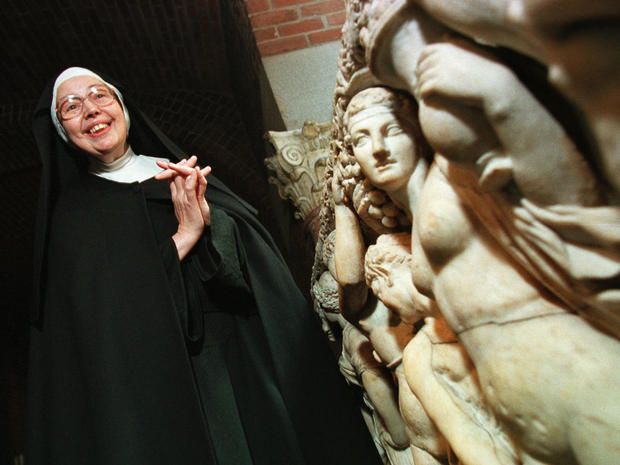
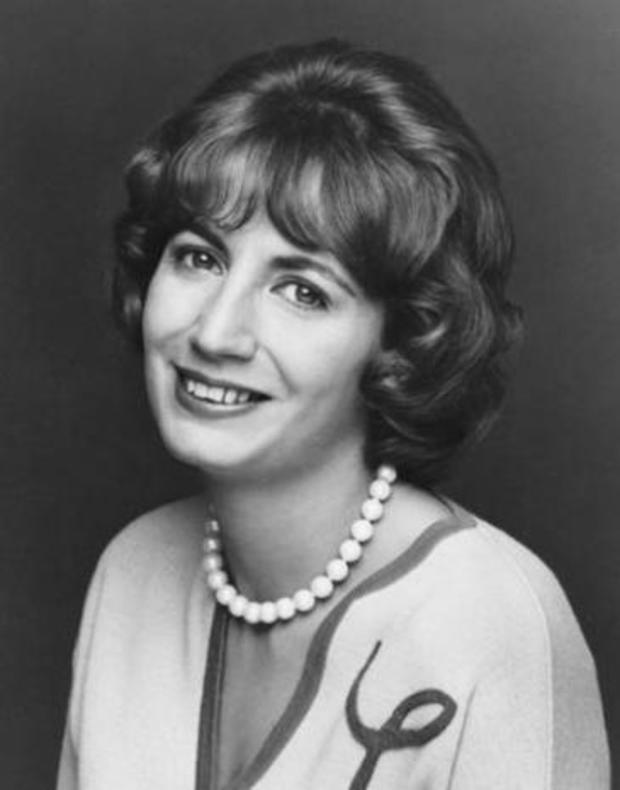
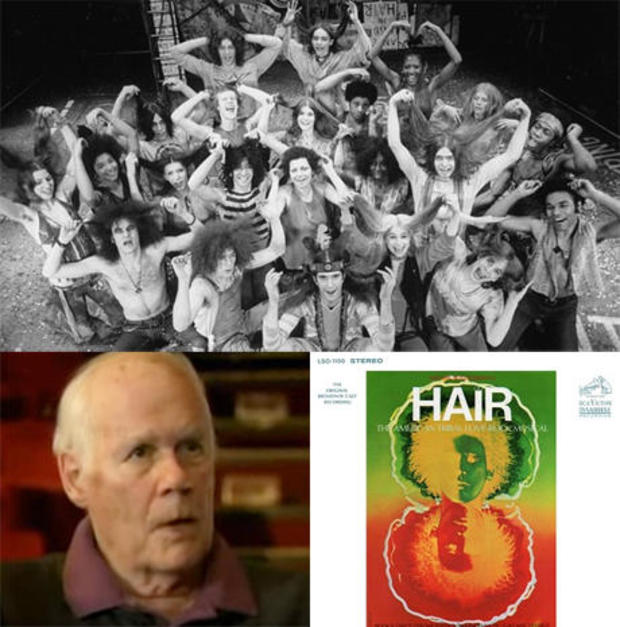
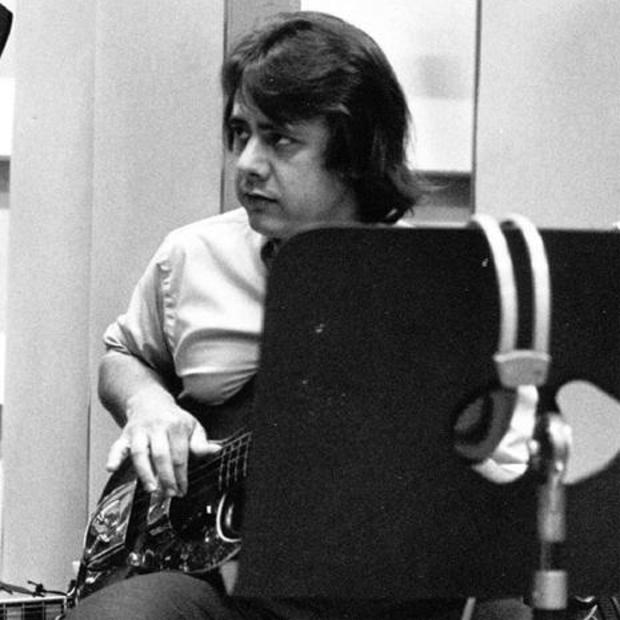
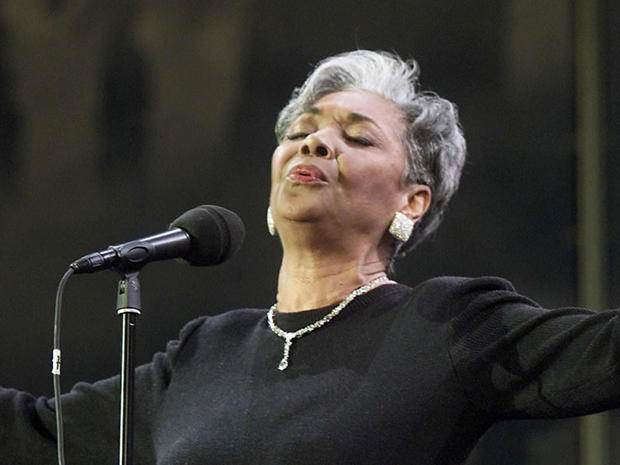
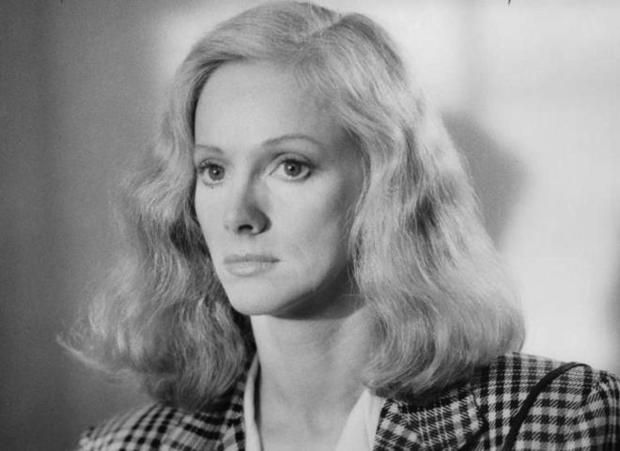
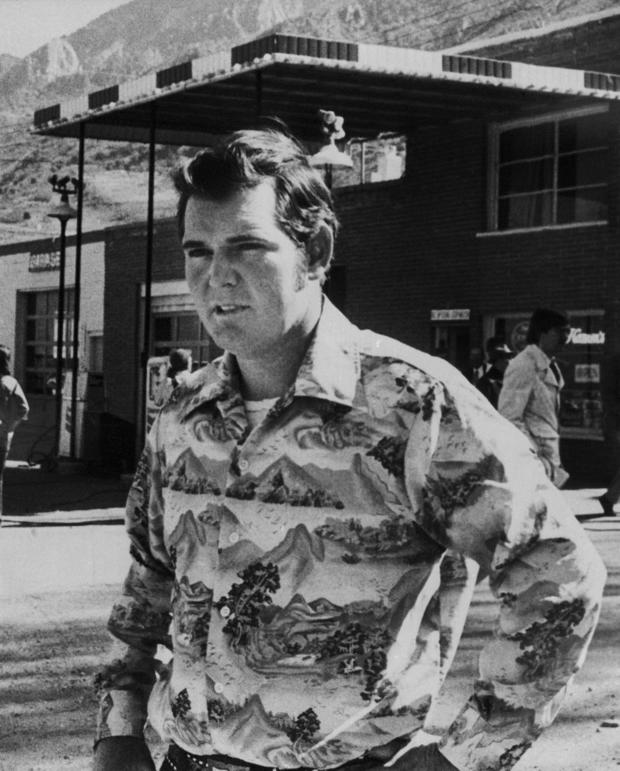

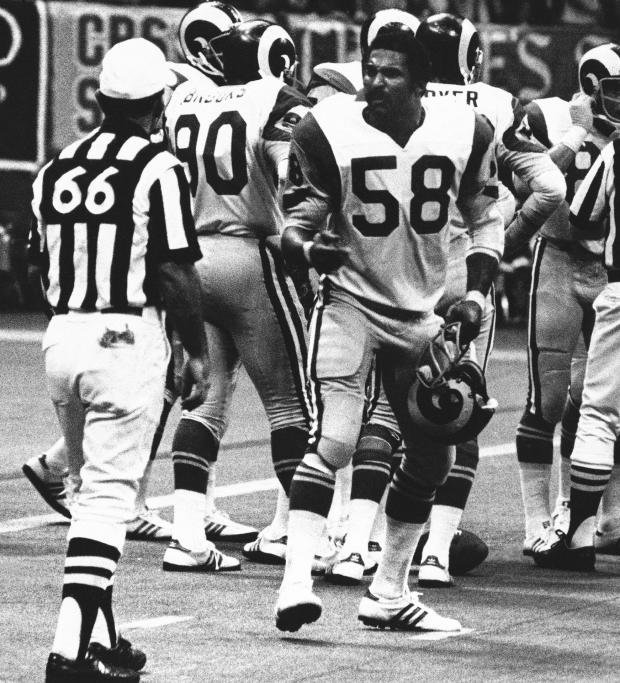
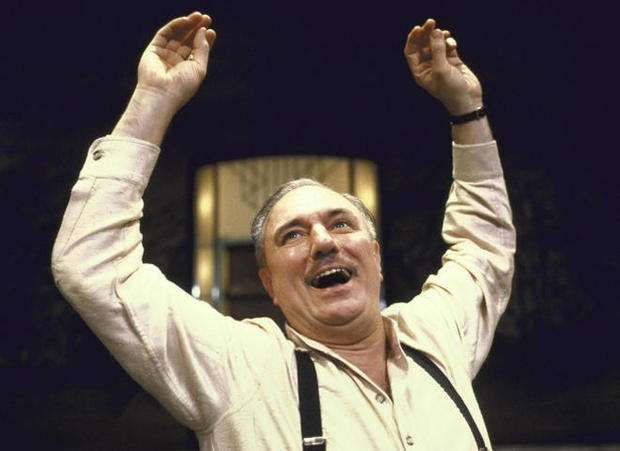
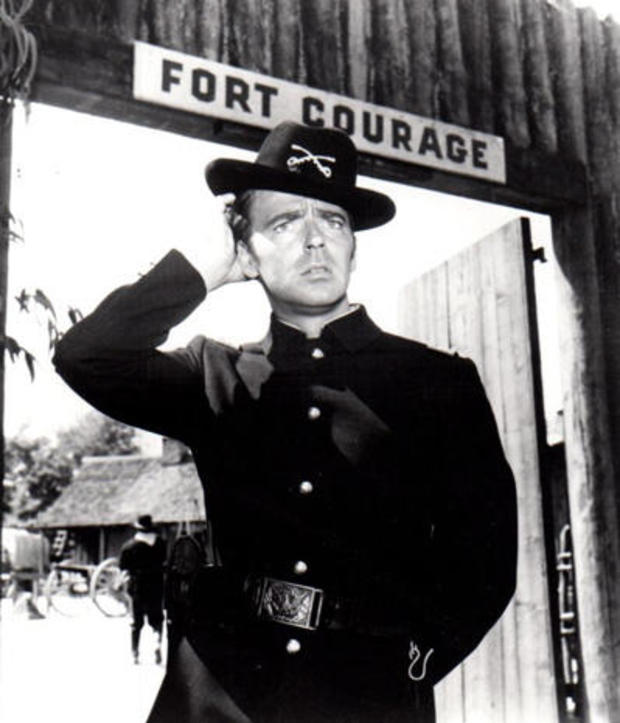
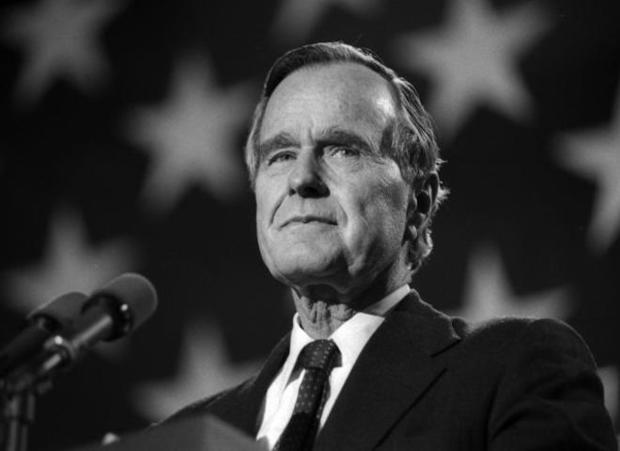
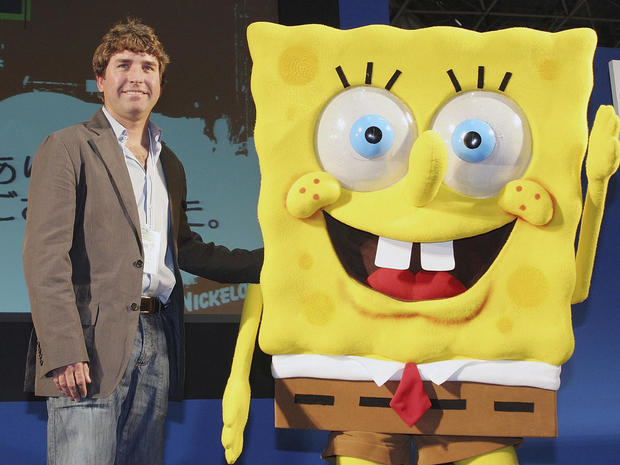
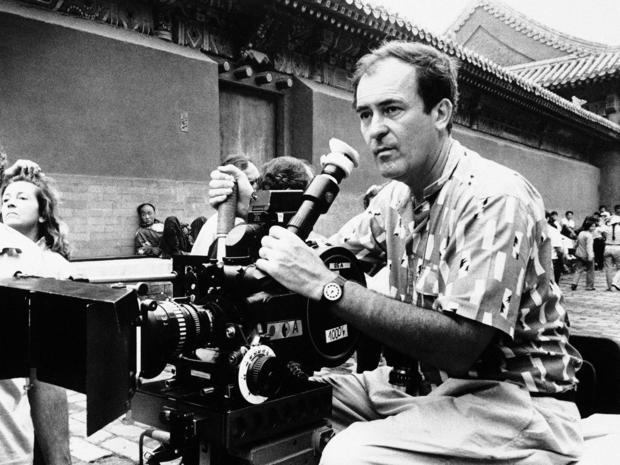
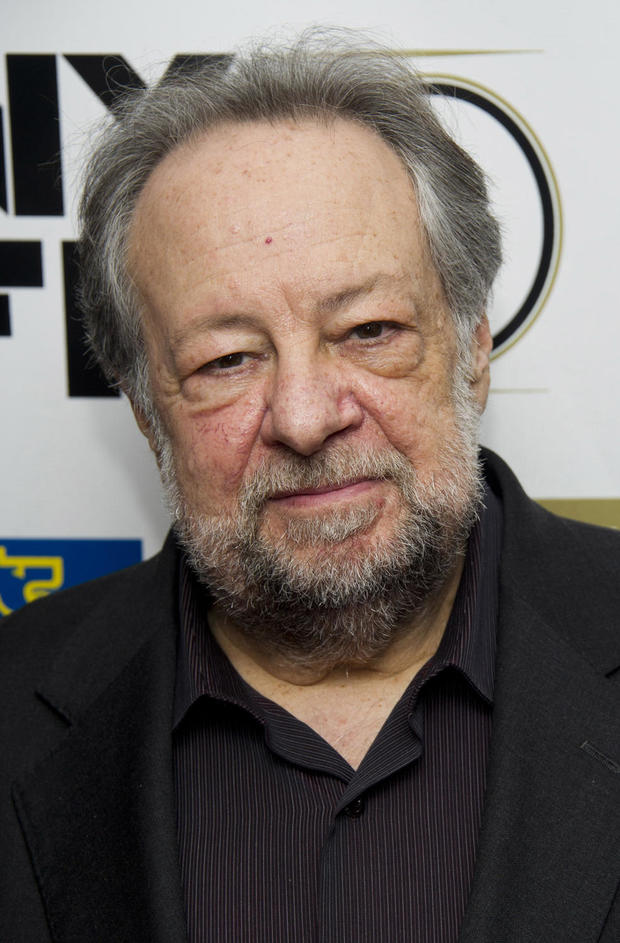
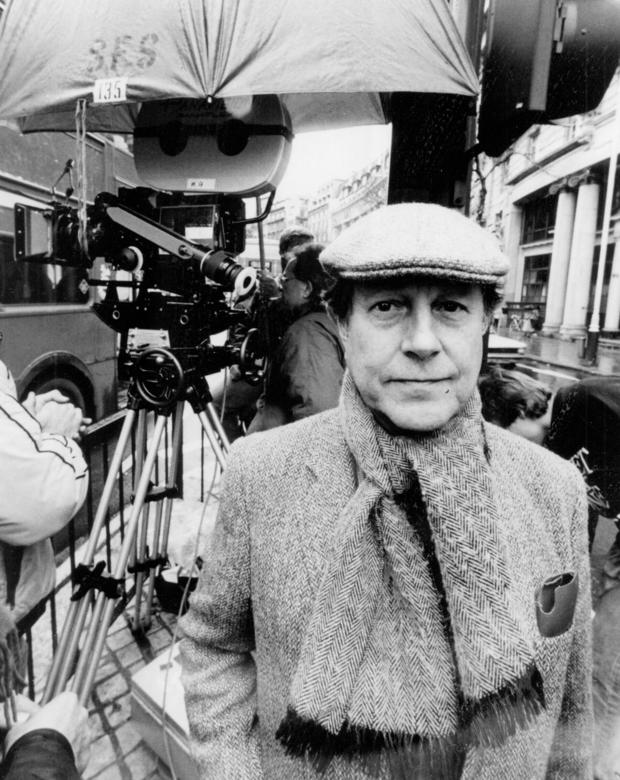
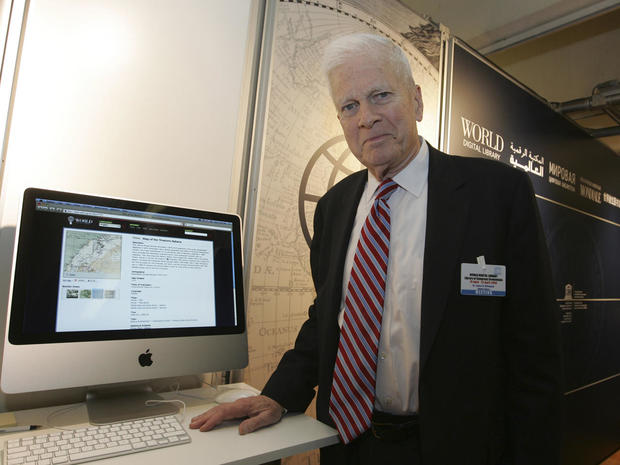
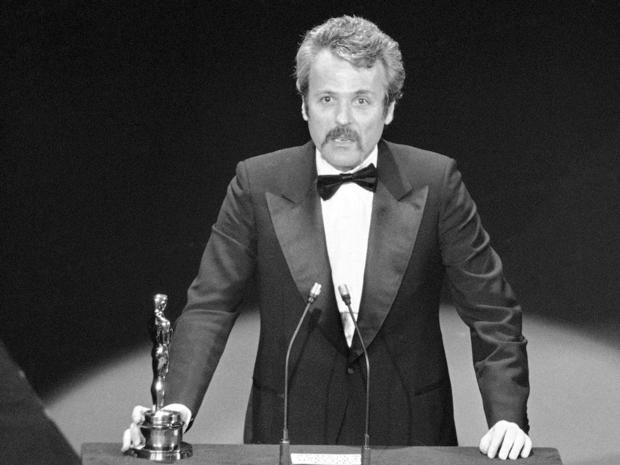
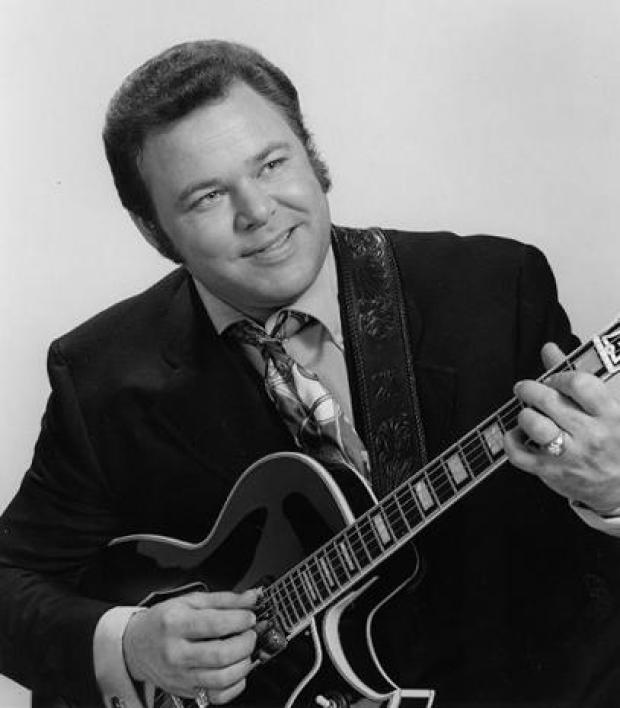
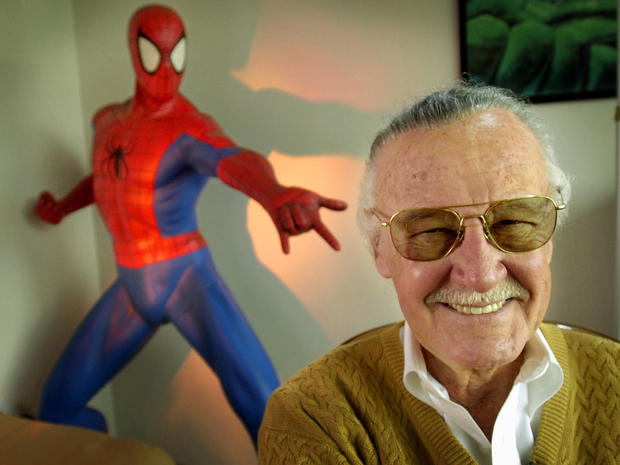
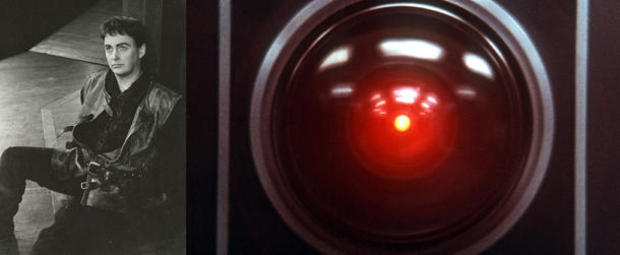

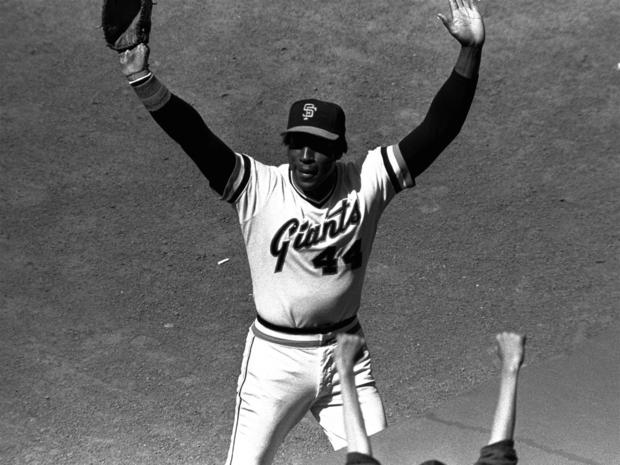

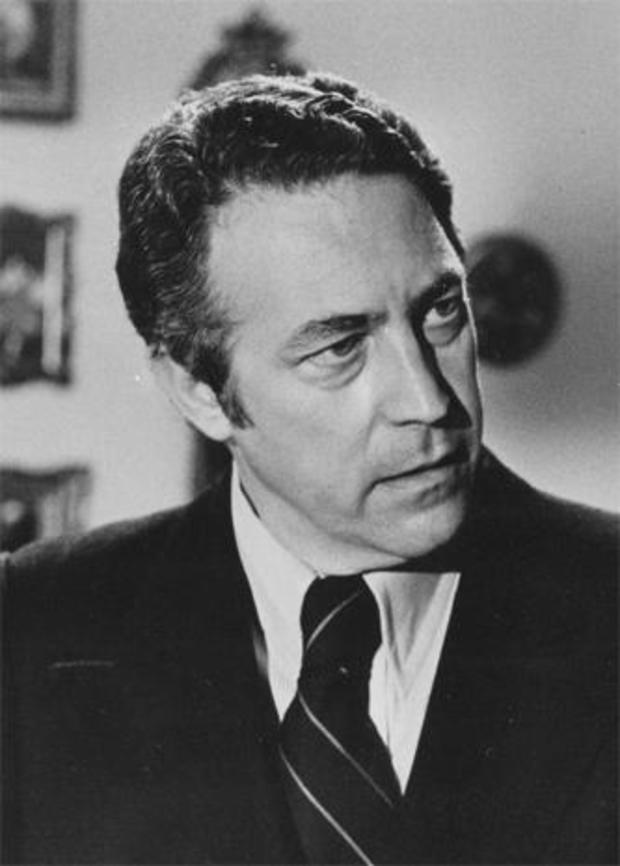
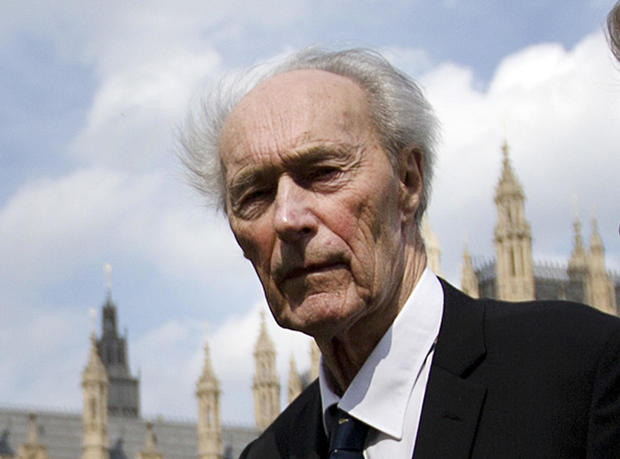
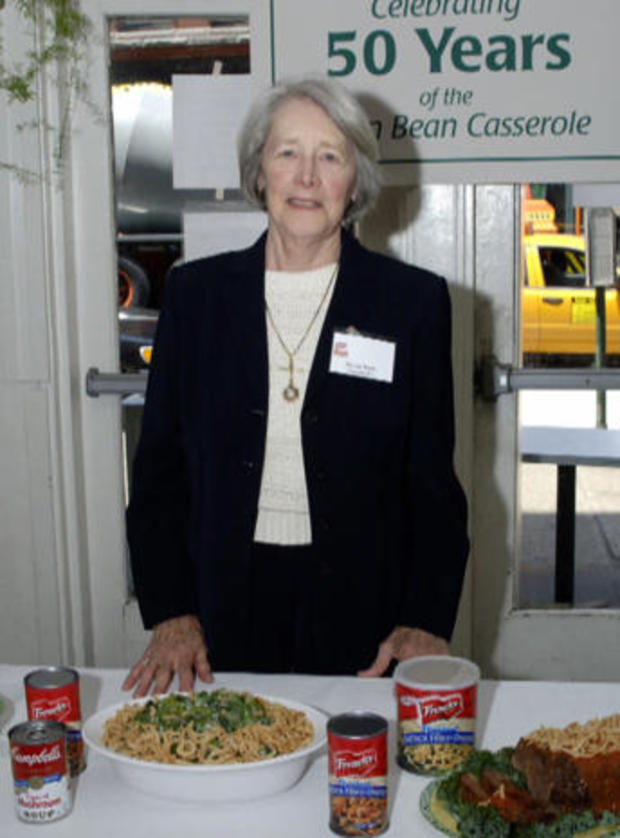
.jpg?v=1d6c78a71b7b6252b543a329b3a5744d#)
